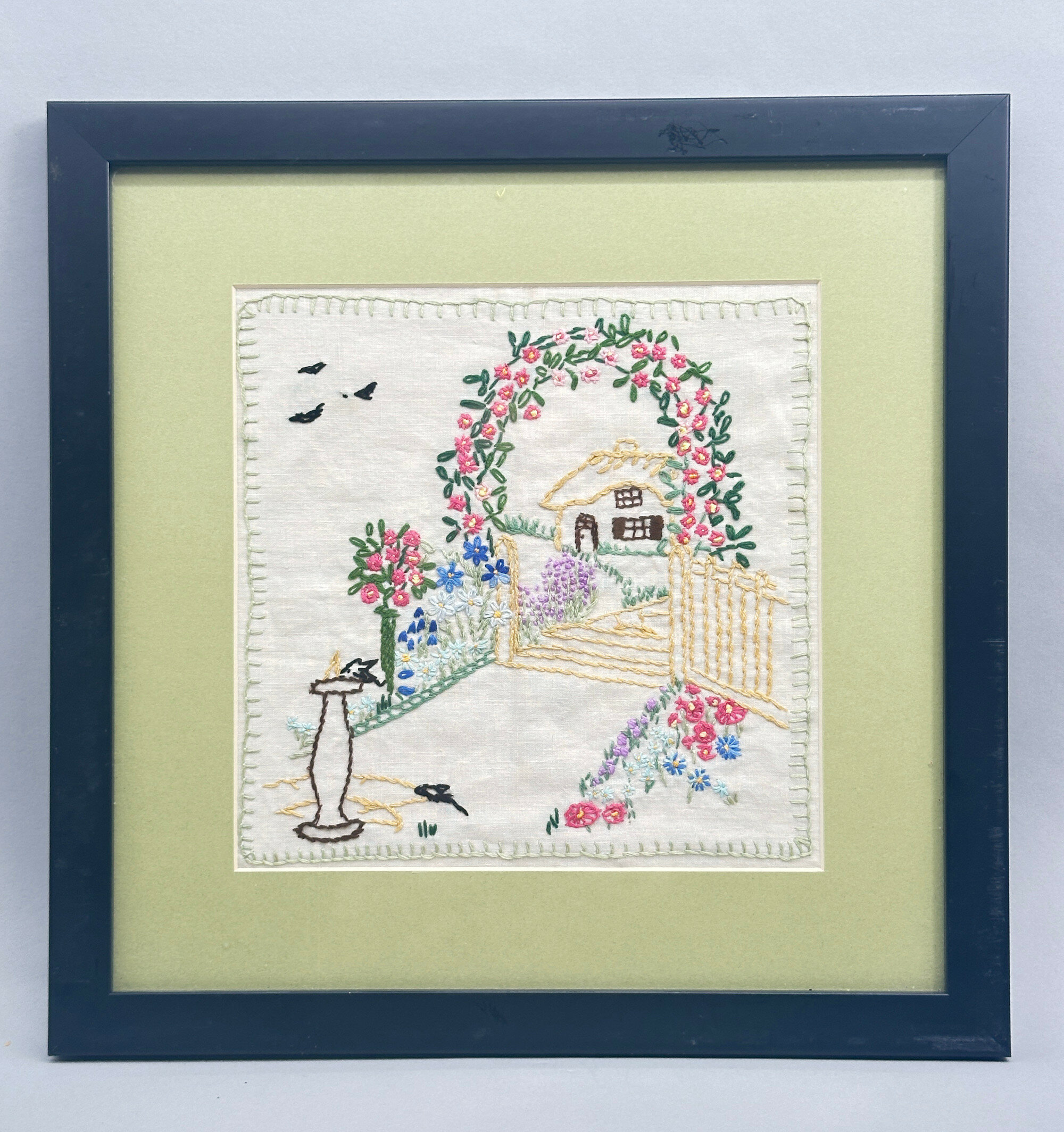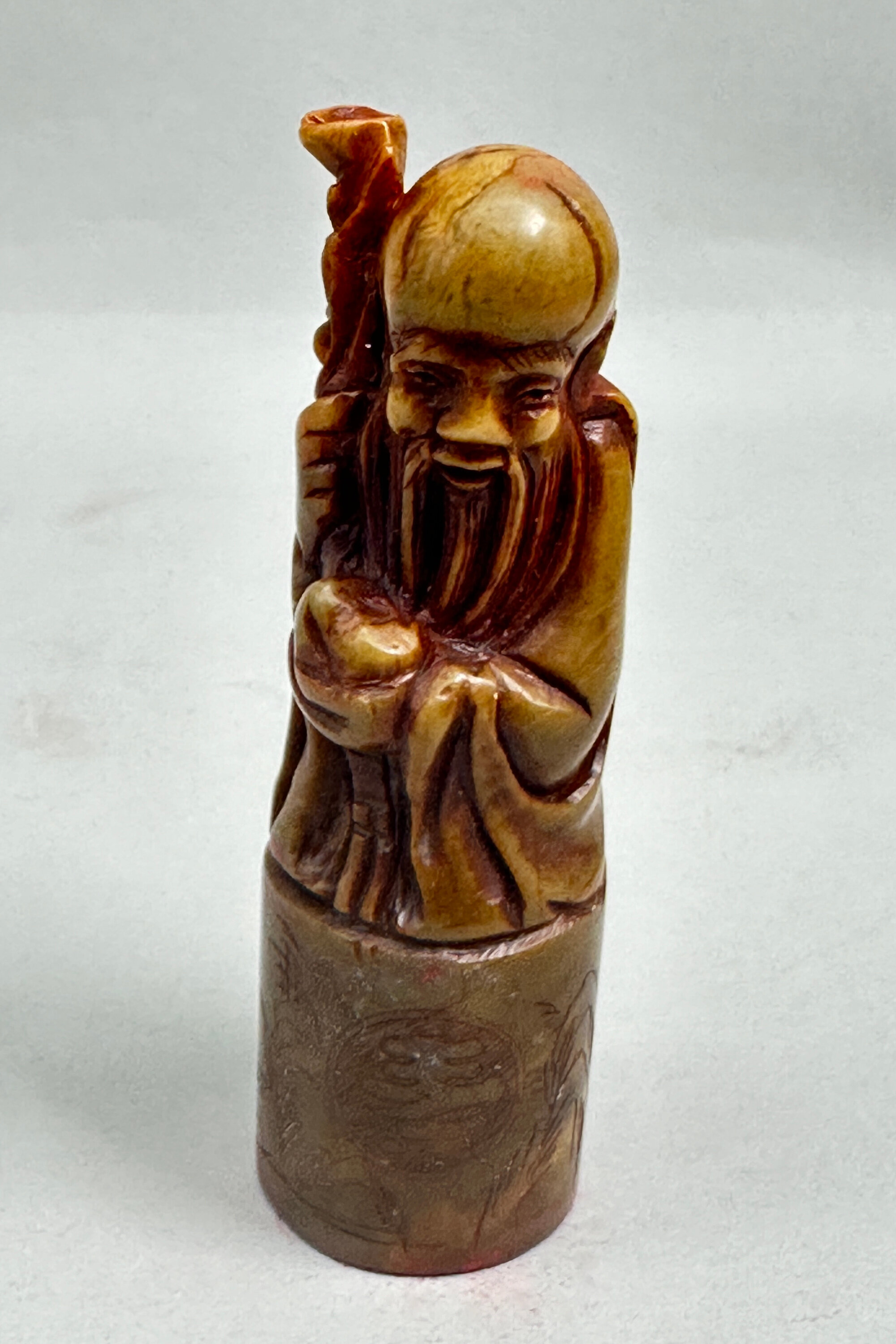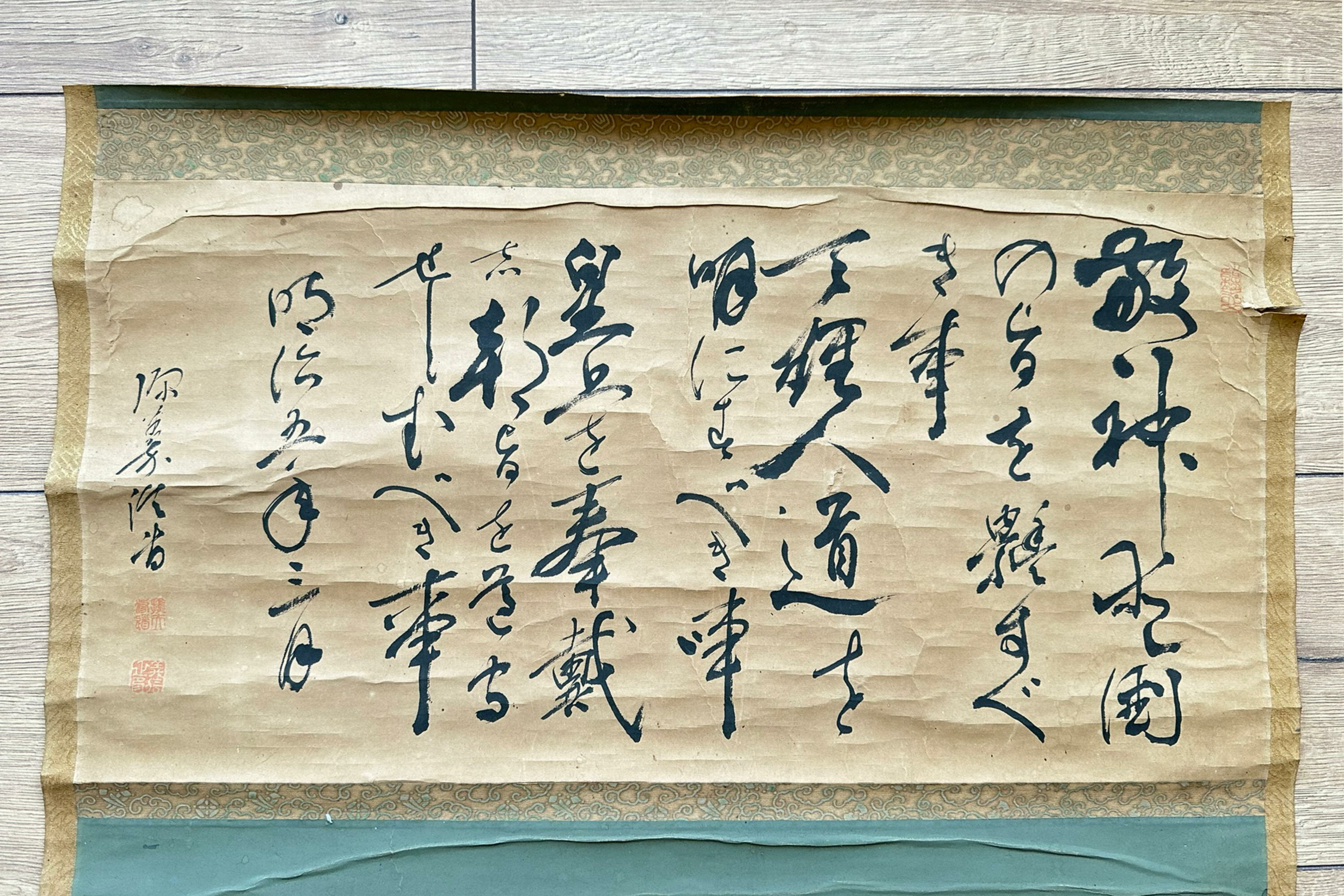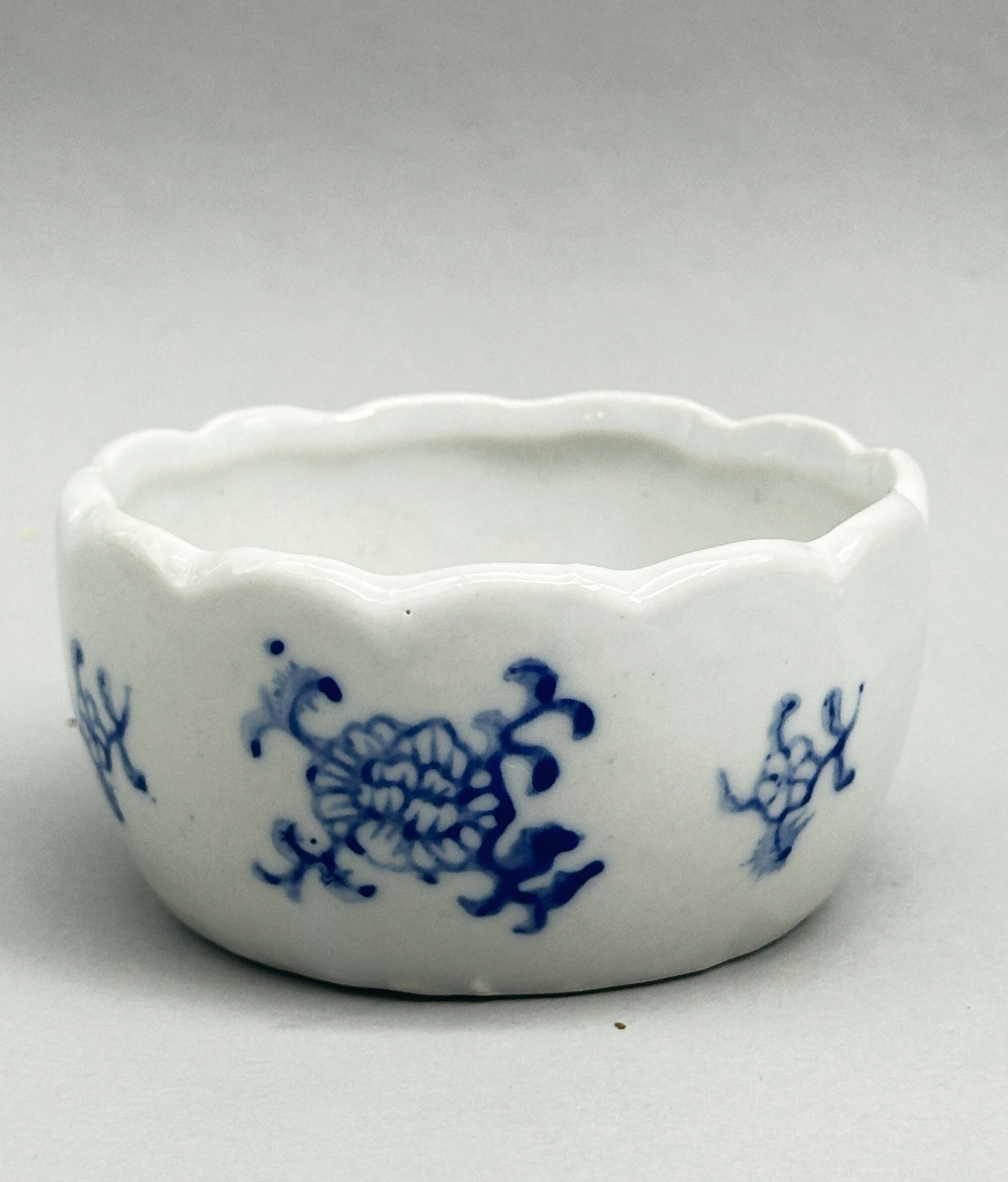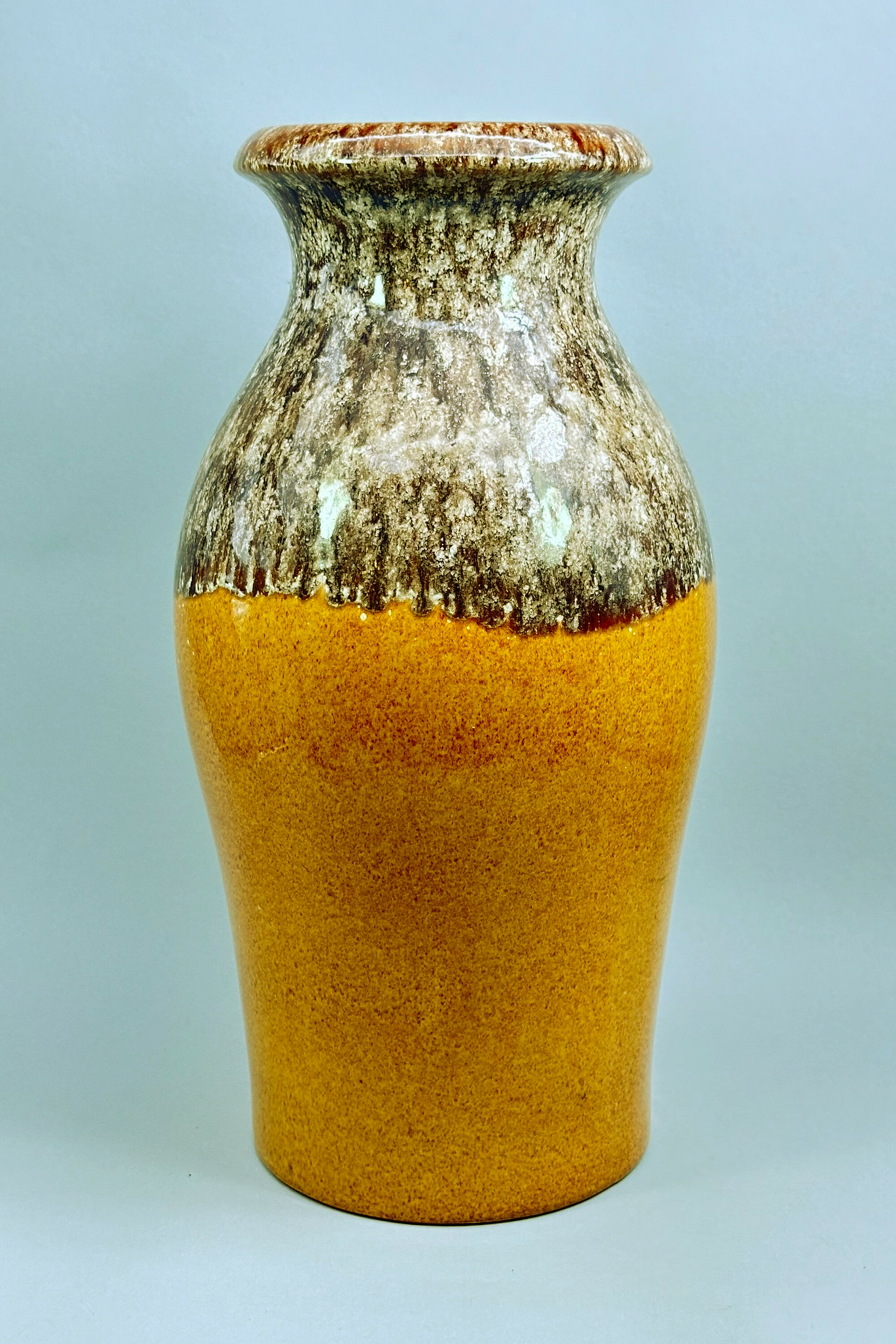
West German ceramic Vase, Scheurich, No 290-40, 1960s
Price: £55Although not marked as such, this vase has all the hallmarks of the firm Scheurich Keramik which started production in 1954, rather later than most of its competitors, but soon became the largest producer of commercial art pottery in Germany. Their pieces rarely carried the factory name but usually the model number followed by the height in centimetres with ‘W.Germany’ below, as here. Scheurich were well known for producing a wide variety of pieces with variegated, almost experimental glazes and this vase is yet another successful example of their work, the simple lines of form combining with a more austere selection of glaze effects than found in some of their other pieces. Dating is to the 1960s.
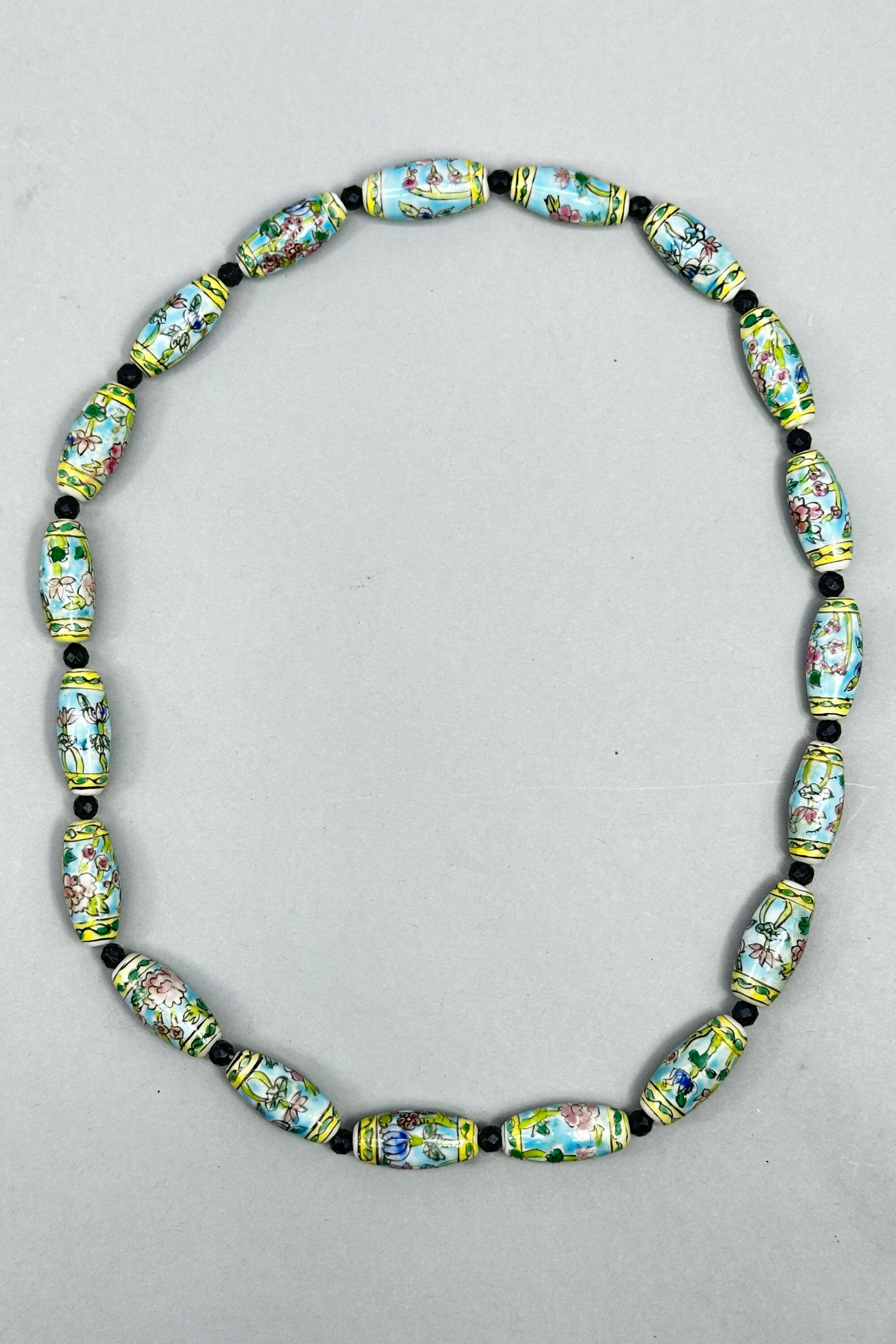
Strand of Chinese ceramic beads c1950
Price: £25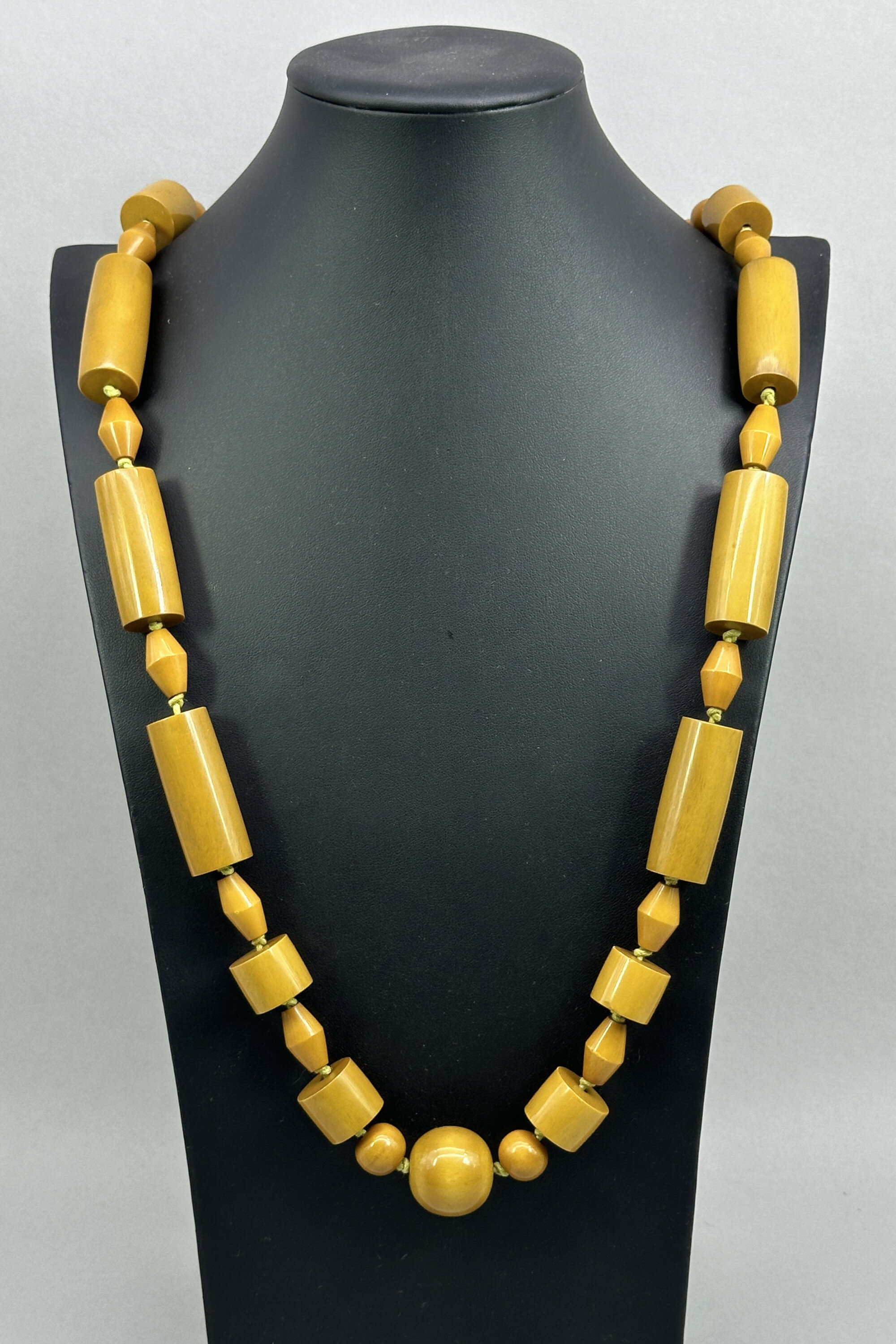
Art Deco Catalin Bakelite necklace, American c1930
Price: £125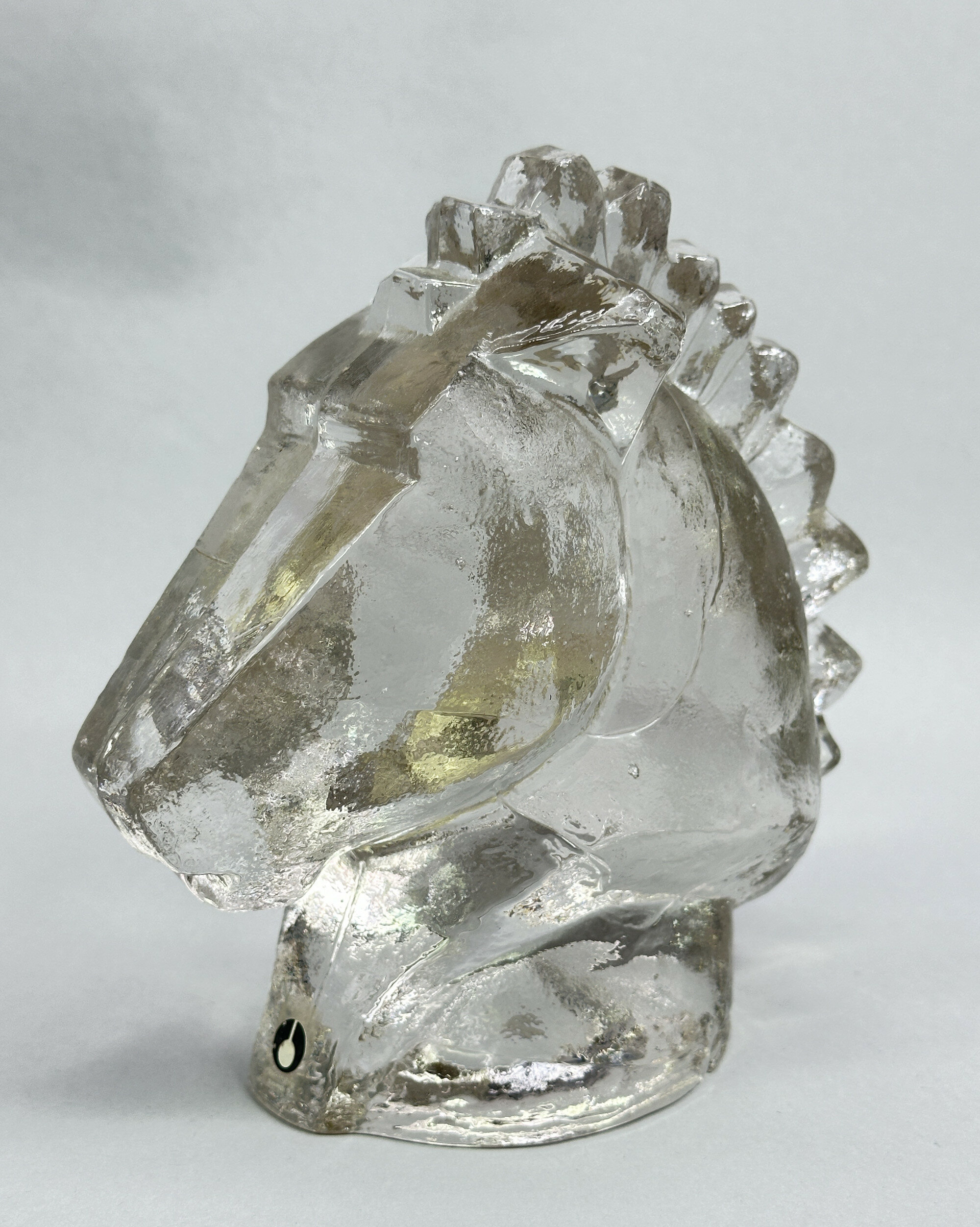
Pukeberg Glass Horse Head with label, 1970s
Price: £55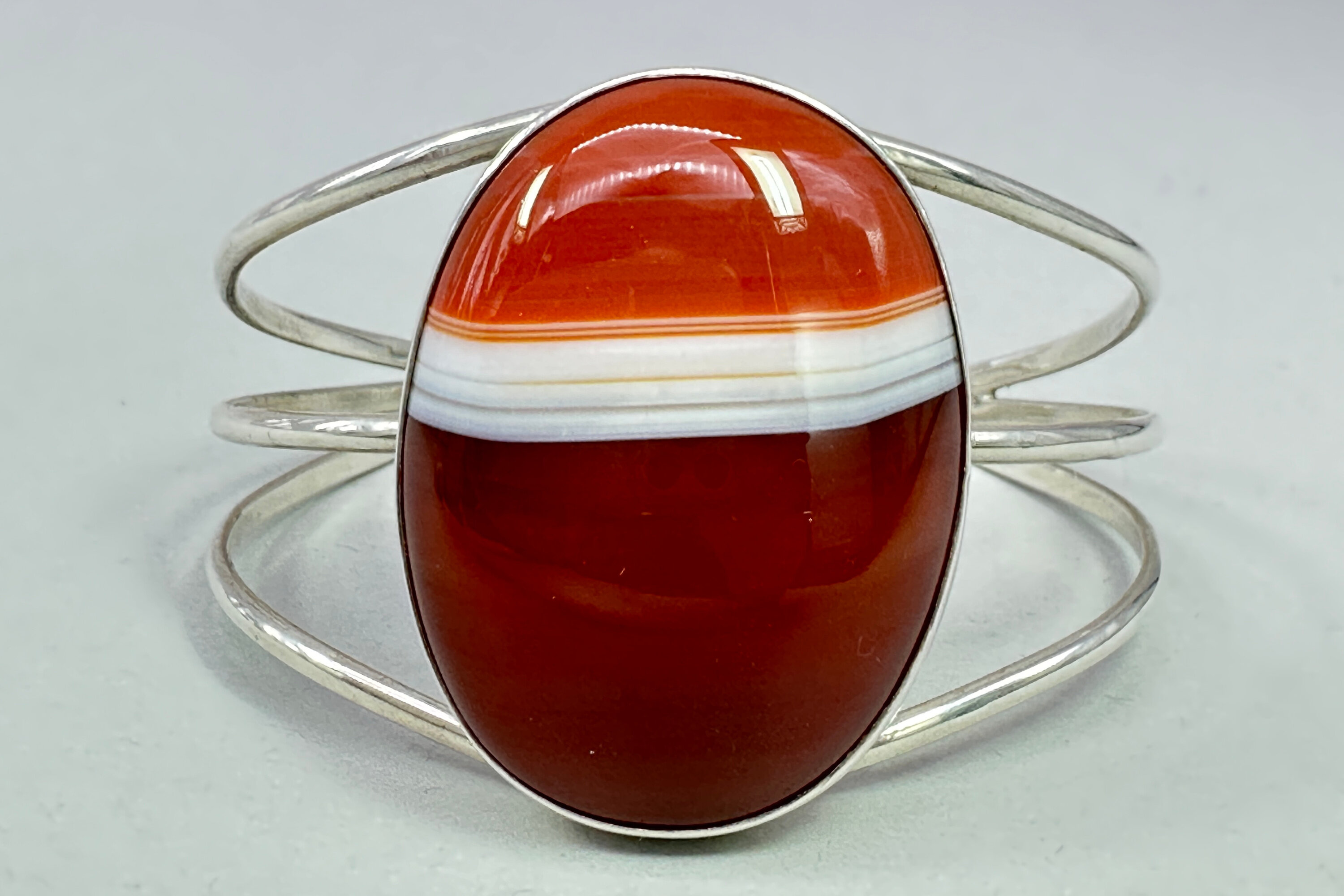
Silver cuff bracelet set with Scottish banded carnelian stone, Birmingham 1975
Price: £85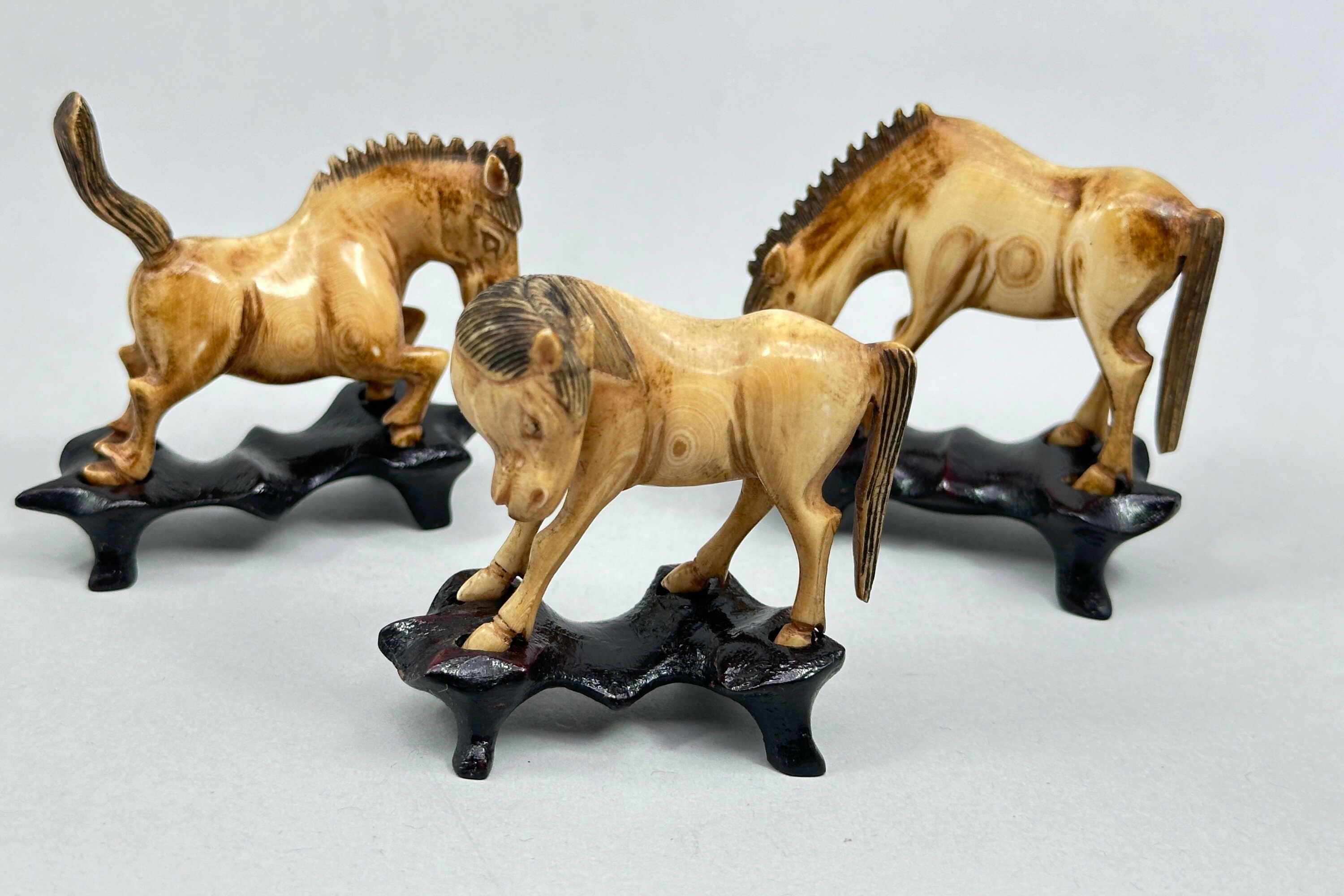
Group of Three Chinese carved bone Horses with wood stands, probably mid C20th
Price: £30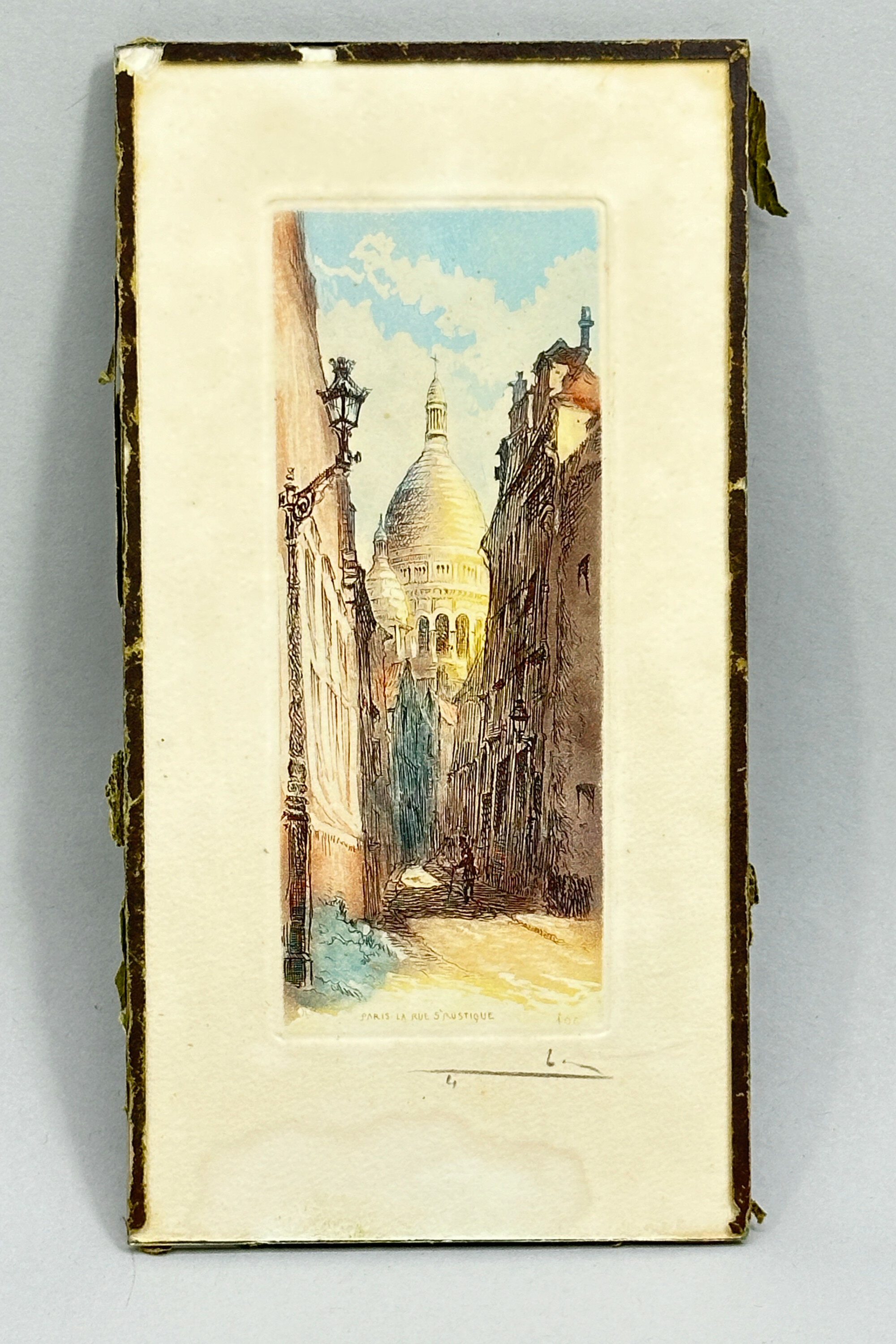
French Orientalist etching aquatint - Paris La Rue Saint Rustique
Price: £35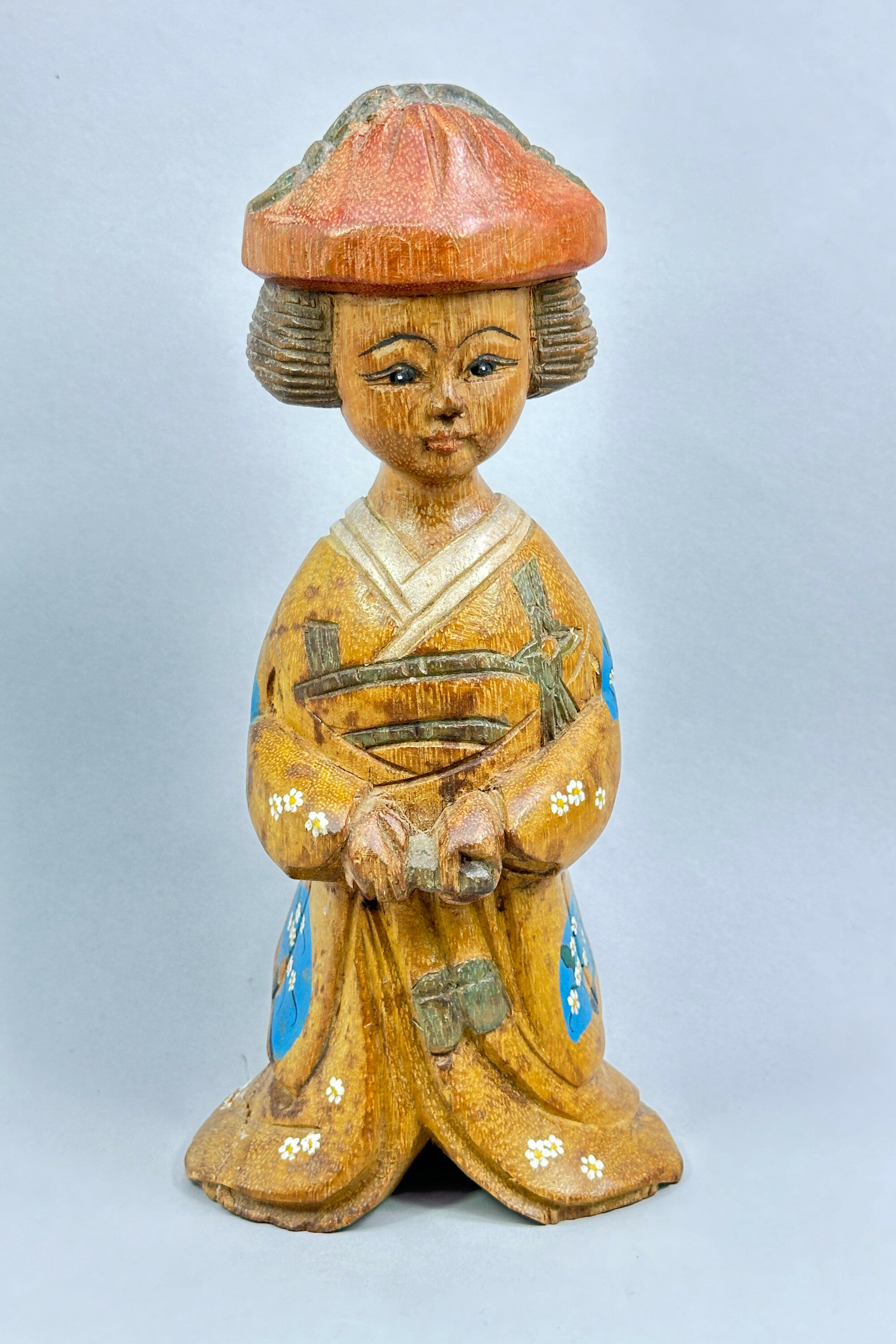
Japanese Carved Wood Figure of a Young girl, Kokeshi doll style, C20th
Price: £45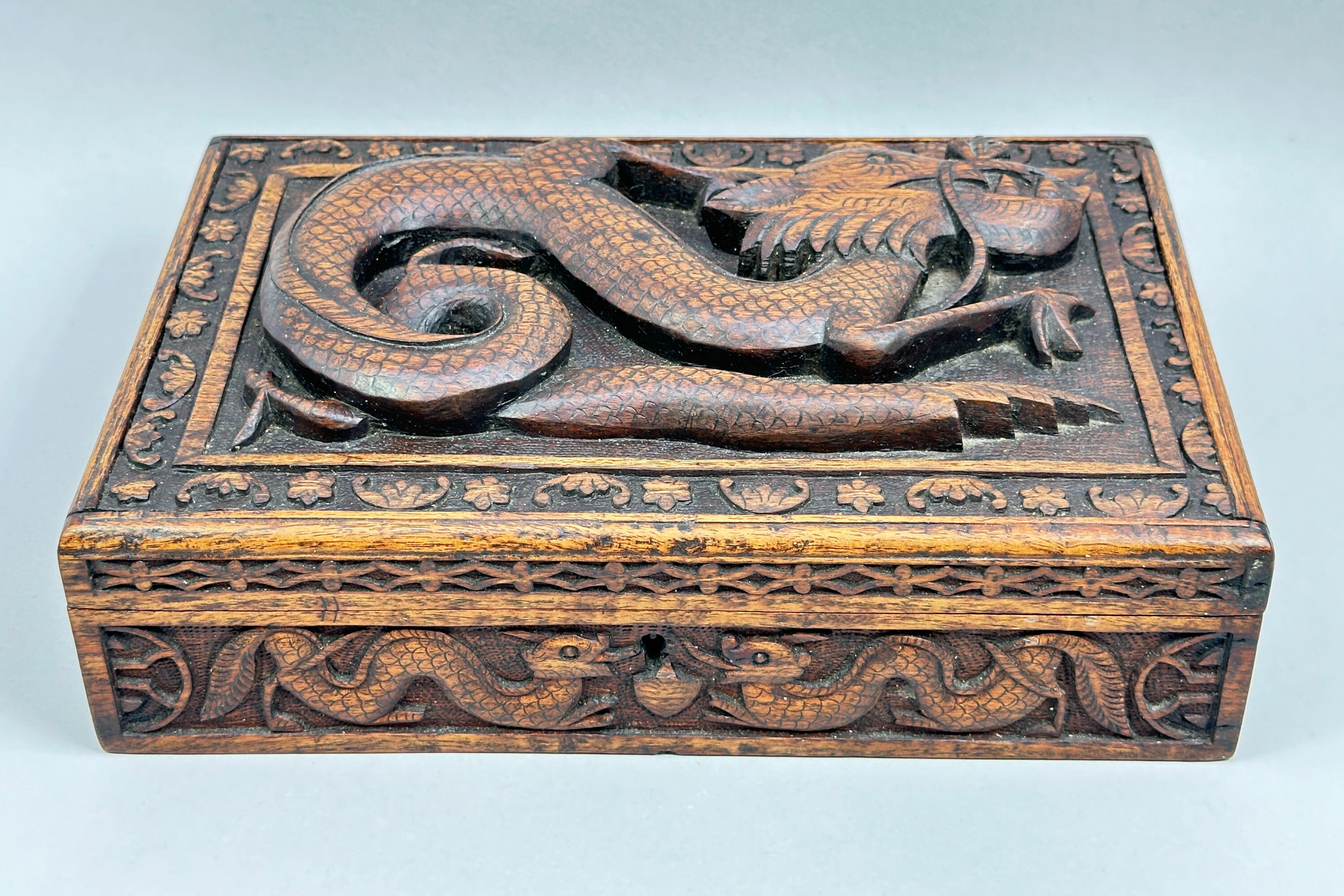
Chinese carved wood Box decorated Dragons, early C20th
Price: £150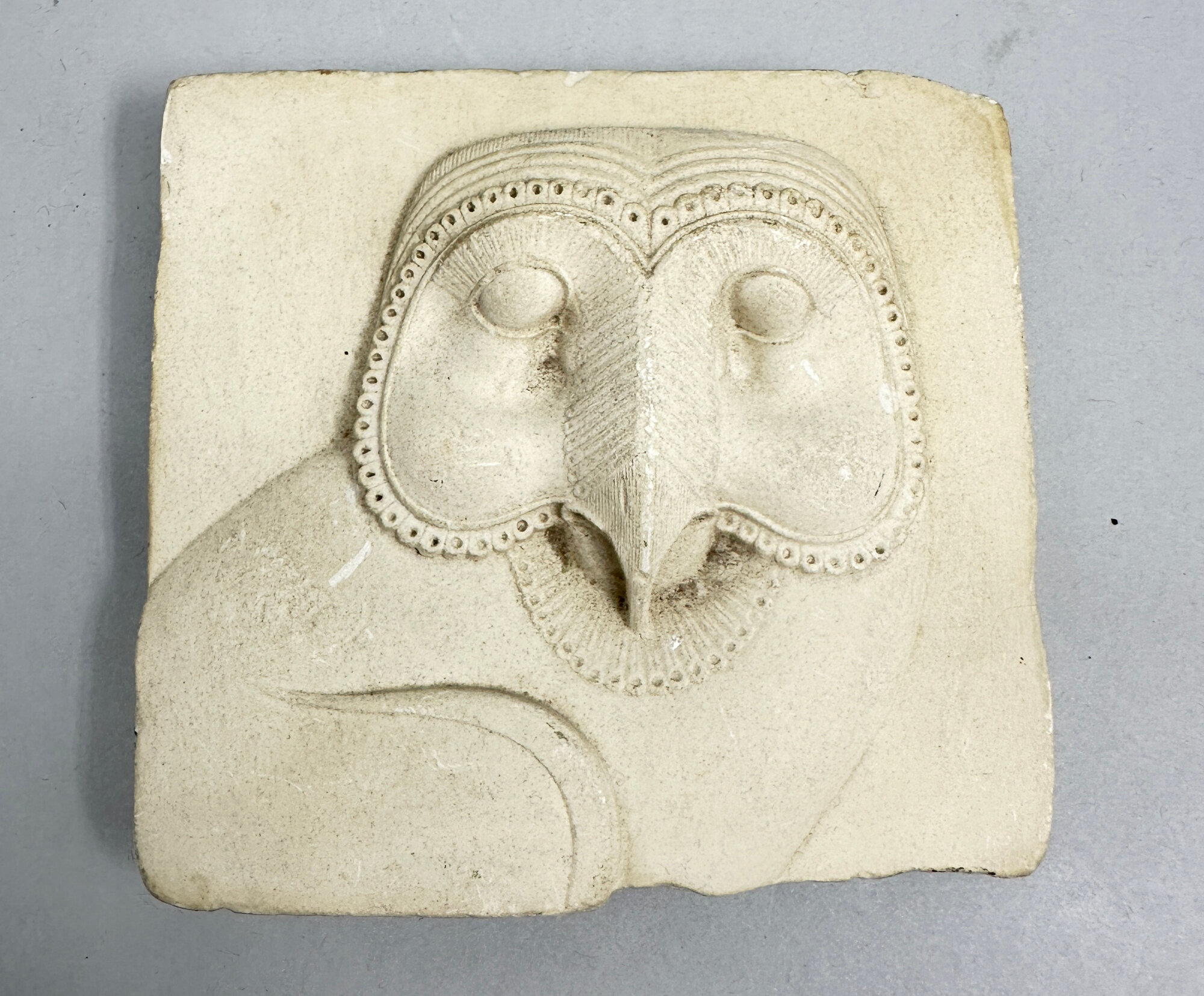
Metropolitan Museum of Art Egyptian Hieroglyphic wall plaque c2000
Price: £20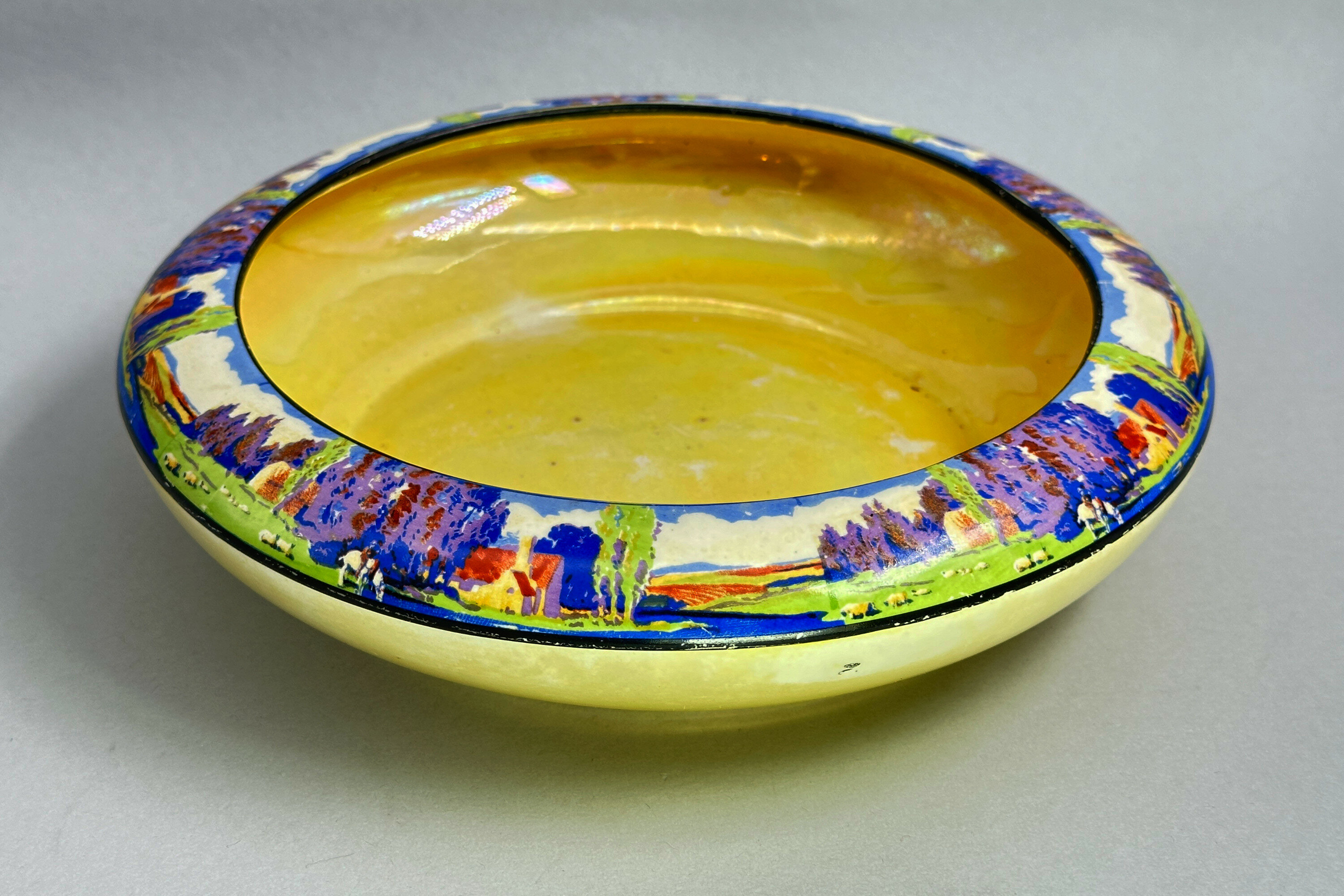
Hanley Ware circular bowl, Lancaster and Sons, 1920s
Price: £25Lancaster & Sons Ltd were manufacturers of earthenware at the Dresden works, Tinkersclough, in the Shelton area of Hanley, Stoke-on-Trent, England. The firm was founded in 1899 under the name ‘Lancaster and Barker’ was renamed ‘Lancaster & Sons Ltd’ in the early 1900s and continued production until 1944. In the 1920s they produced various pieces with rural landscape scenes of which this is an example. Some see reminiscences of the ‘Arts and Crafts’ movement here but the mark found on the bottom clearly dates the piece to the 1920s. The yellow lustre glaze is interesting and free from the crazing sometimes found.

Victorian Rolled Gold Necklace with Pendants, late C19th
Price: £45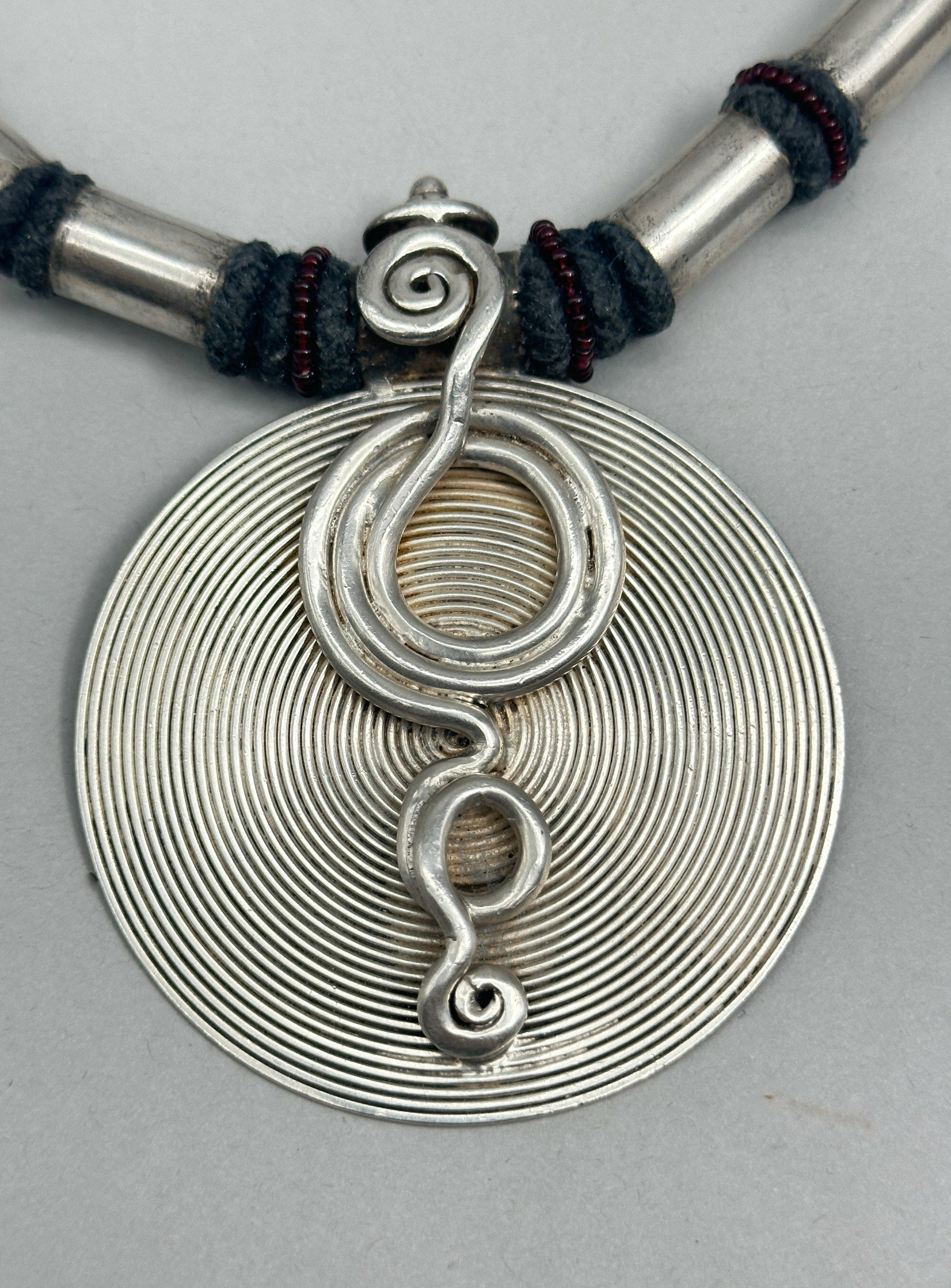
Indian tribal necklace, 19th century
Price: £175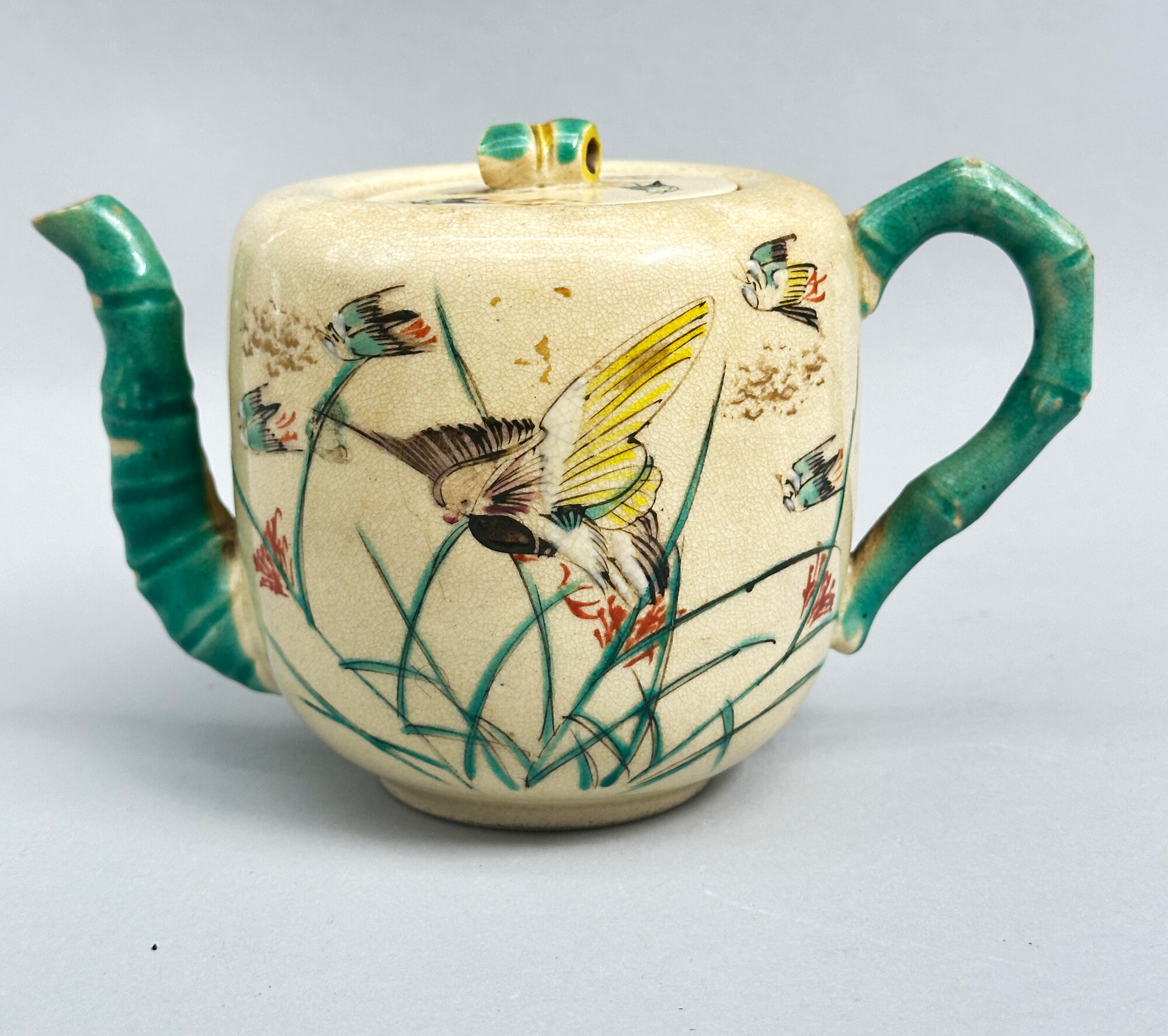
Japanese Awata ware Teapot and Cover, signed, circa 1900
Price: £25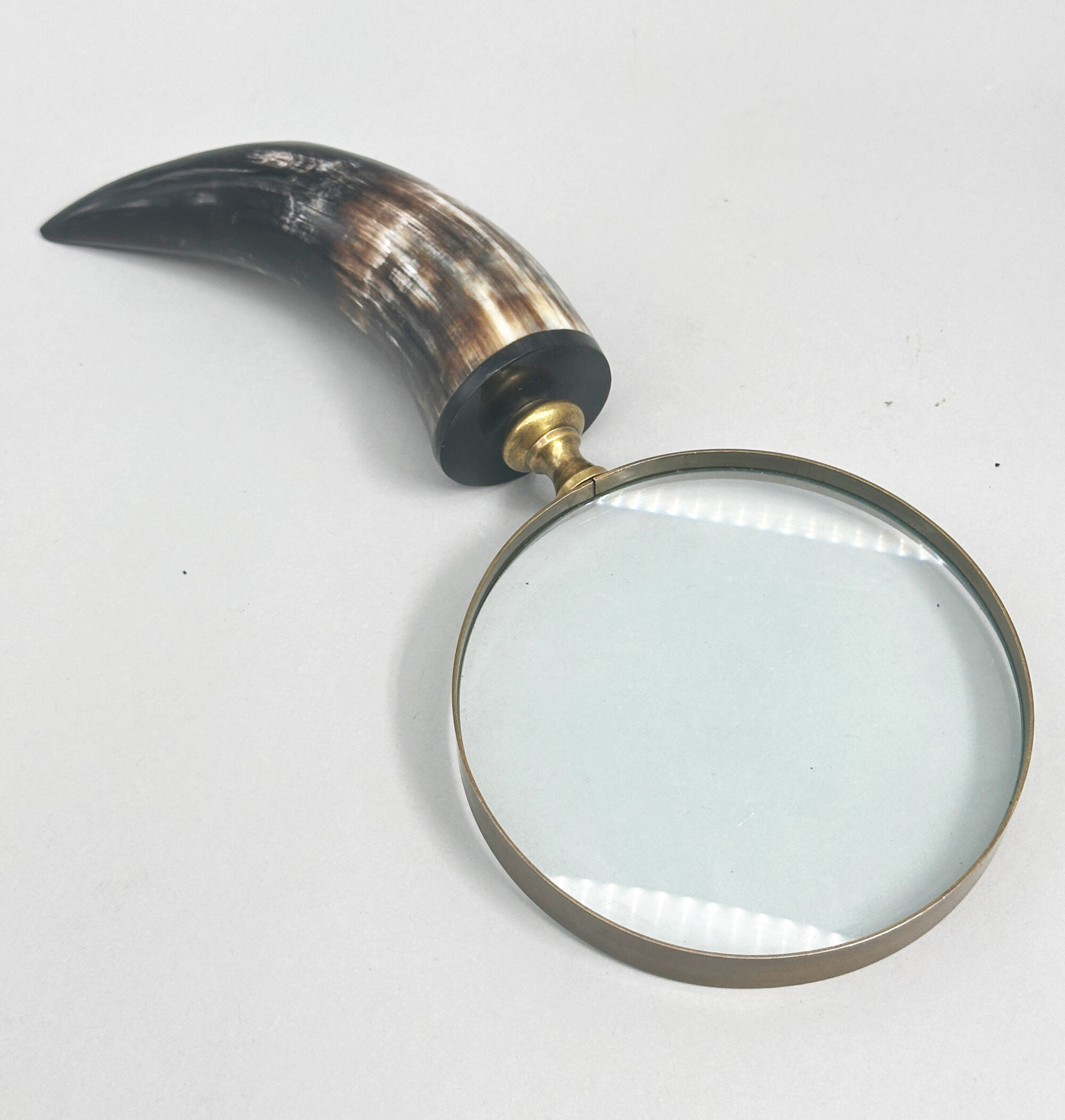
Edwardian large text magnifying glass with horn handle, early C20th
Estimate: £30 – 40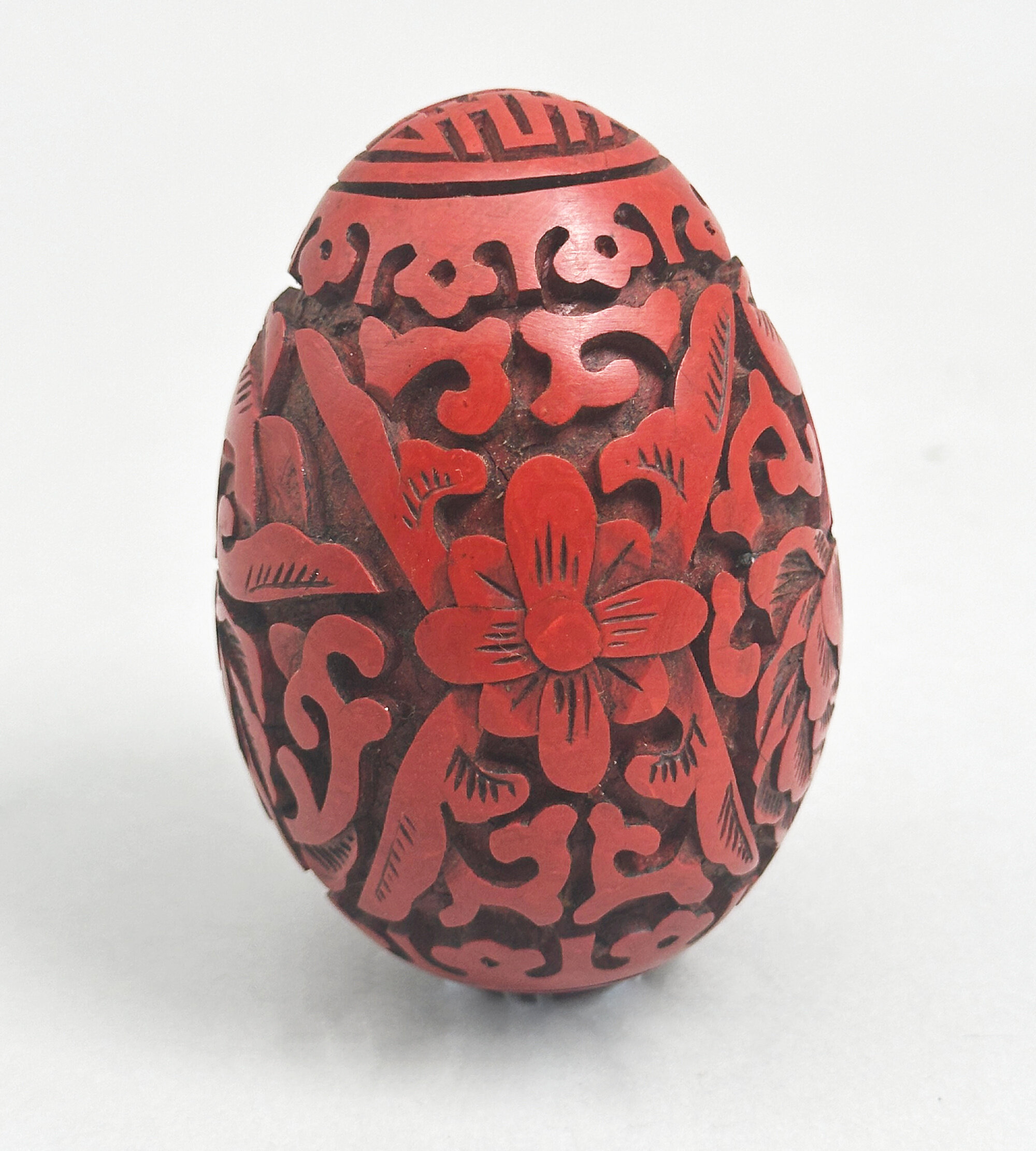
Chinese Cinnabar Lacquer Egg, C20th
Price: £55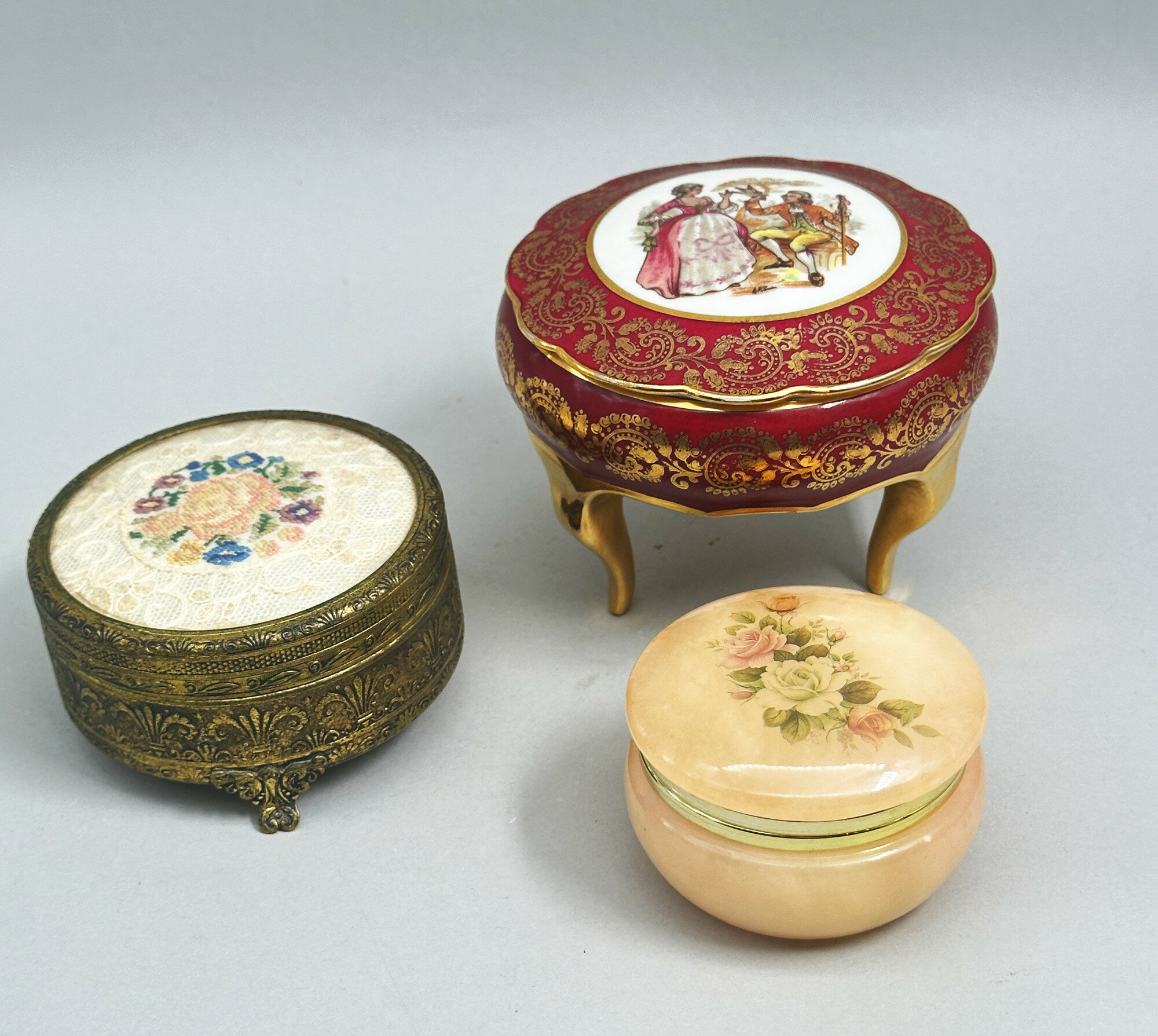
Three Powder Boxes, gilt metal, alabaster and porcelain, mid C20th
Price: £45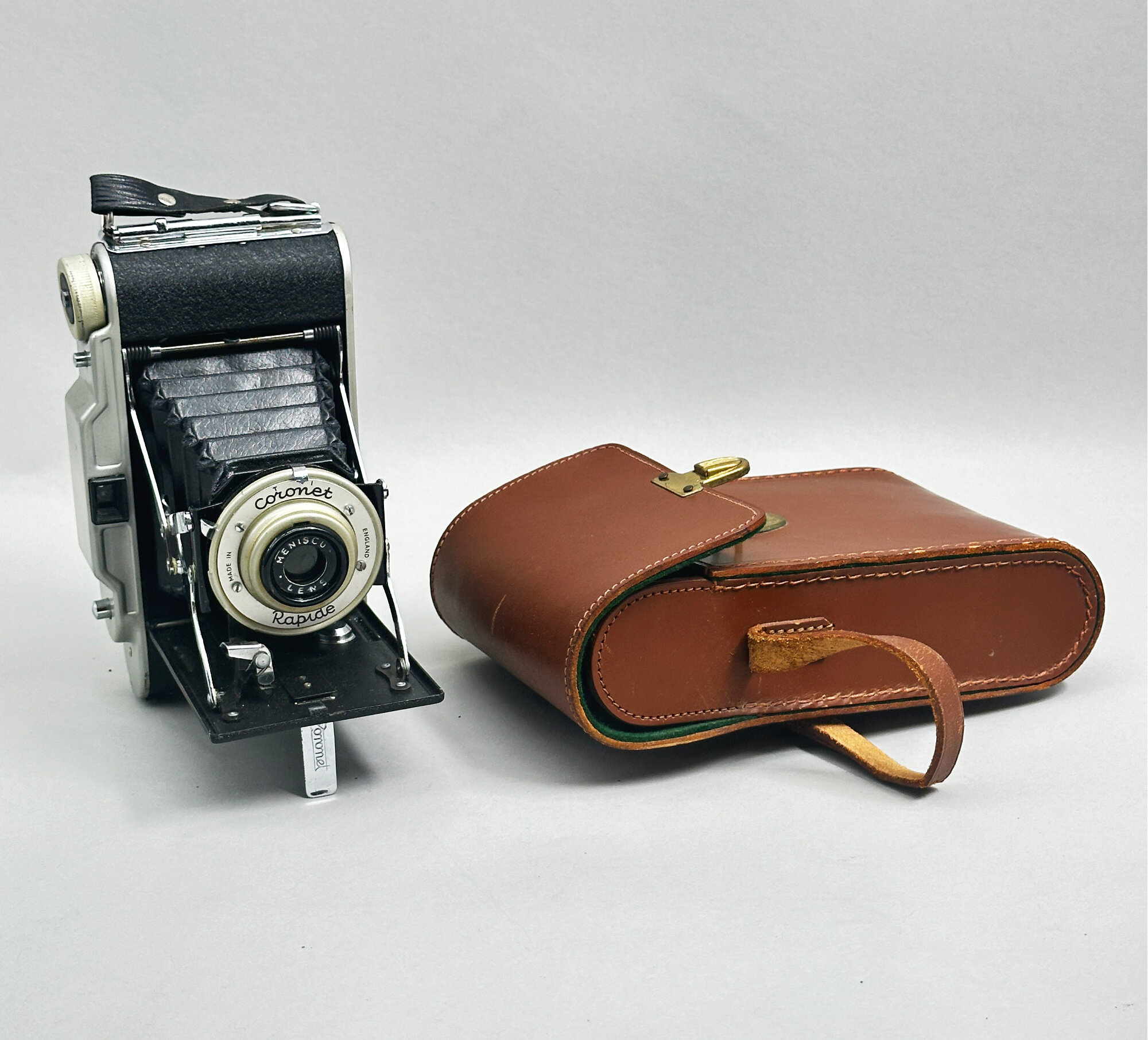
Mint Coronet Rapid camera with case 1950s
Price: £45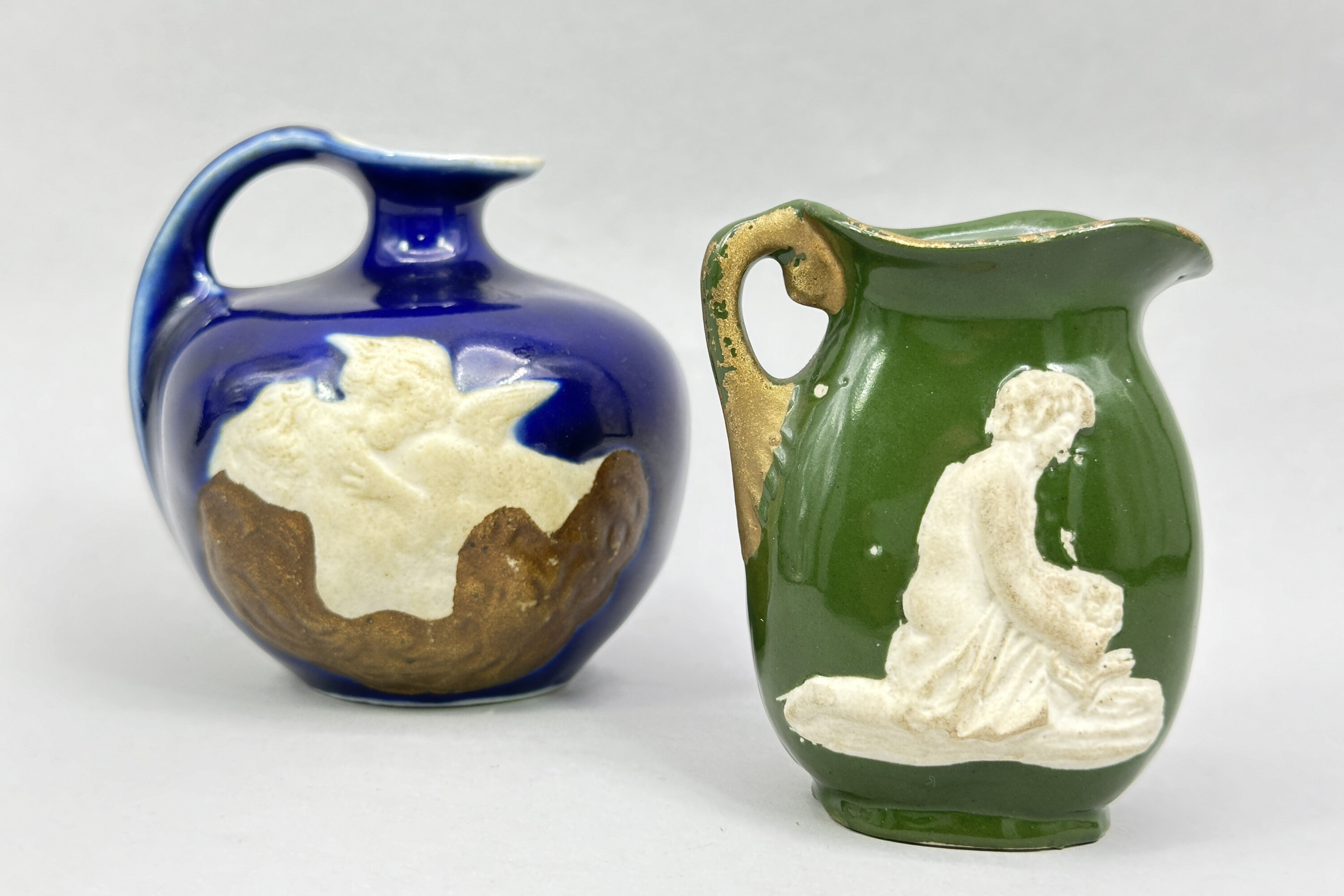
Two Ceramic Jugs with Erotic Decoration, continental perhaps German, circa 1900
Price: £25These pieces represent something of a puzzle. Seen the right way round (with the handle on the right) they are plain and the decoration only reveals itself on the reverse. This suggests a playful intent to conceal which, when combined with the subject matter, suggests something a bit ‘naughty’ which could confirm the second interpretation of what the seated man is holding! The paste, and general style of the pieces, looks continental and a German origin might be a good guess, but no more than that. The blue glazed jug has an impressed mark to the base ‘186 [plus an unidentifiable number]’ which might be the date but is more likely the pattern number; a dating of around 1900 for both seems reasonable - certainly there is an ‘old’ look to the pieces. There are one or two similar examples but little in the way of firm information. One for a collector to puzzle out!
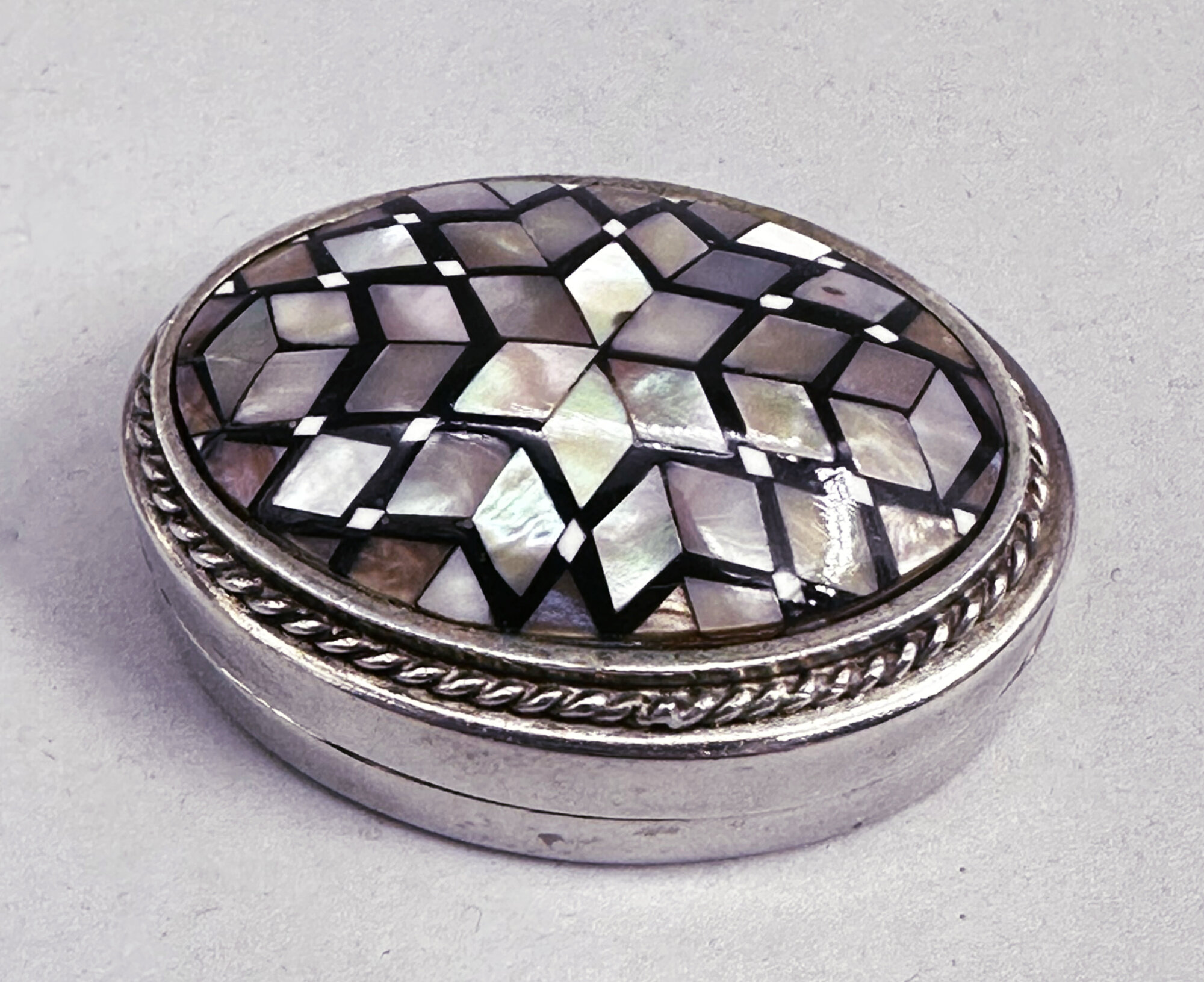
Egyptian Silver Pill Box with Mother of Pearl Inlay, marked, second half C20th
Price: £45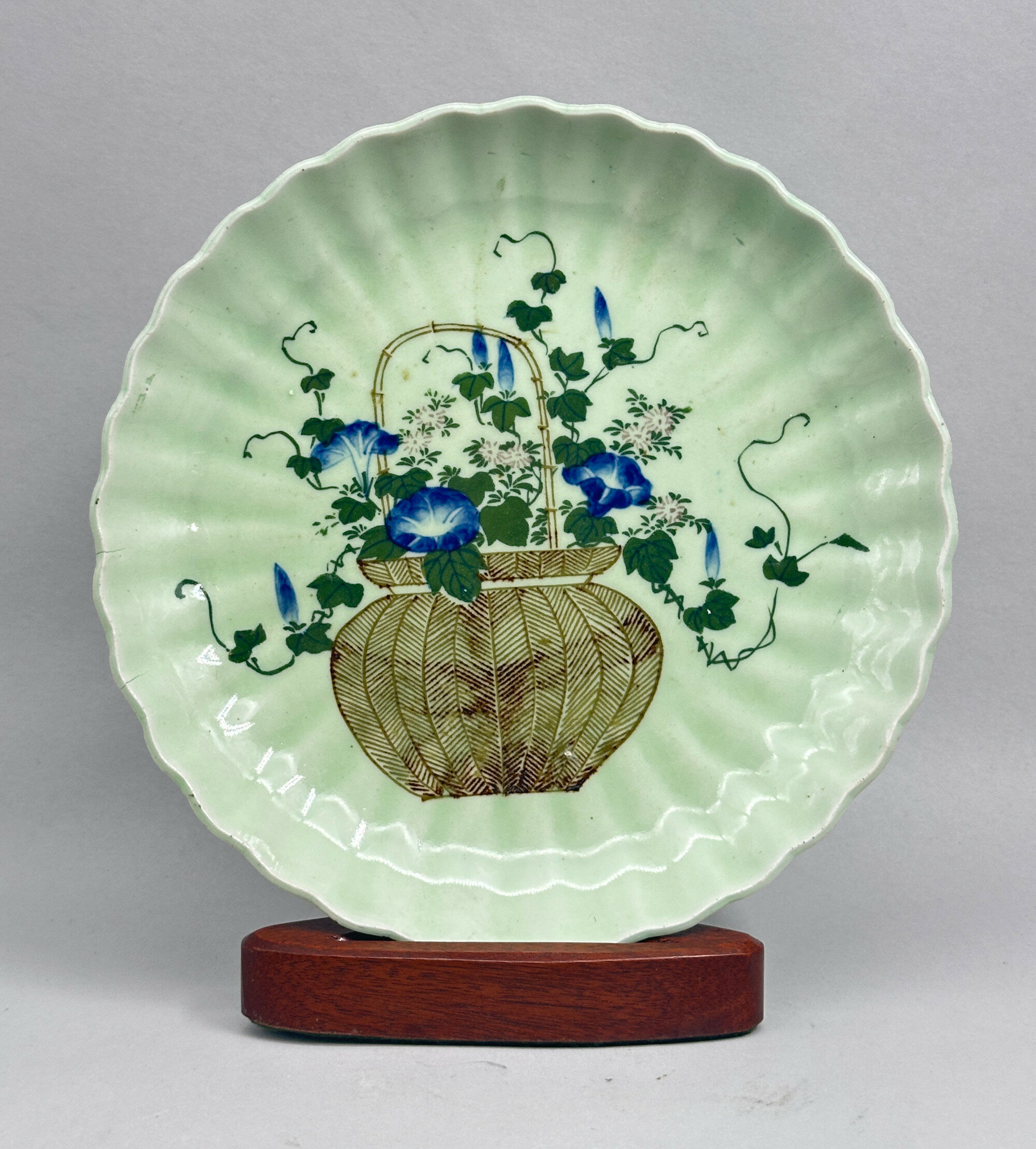
Japanese Celadon Dish decorated basket of flowers, circa 1900
Price: £45Celadon glazed wares with enamel decoration in fairly muted colours are a familiar product amongst the ceramics produced by Japanese potters at the end of the nineteenth century but examples of this type of dish are rather less commonly found. The basket of flowers is a regular decorative feature of Chinese ceramics, but given here a slightly different interpretation with the depiction of lotus, the emblem of summer. The mark probably imitates Chinese ‘commendation’ marks inscribed within the foot rim, another nod on the part of the Japanese potters towards their Chinese counterparts.
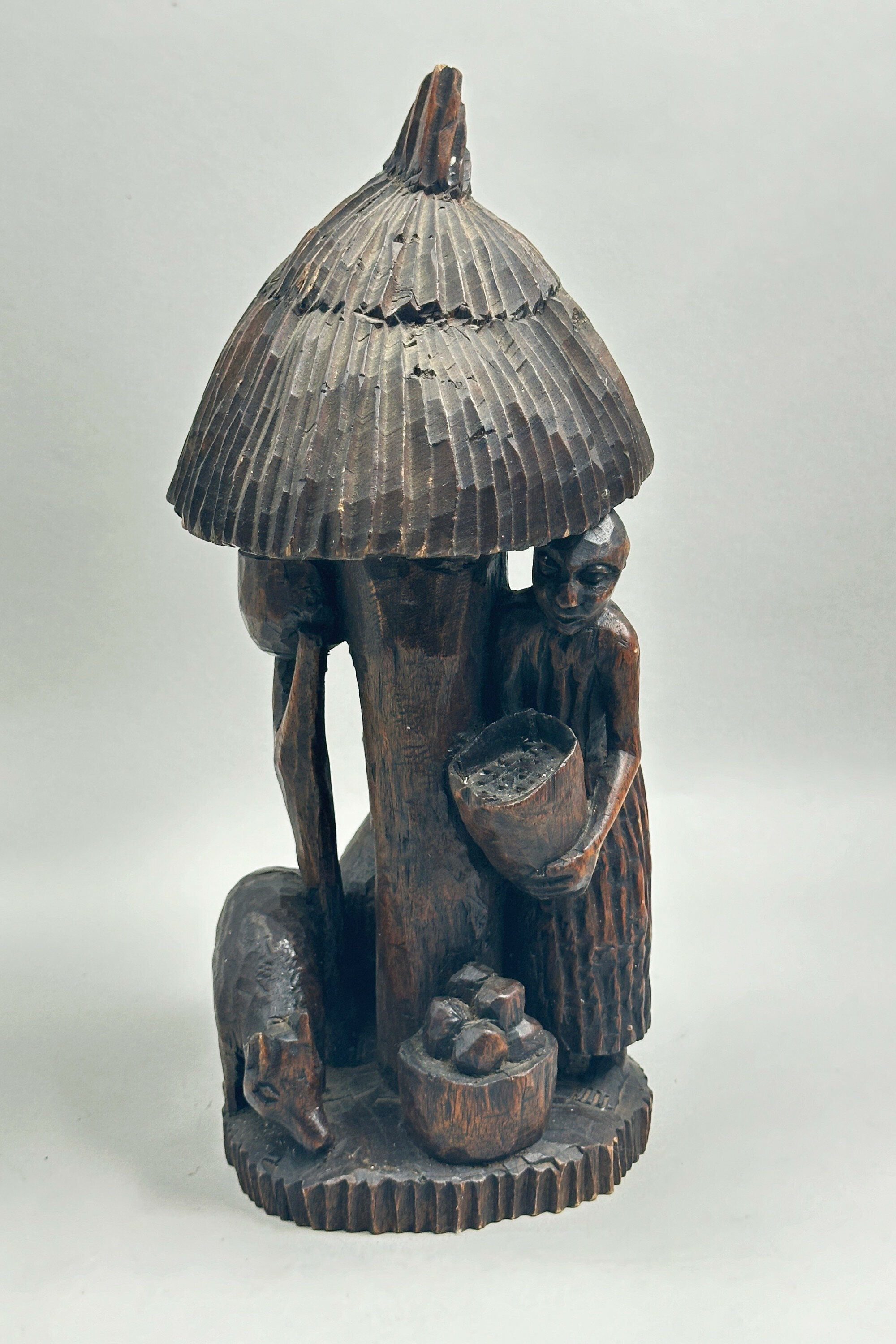
African wood figural group, Guinea c1970
Price: £35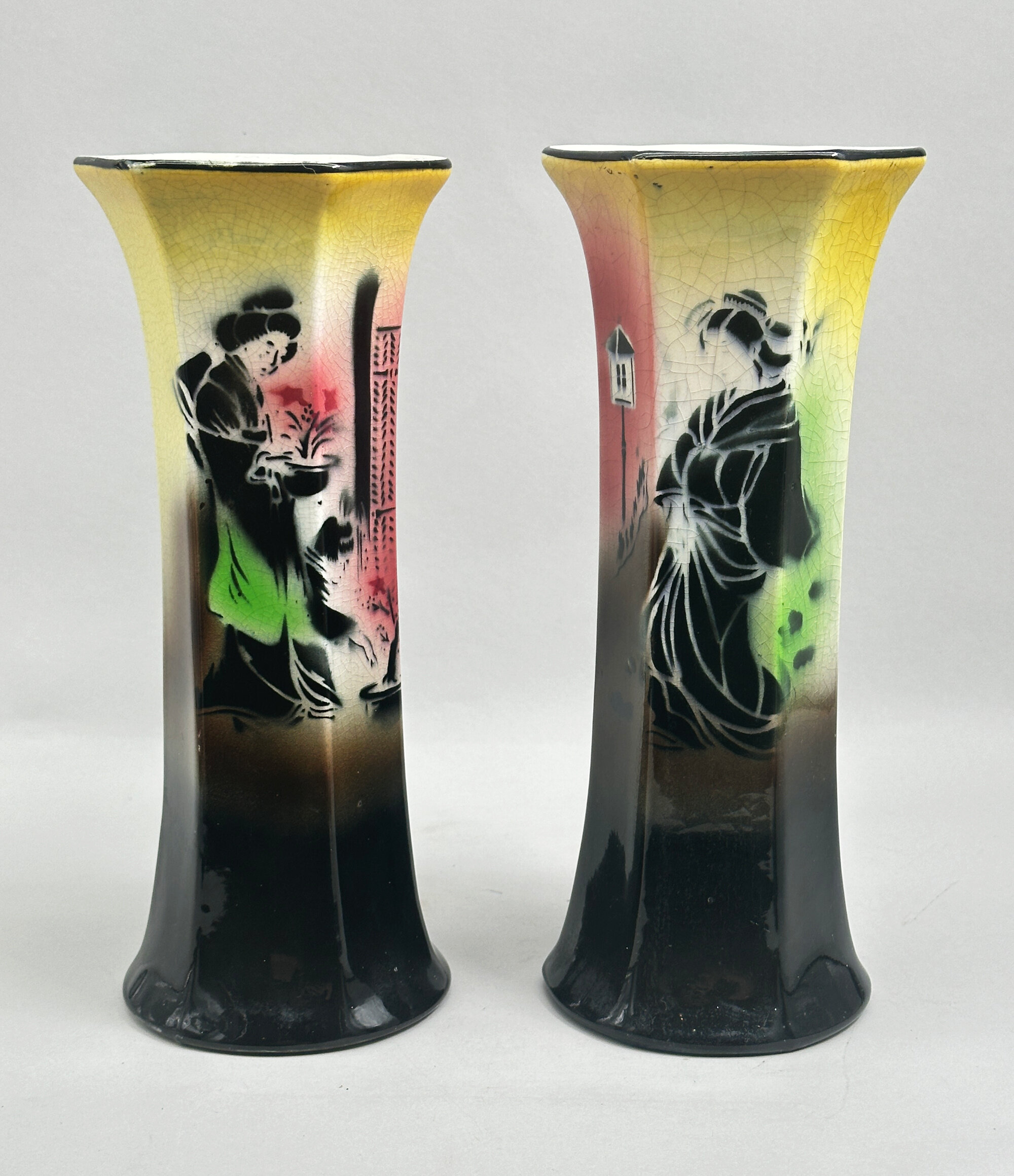
An unusual pair of Art Deco style Japonaiserie ceramic vases, probably French 1920s/1930s
Price: £55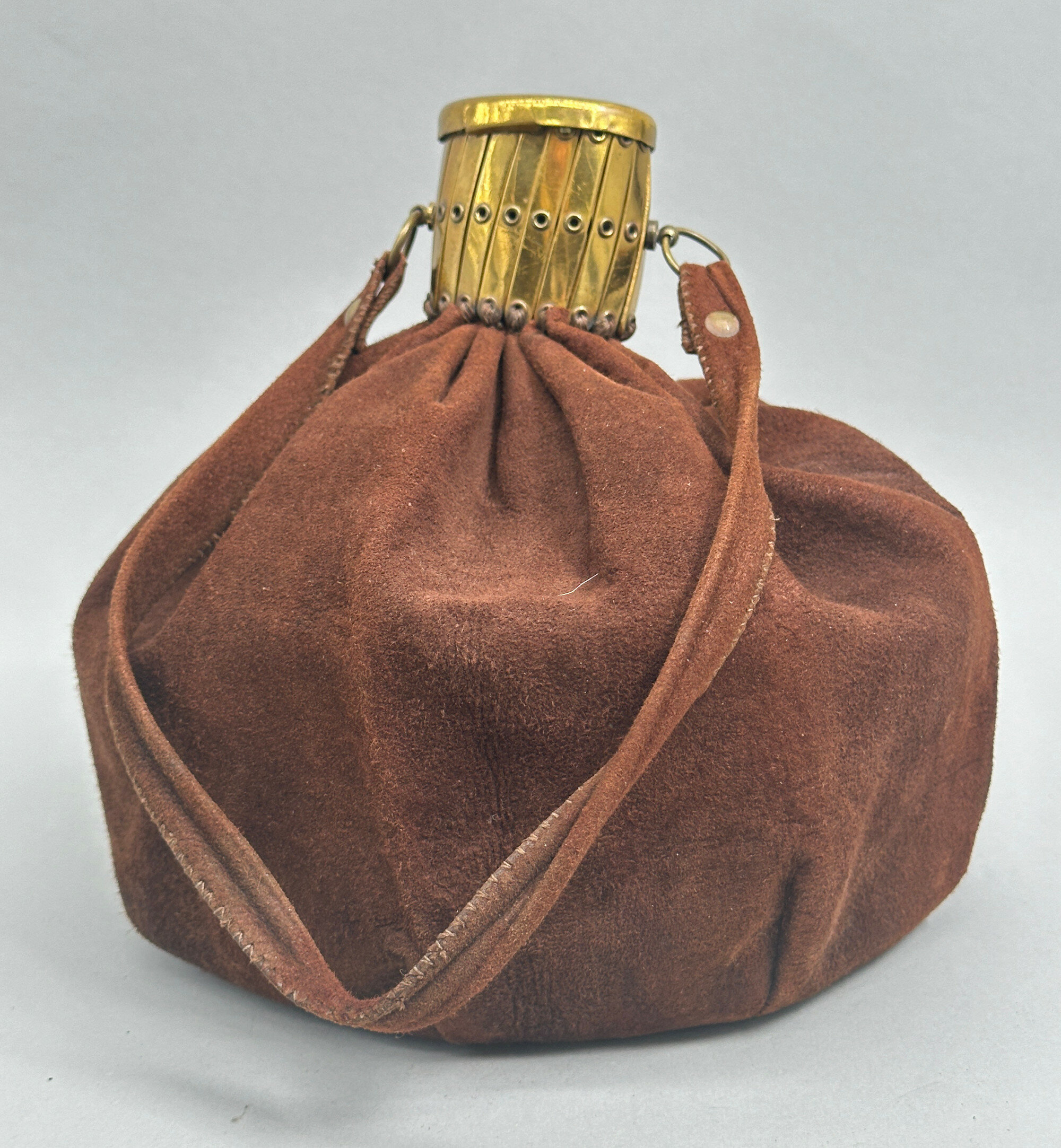
Large suede pouch bag with concertina opening c1930
Price: £65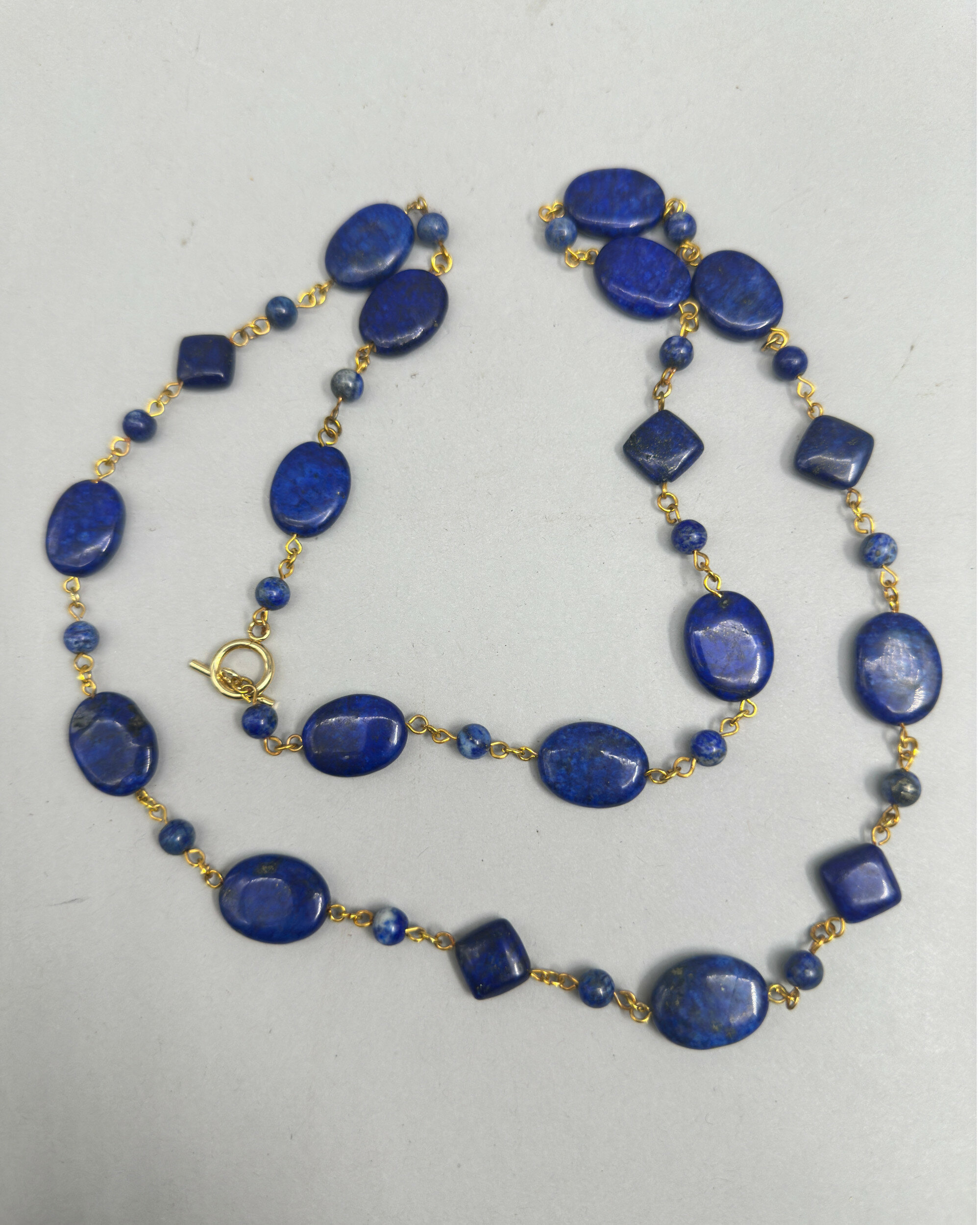
Long lapis lazuli bead necklace c1980
Price: £30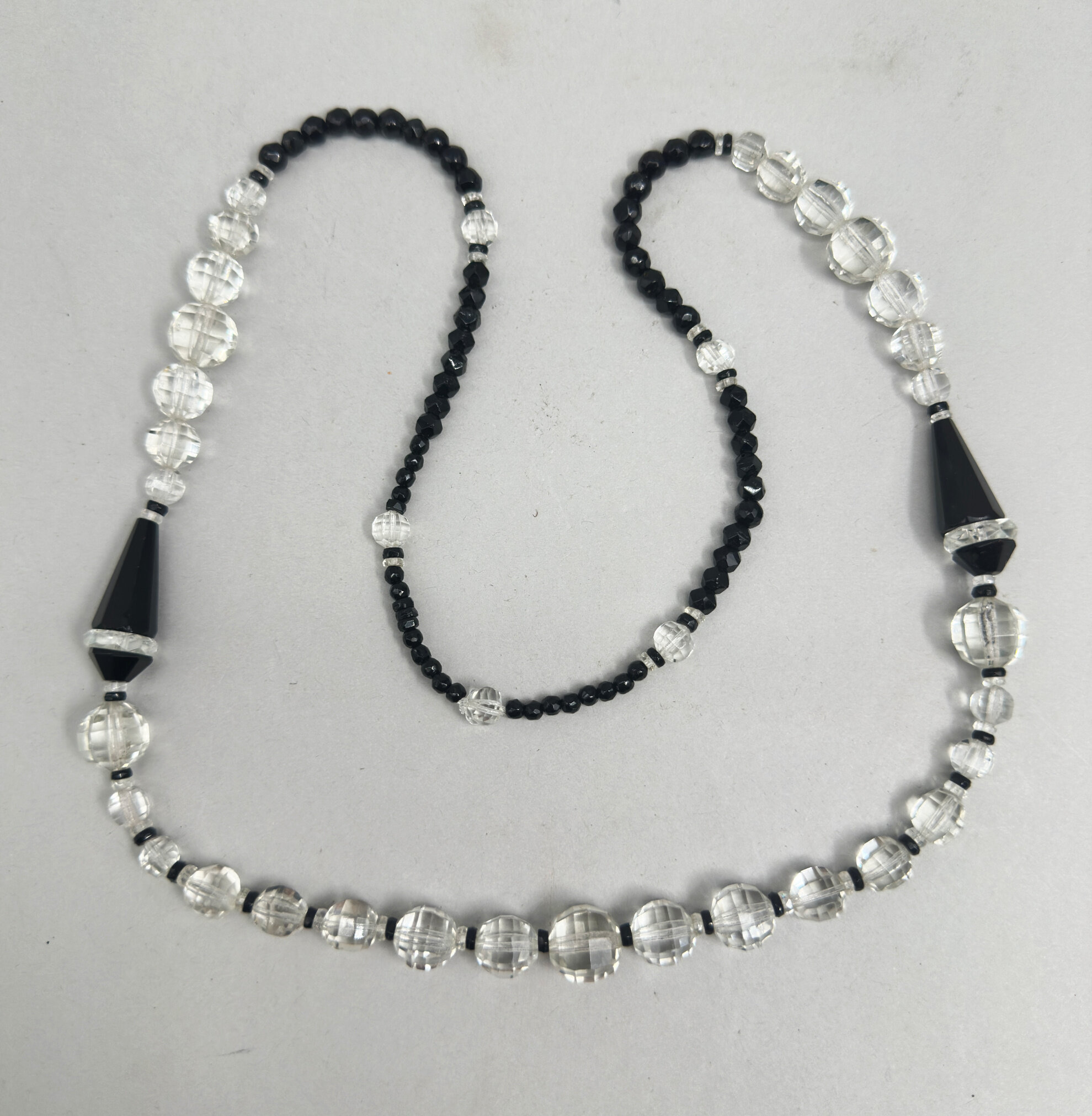
Outstanding Art Deco necklace with French jet and rock crystal beads c1920
Price: £175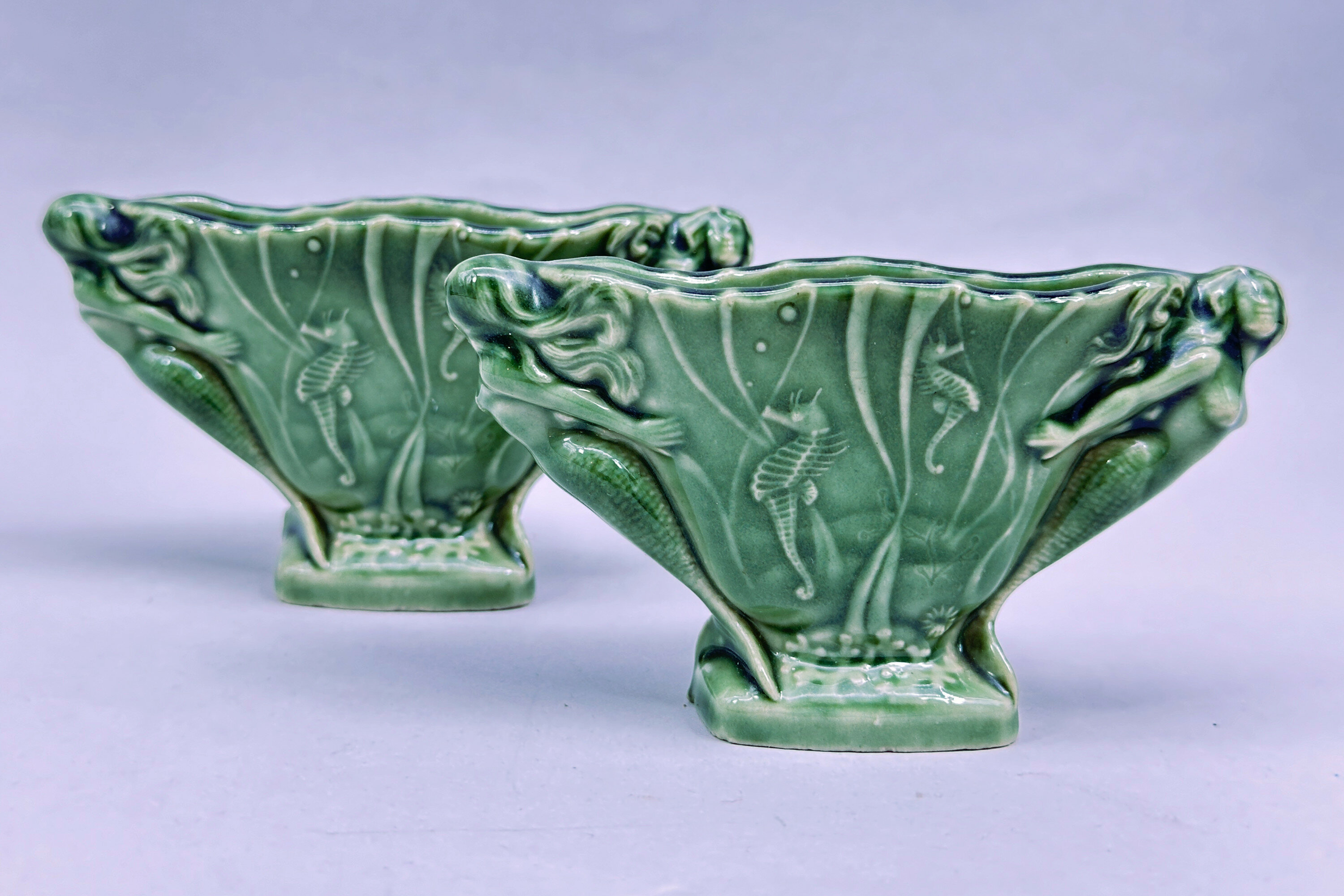
Pair of Wade green glazed Mermaid salts, 1950s
Price: £55Wade Ceramics Ltd was a manufacturer of porcelain and earthenware, headquartered in Stoke-on-Trent, England. Founded in 1867, it was run by various members of the Wade family until the death of George Anthony Wade in 1987 after which there was a succession of management buyouts. Despite substantial investment in 2009, the firm eventually went into administration in 2022. Wade produced a wide variety of ceramics, including the well known Wade Whimsies animal figurines.
This pair of salts is rather different to many of their productions and have a distinctly ‘Art Nouveau’ feel but, in fact, date to the 1950s when this particular format of the factory mark was used. It seems to be one of the rarer forms and pairs are even rarer still, so definitely one for Wade collectors!
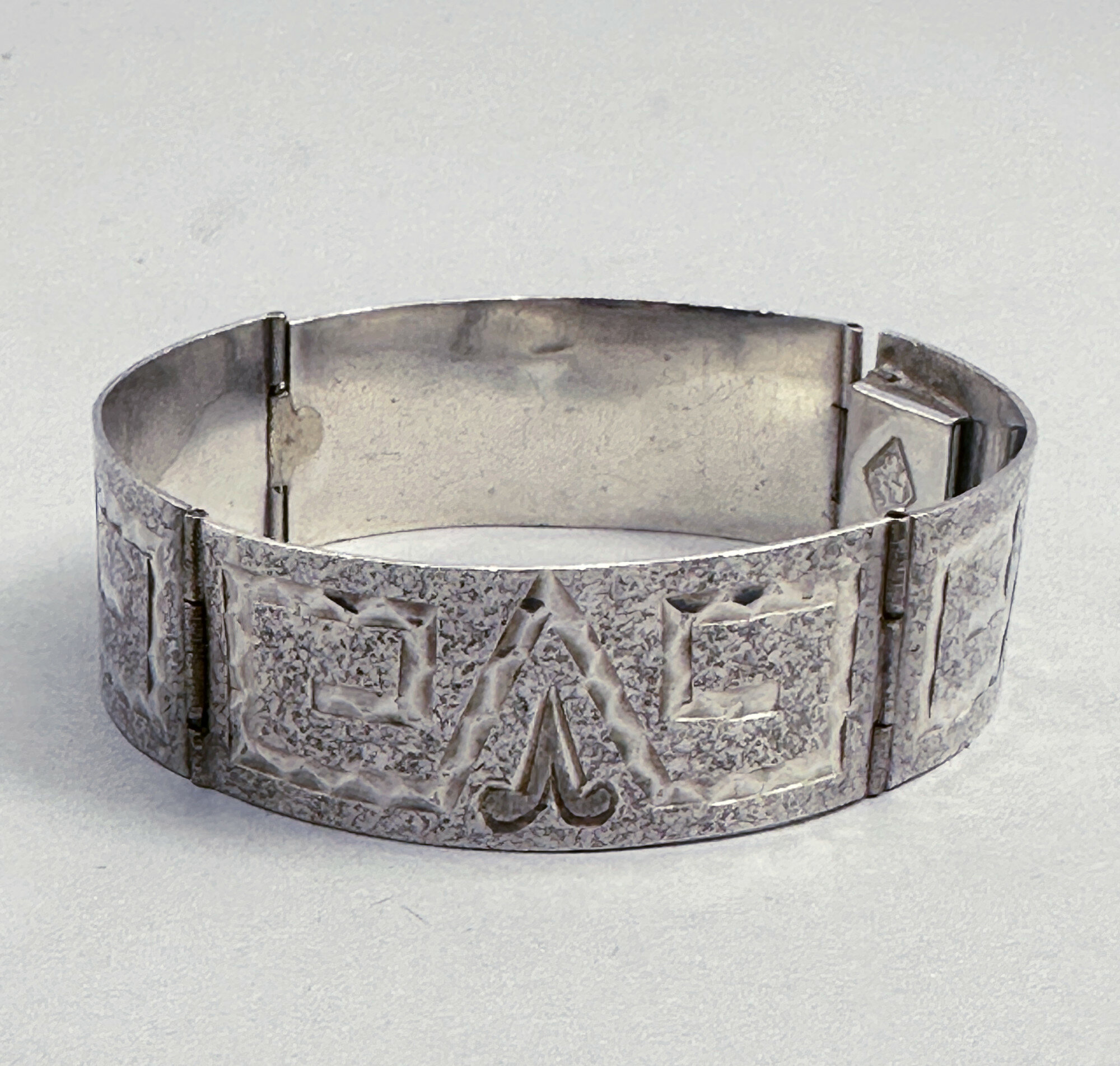
Mexican Silver Bracelet with Aztec Designs, Taxco, 1950s
Price: £65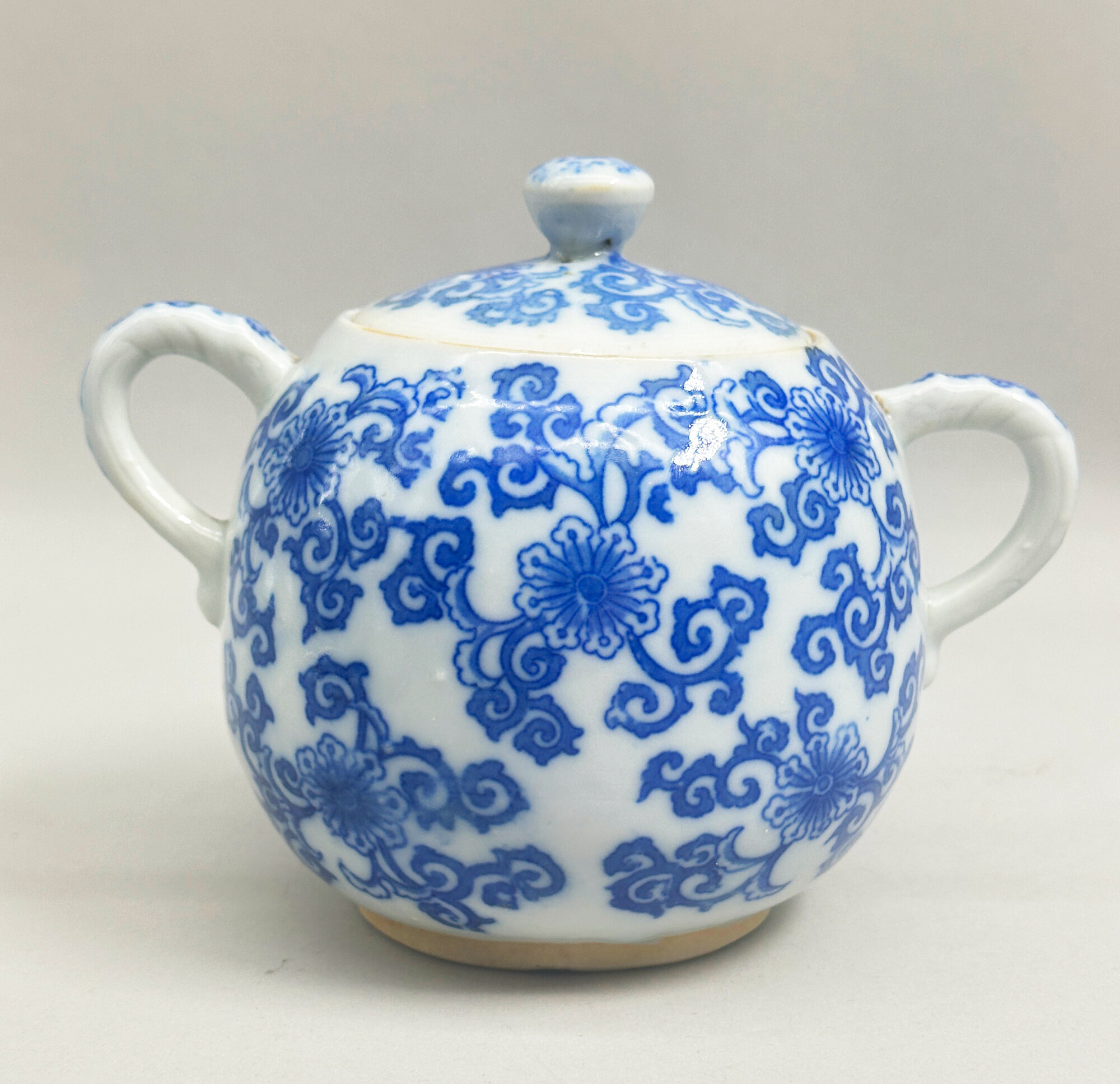
Japanese Blue and White Sugar Bowl and Cover, first half C20th
Price: £25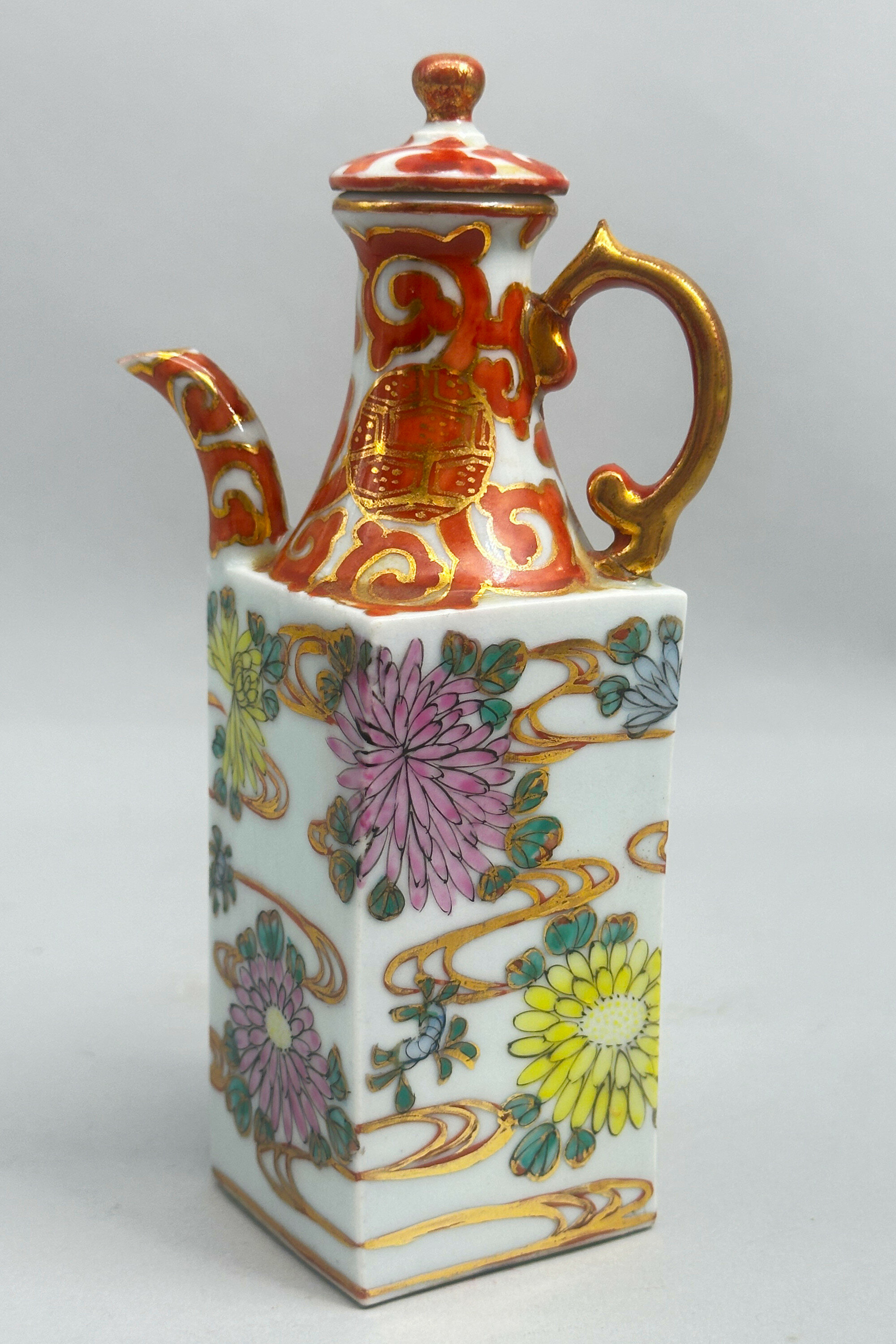
Japanese Arita Square Sake Flask and Cover decorated flowers, C20th
Price: £25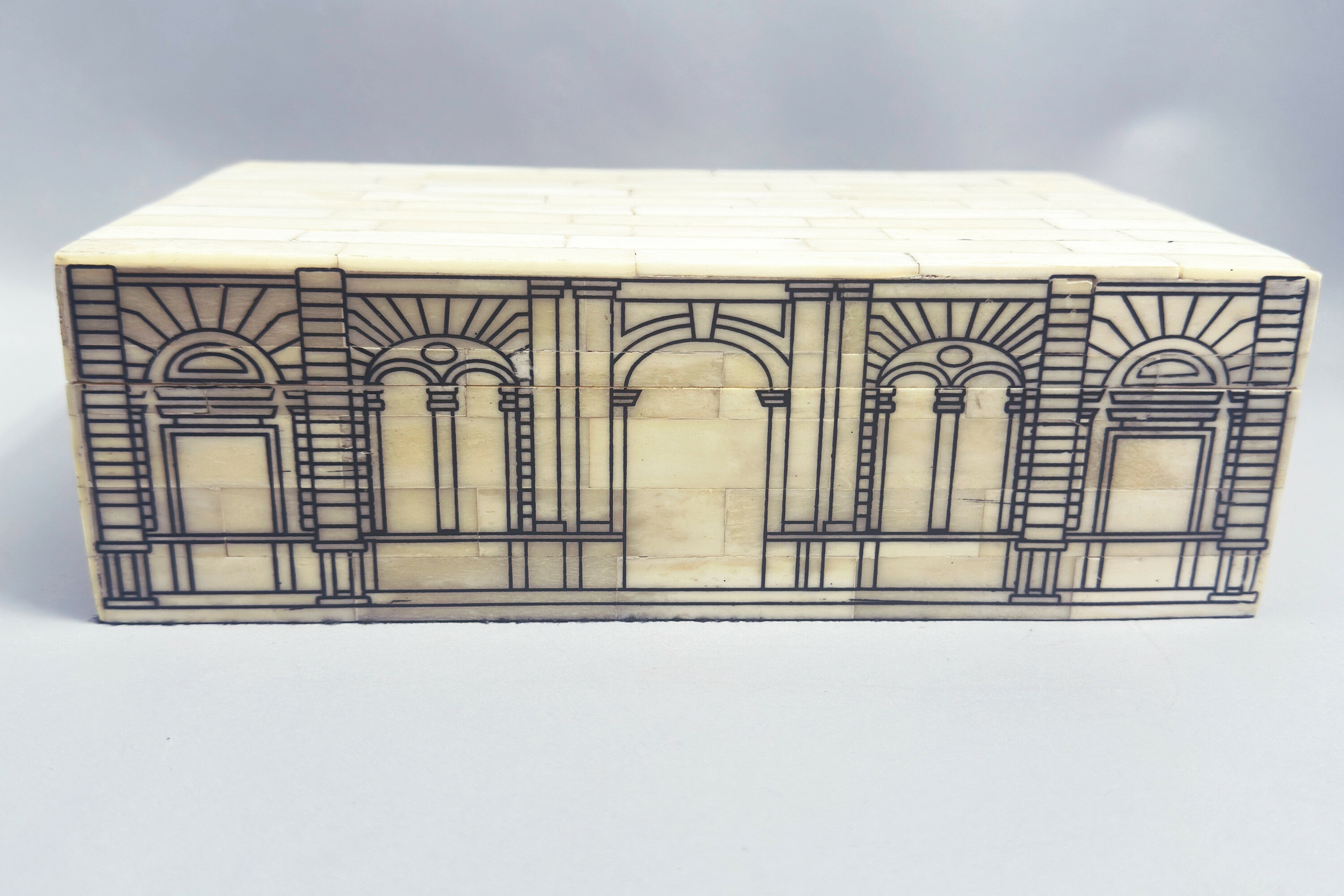
Bone parquetry box decorated in the manner of Fornasetti, Venetian, mid C20th
Price: £85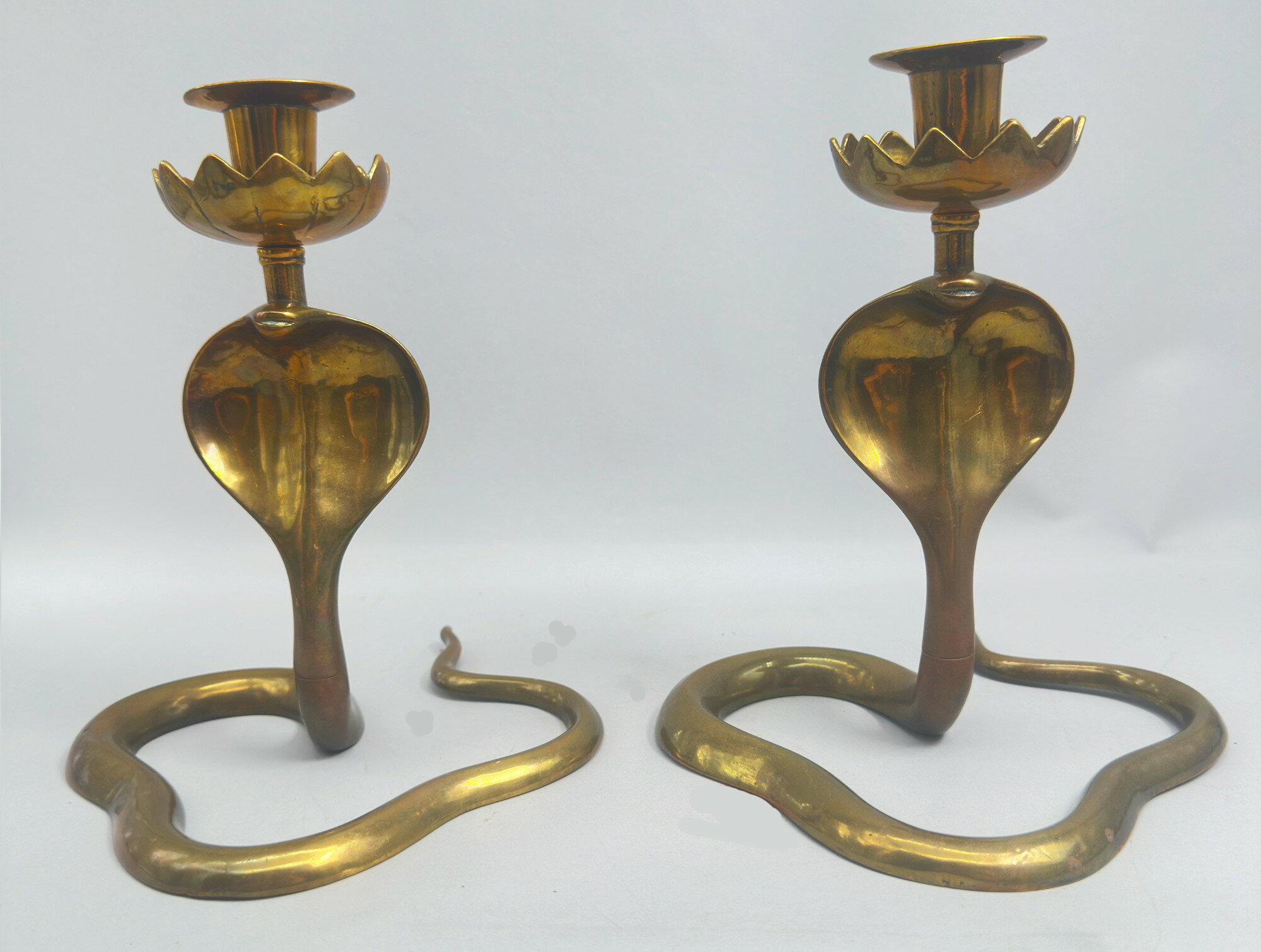
Fine quality pair of Brass Cobra Candlesticks, Indian first half C20th
Price: £95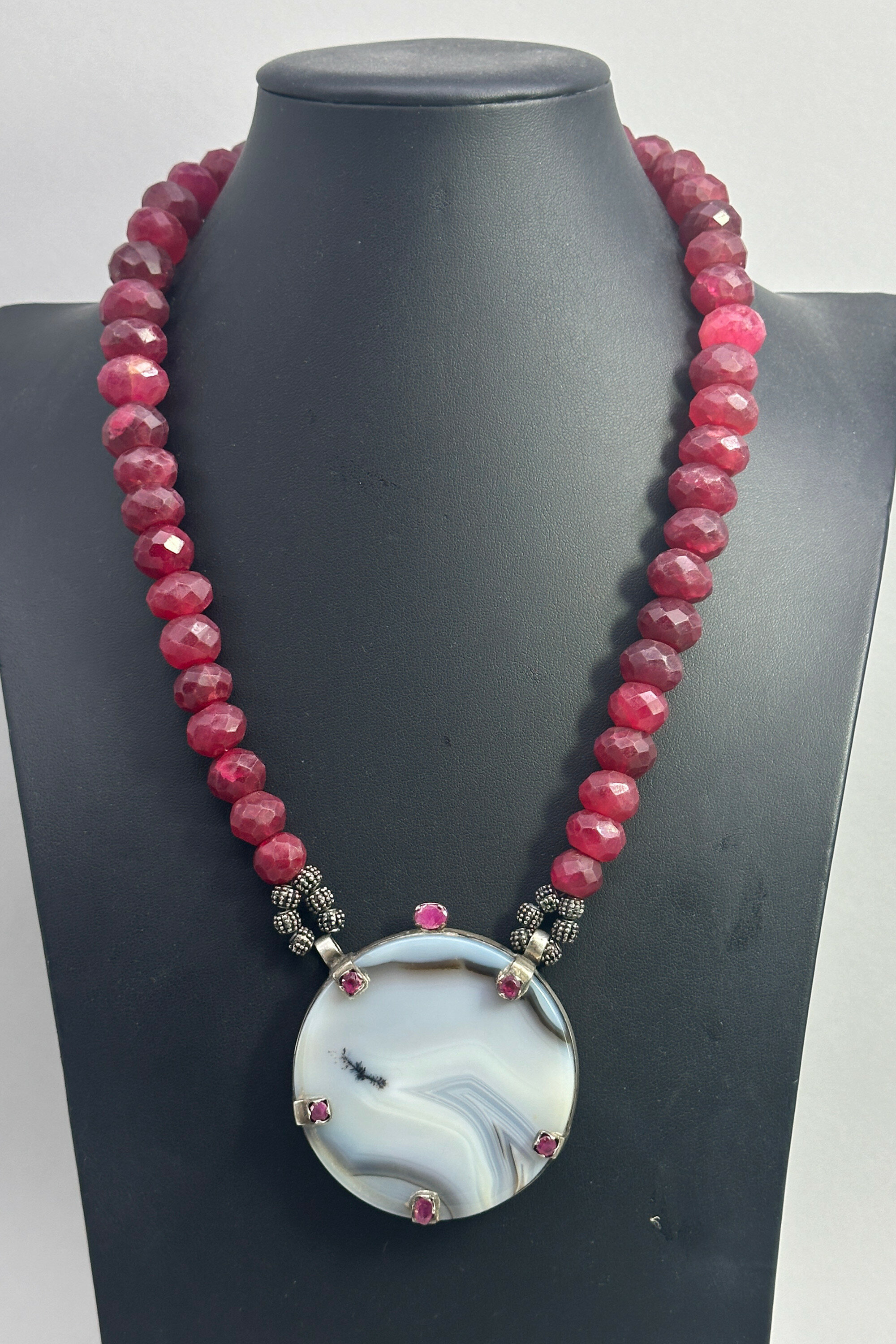
Necklace with massive Agate Disc strung set with facetted ruby beads, India, c1940
Price: £325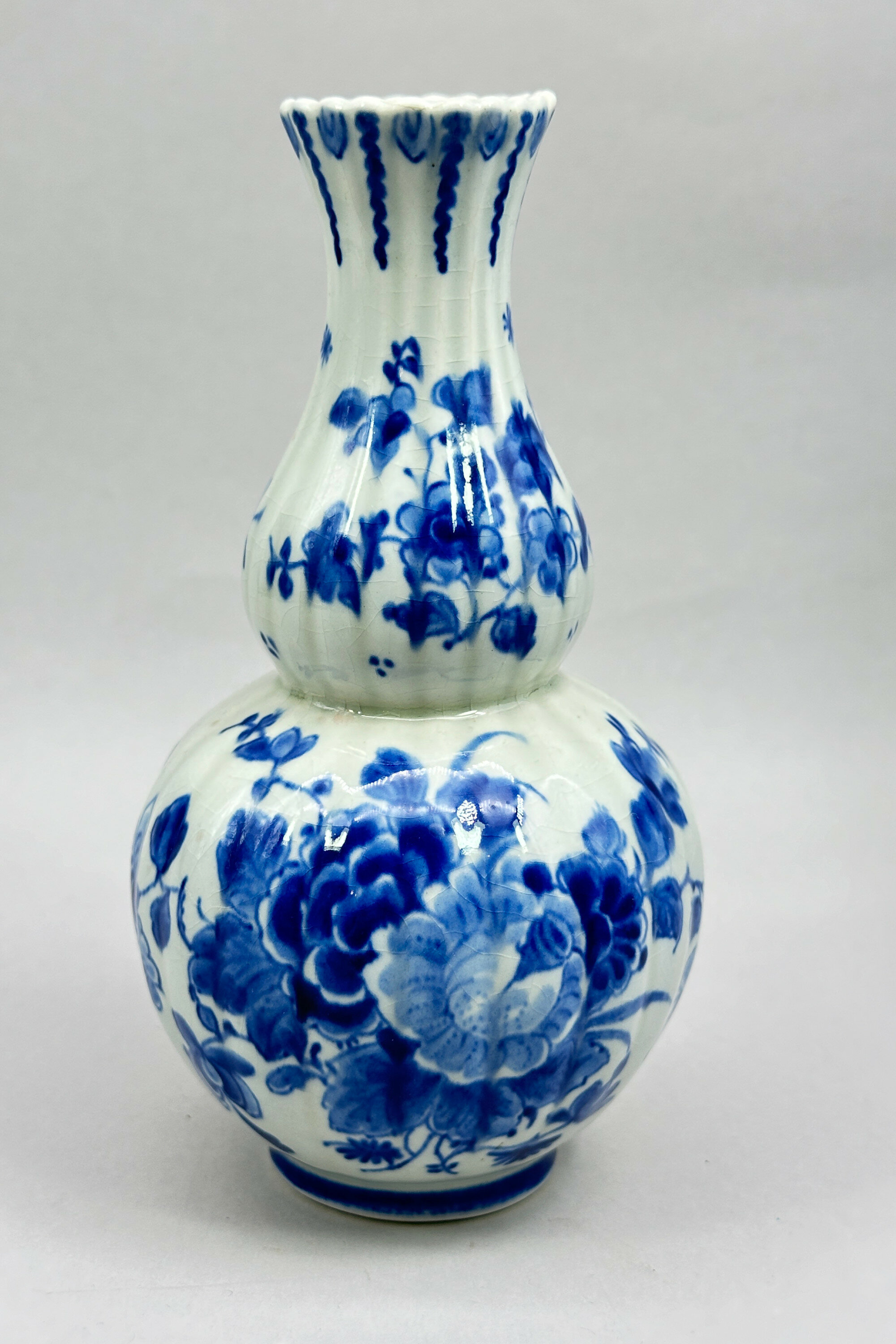
Dutch Delft Blue and White Gourd Vase in C18th Style, late C20th
Price: £25This vase is typical of one of these later creations and copies an eighteenth century original which itself was based on Chinese pieces. The marks underneath, although some of them are blurred, offer a clue to the dating. Below an ‘A’ at the top can be seen a vase which stands for ‘De Porcelyne Fles (The Porcelain Bottle) a factory which was established in 1653 and continues production today. There follow the initials ‘JT’ as a monogram standing for Joost Thooft who bought the factory in 1876 and below this ‘Delft’. At the bottom are usually found the painter’s initials to the left and letters to the right which are the date mark. On this vase these are unclear but the painter’s initials read ‘MA’ which appears to stand for M.H.van Aalst who worked for the firm from 1941to 1983. This would fit with a likely dating here to the second half of the twentieth century, but the artist has successfully recreated the work of his predecessors and produced a piece of great charm.
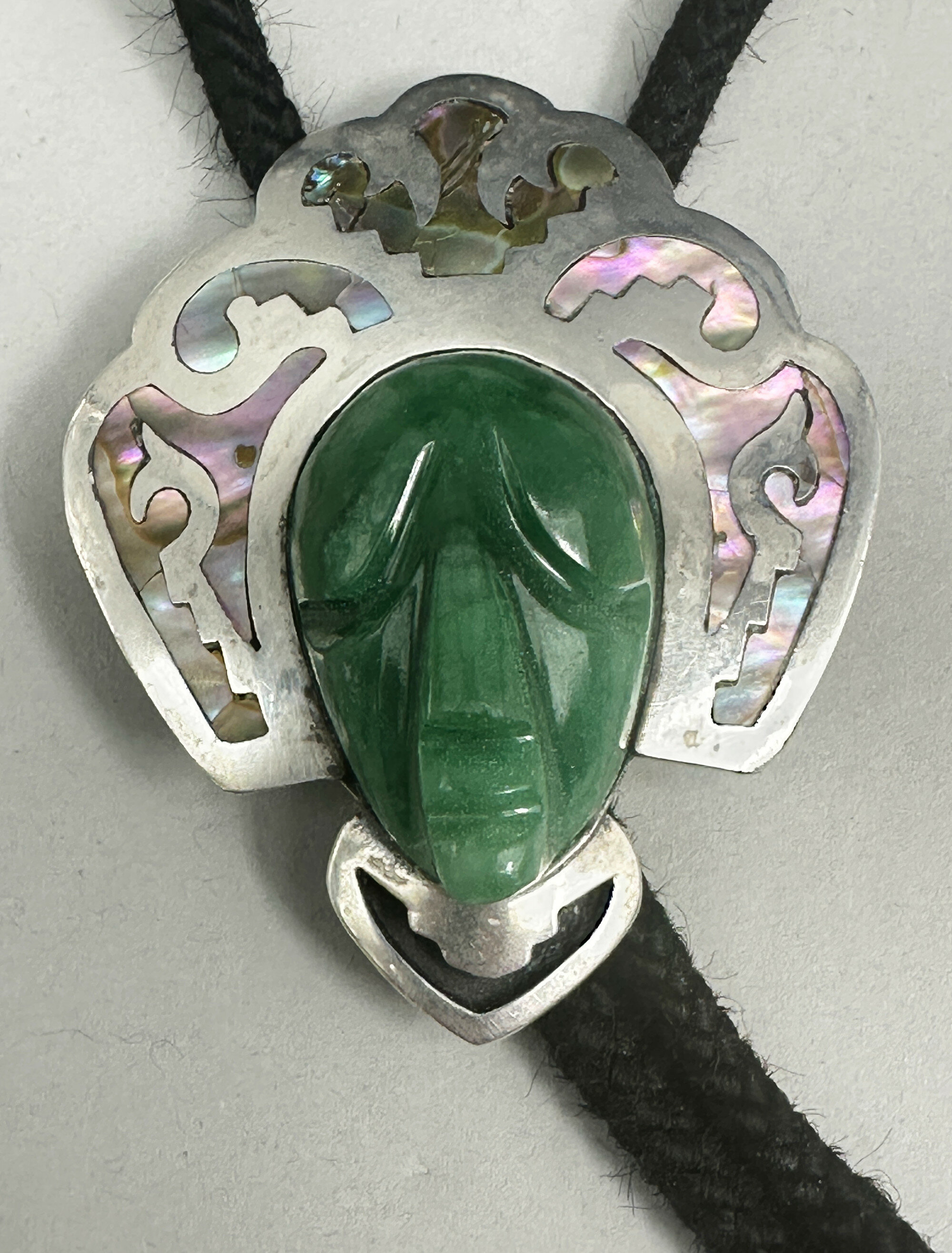
Mexican Silver Bolo Tie with Aztec mask Head, Taxco, c1950
Price: £125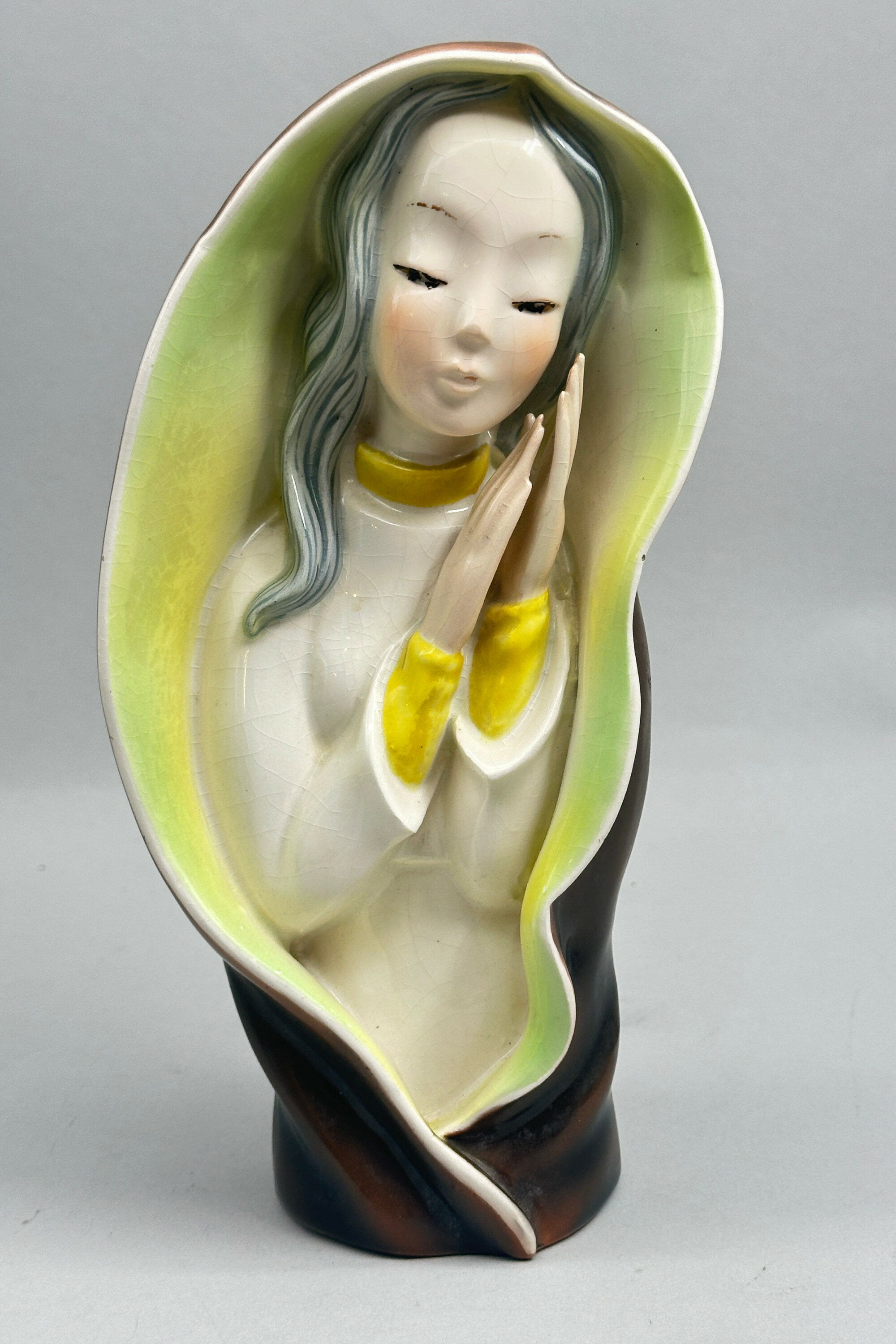
Figure of a Young Girl Praying, Continental, probably mid C20th
Price: £45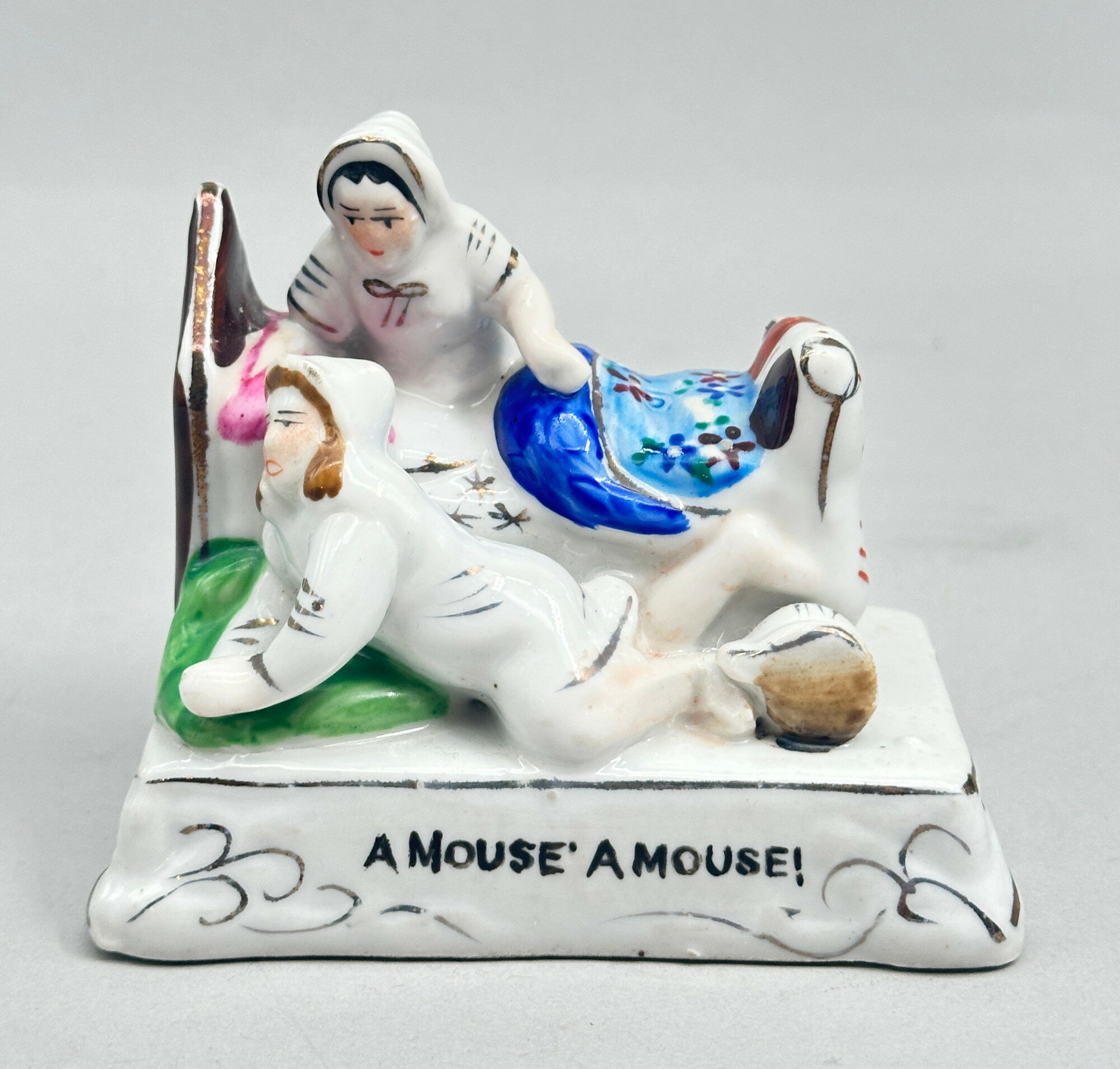
Fairing Figurine – A Mouse A Mouse, German, late C19th
Price: £25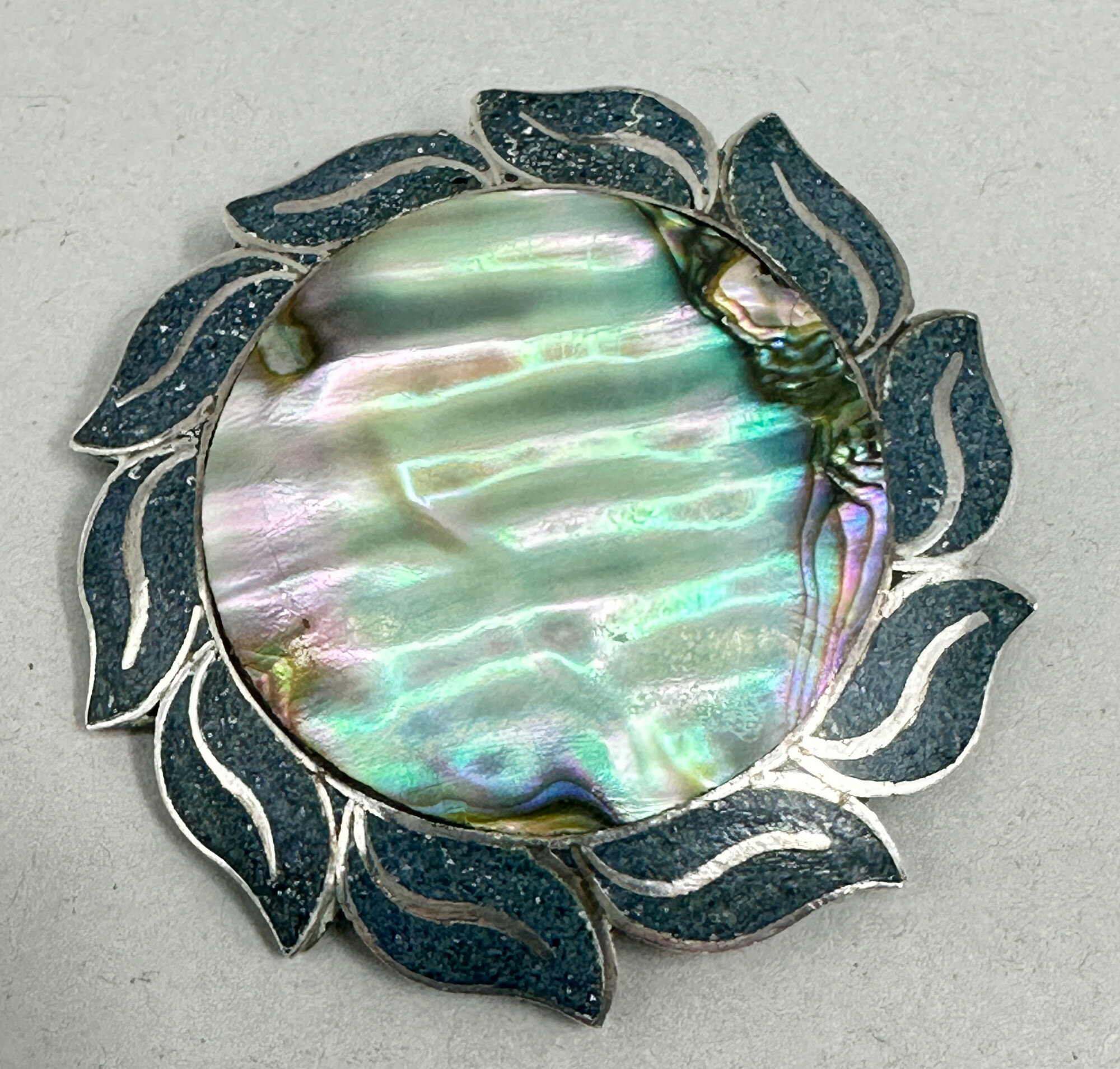
Taxco brooch with abalone shell c1950
Price: £20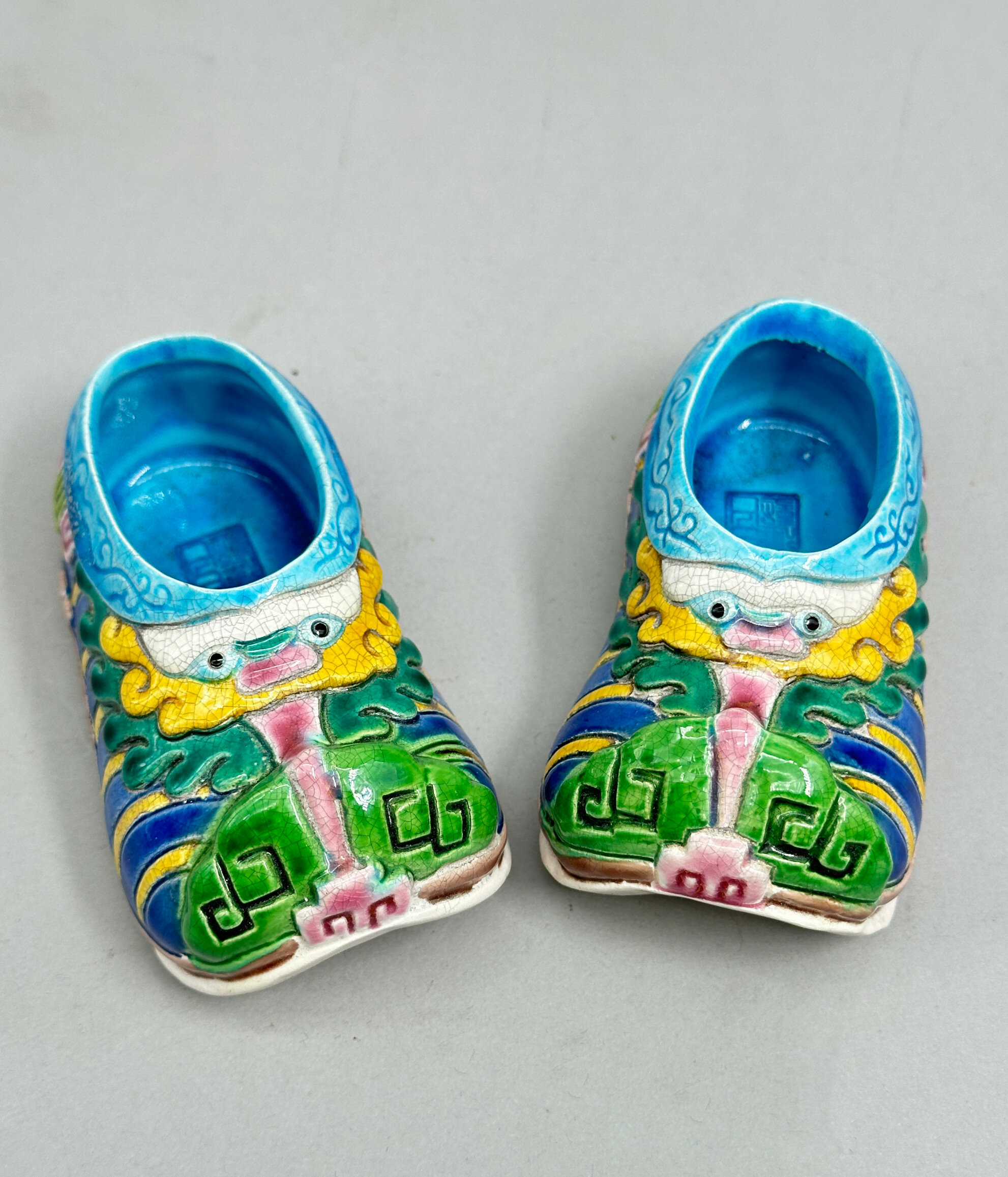
Pair of Chinese Ceramic Shoes, seal mark and with fitted box, C20th
Price: £55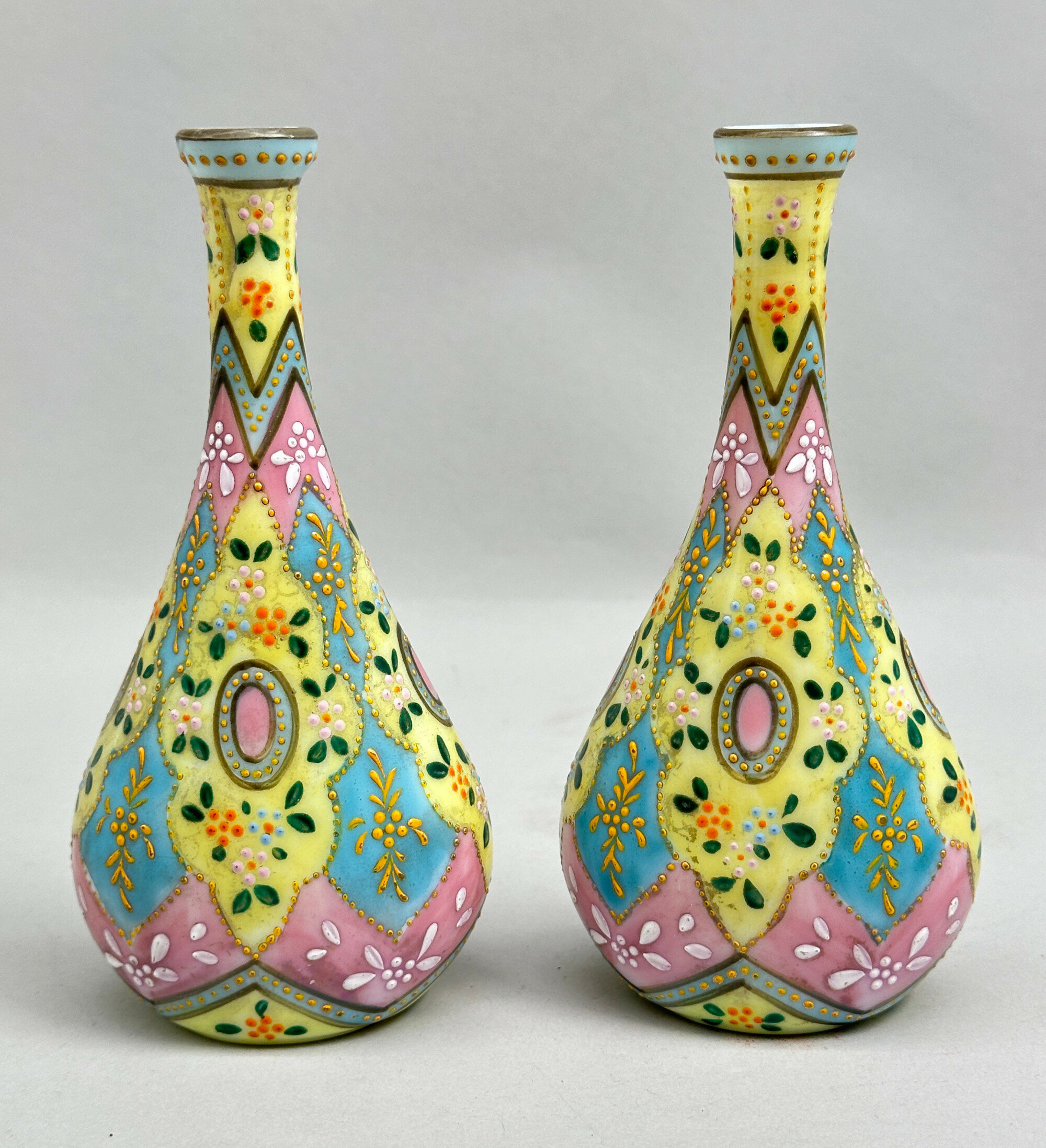
Pair of Bohemian Harrach Glass Vases, Morocco pattern, second half C19th
Price: £95The Harrach glassworks is named after Alois Raimund von Harrach (Count Harrach), on whose estate it was founded in Bohemia, in the early eighteenth century. Managed at first by one Elias Muller, the firm traded under a variety of names becoming known as Harrach in the nineteenth century and Harrachov, the name eventually given to the town where the factory was situated, in the twentieth. These opulent vases were a popular part of its range in the nineteenth century, the pattern being produced in a variety of similar shapes and always as shelf ornament pieces. The decoration here is particularly lavish with an attractive use of colour and has survived in excellent condition making these a desirable addition for collectors of Bohemian glass or admirers of nineteenth century glass style generally.
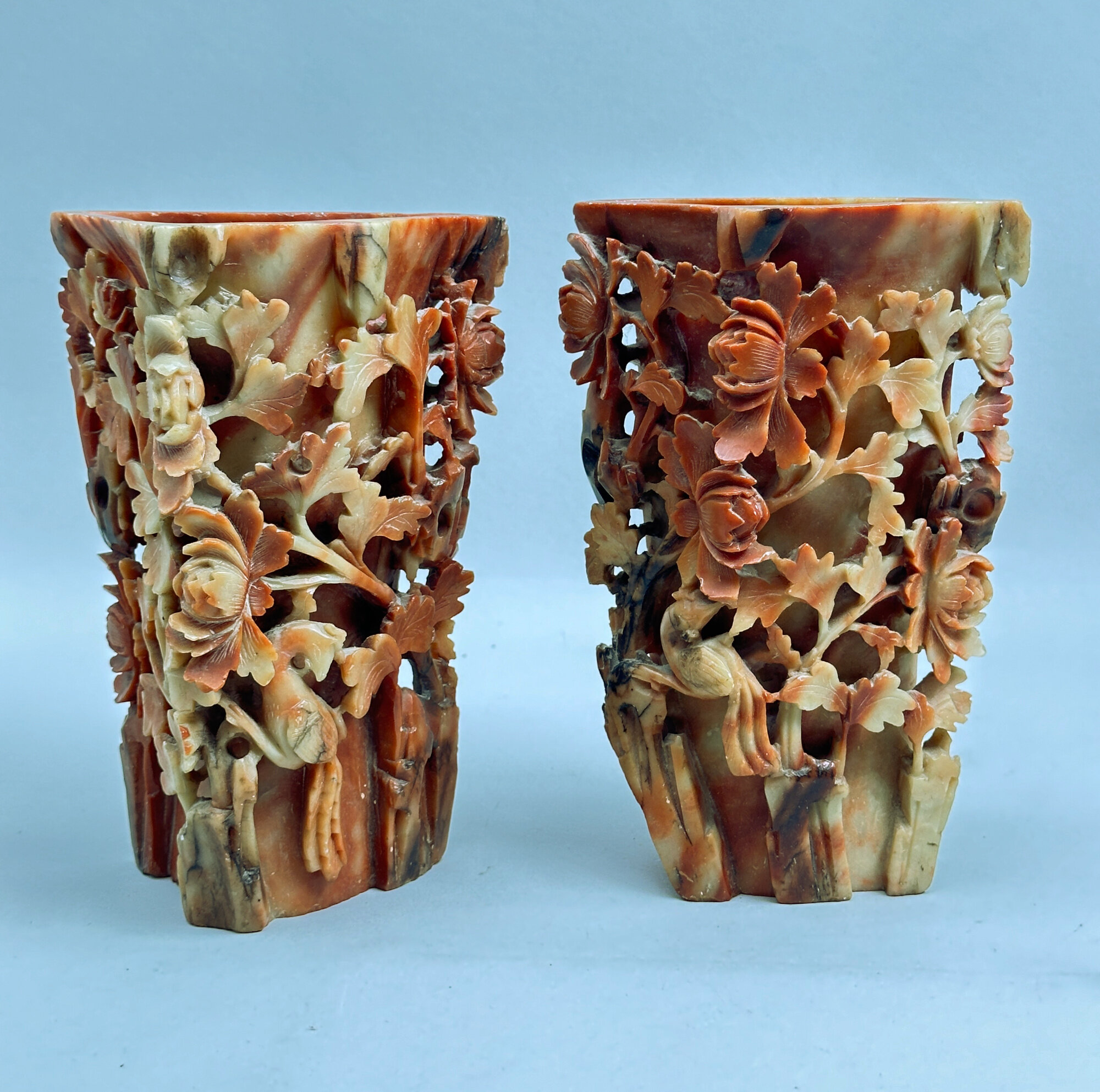
An unusual Pair of Chinese carved Soapstone Vases, circa 1900
Price: £110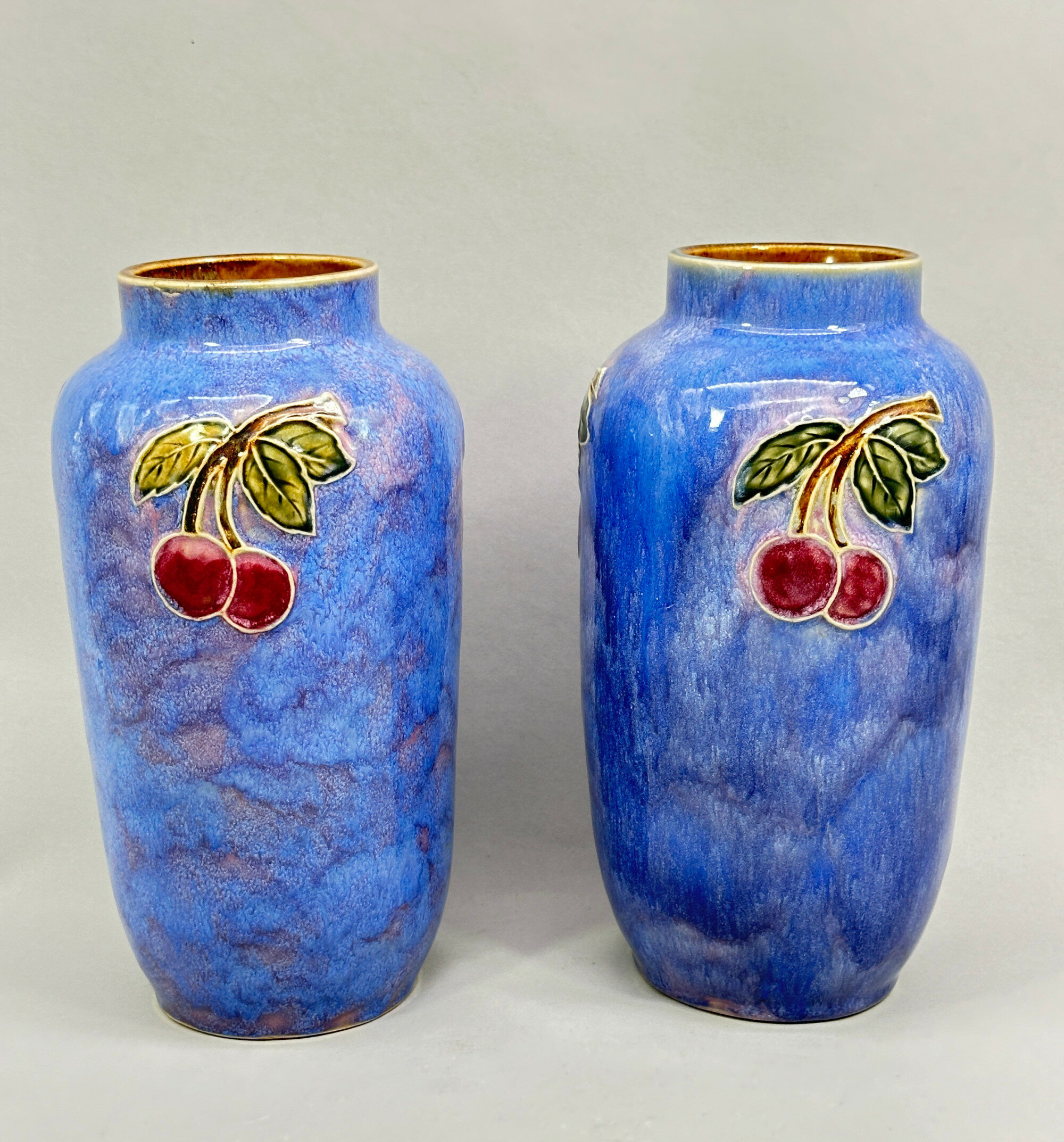
Pair of Royal Doulton Vases decorated Cherries, early C20th
Price: £95The mark for Doulton is one of the standard impressed 'Royal Doulton England' marks where the lettering forms part of a circle combined with three thick lines and the centre is filled with four interlocking 'D's. The addition of a lion but not with the usual accompanying crown allows a fairly precise dating to between 1923 and 1927 which matches with the pattern number ‘8546’, one of the range of numbers used between 1924 and 1927. The artist’s signature cannot be identified but he/she produced a pair of vases of great skill and charm which follow the Art Deco trends fashionable at the time.
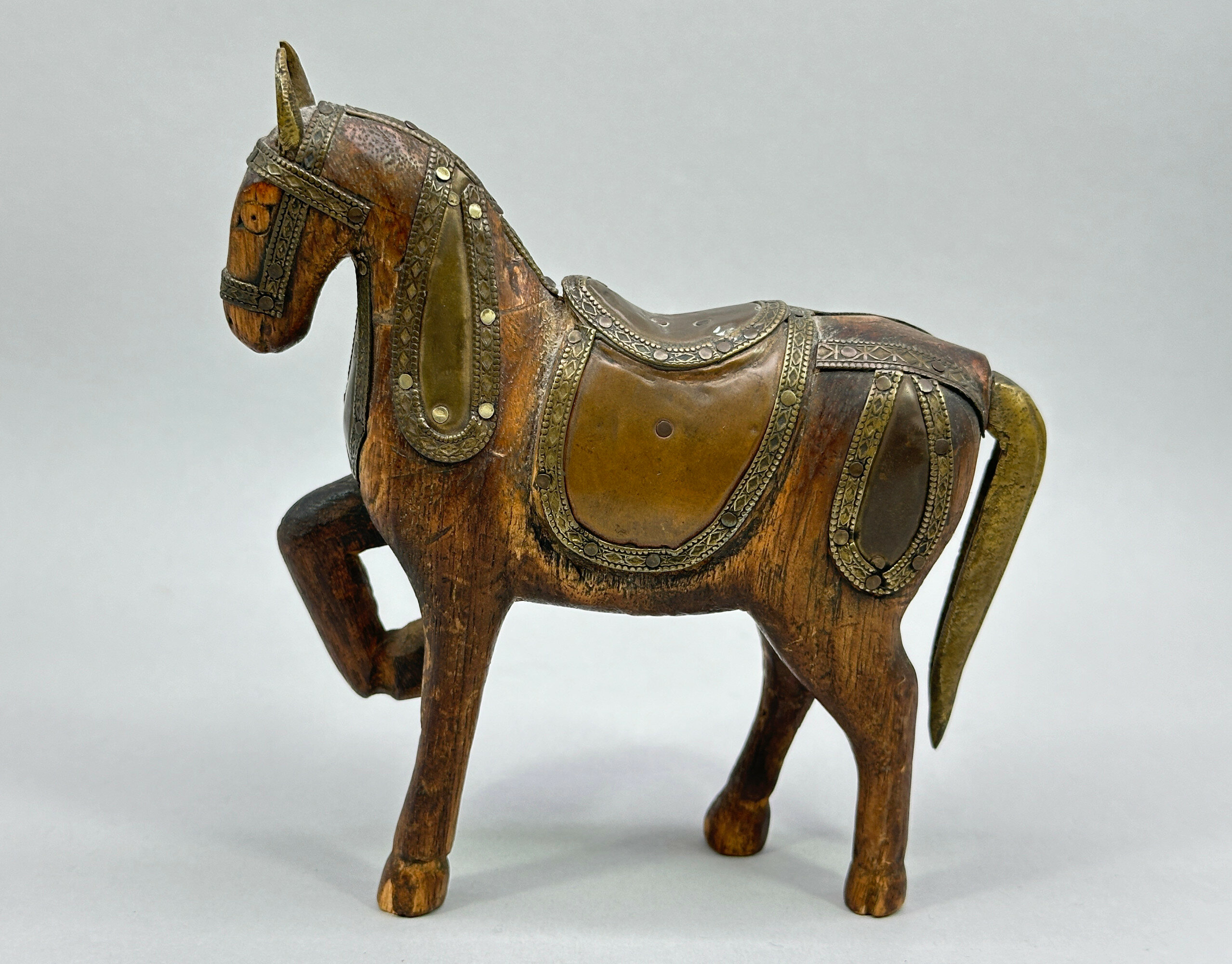
Indian wooden toy model of a Horse with metal fitments, early C20th
Price: £25
Pair of Capodimonte ceramic Wall Hanging Plaques, boy and girl praying, Italian 1960s
Price: £25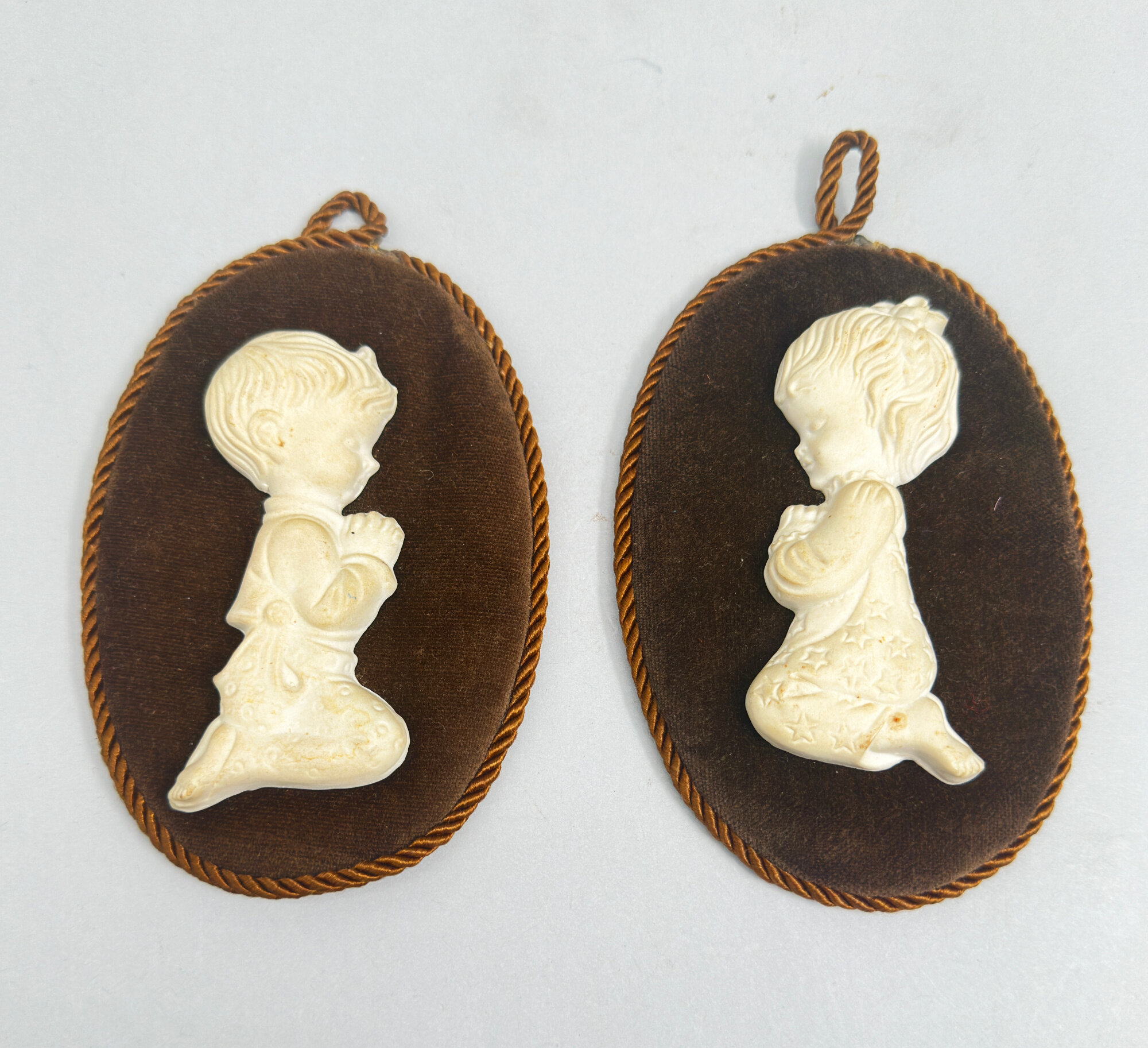
Pair of Capodimonte ceramic Wall Hanging Plaques, boy and girl praying, Italian 1960s
Price: £25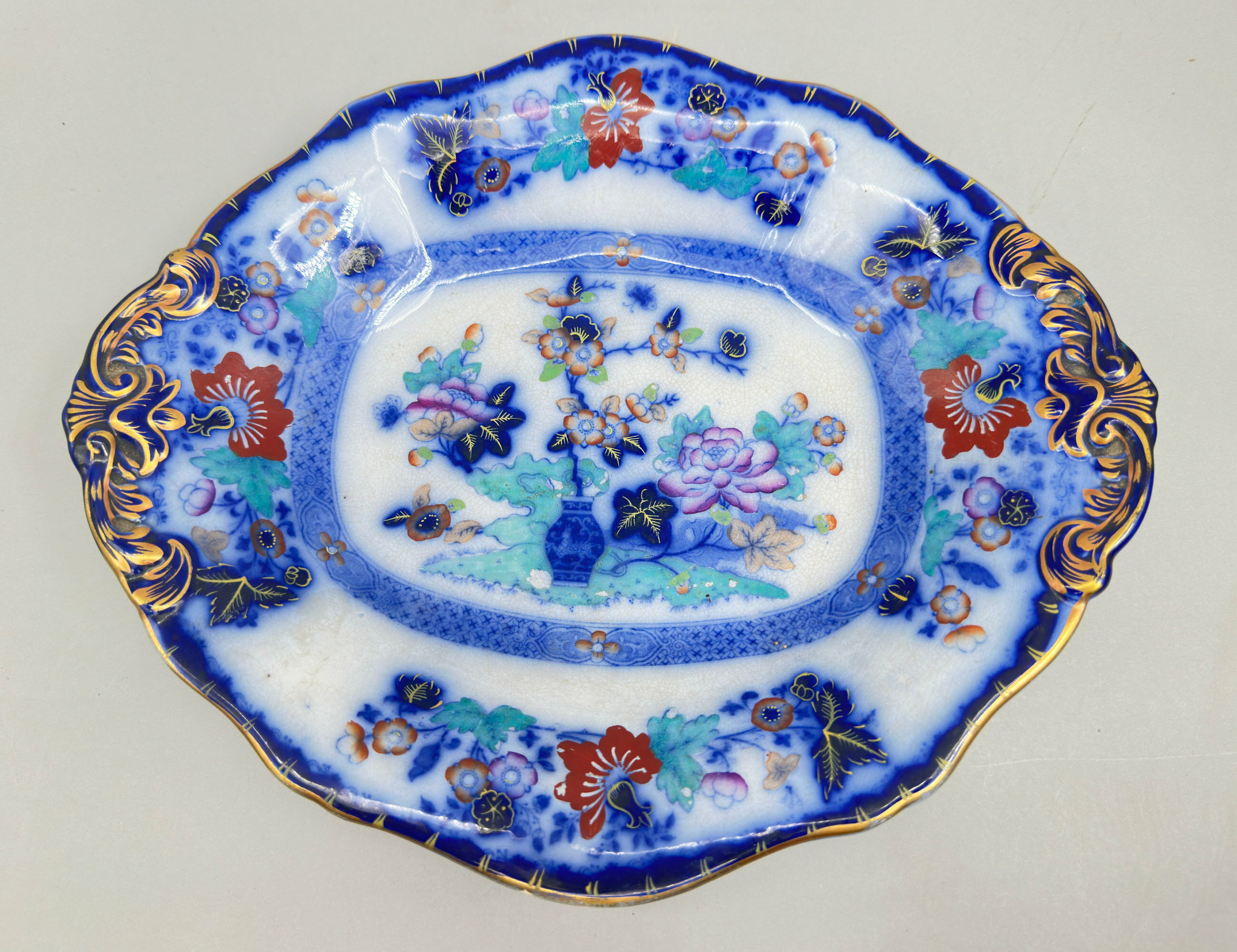
Bombay Japan pattern deep Dish, Minton or Samuel Alcock, English mid C19th
Price: £25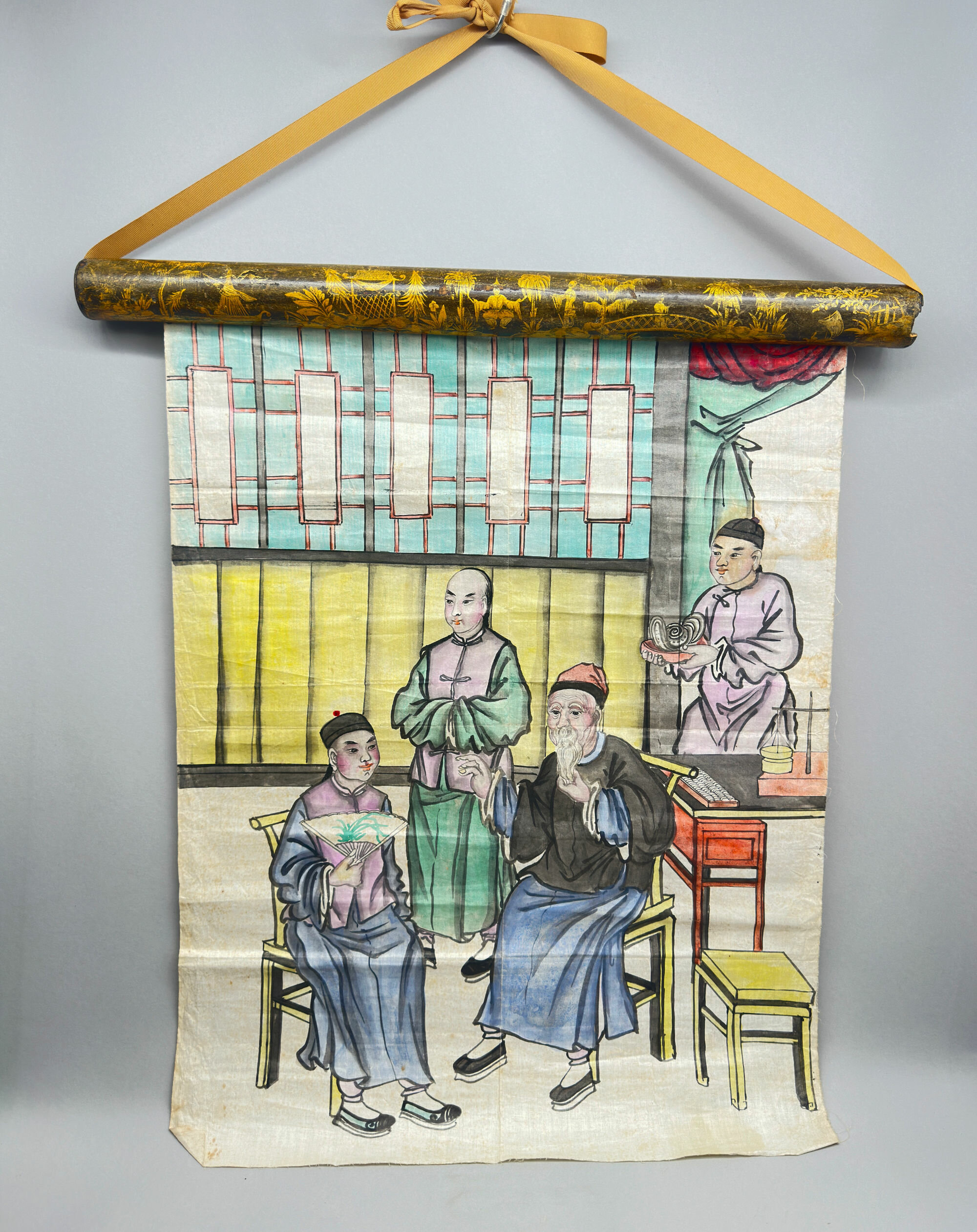
Chinese Scroll Painting of a Merchant and his Client, C20th
Price: £45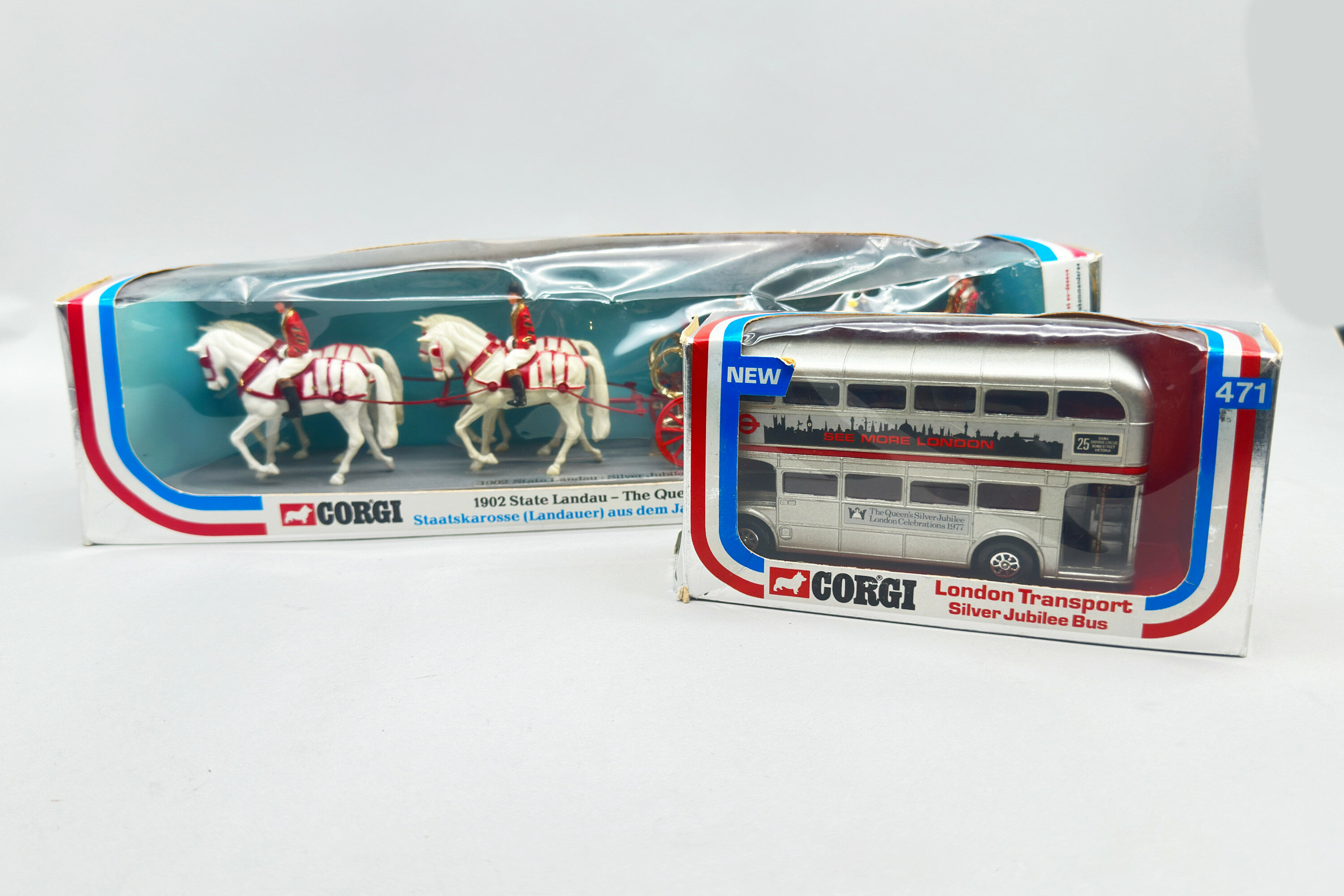
Two Corgi Silver Jubilee Toys Boxed, (41) State Landau, (417) London Bus, 1977
Price: £45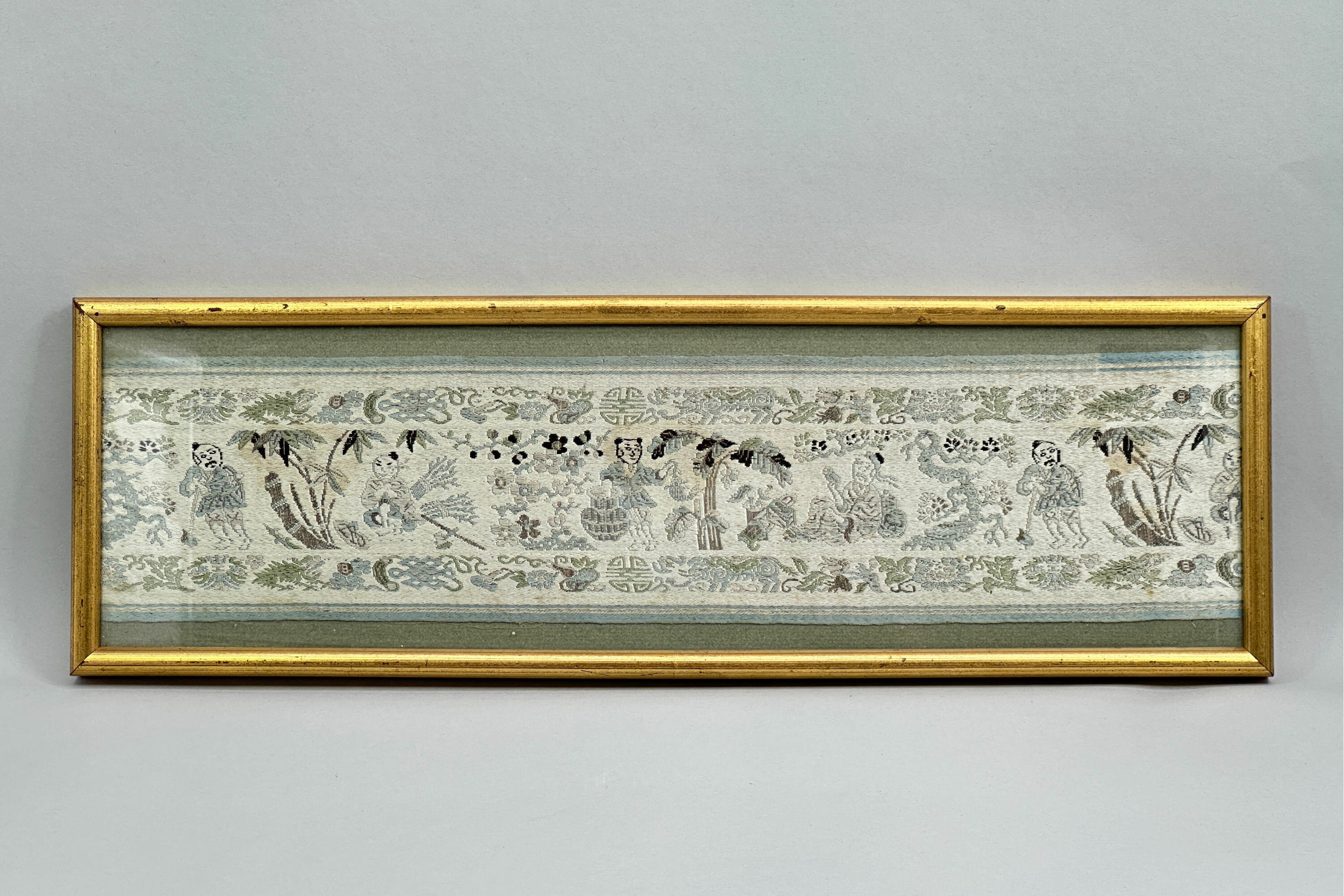
Framed Chinese Silk Embroidered Runner Panel, garden scenes, C20th
Price: £15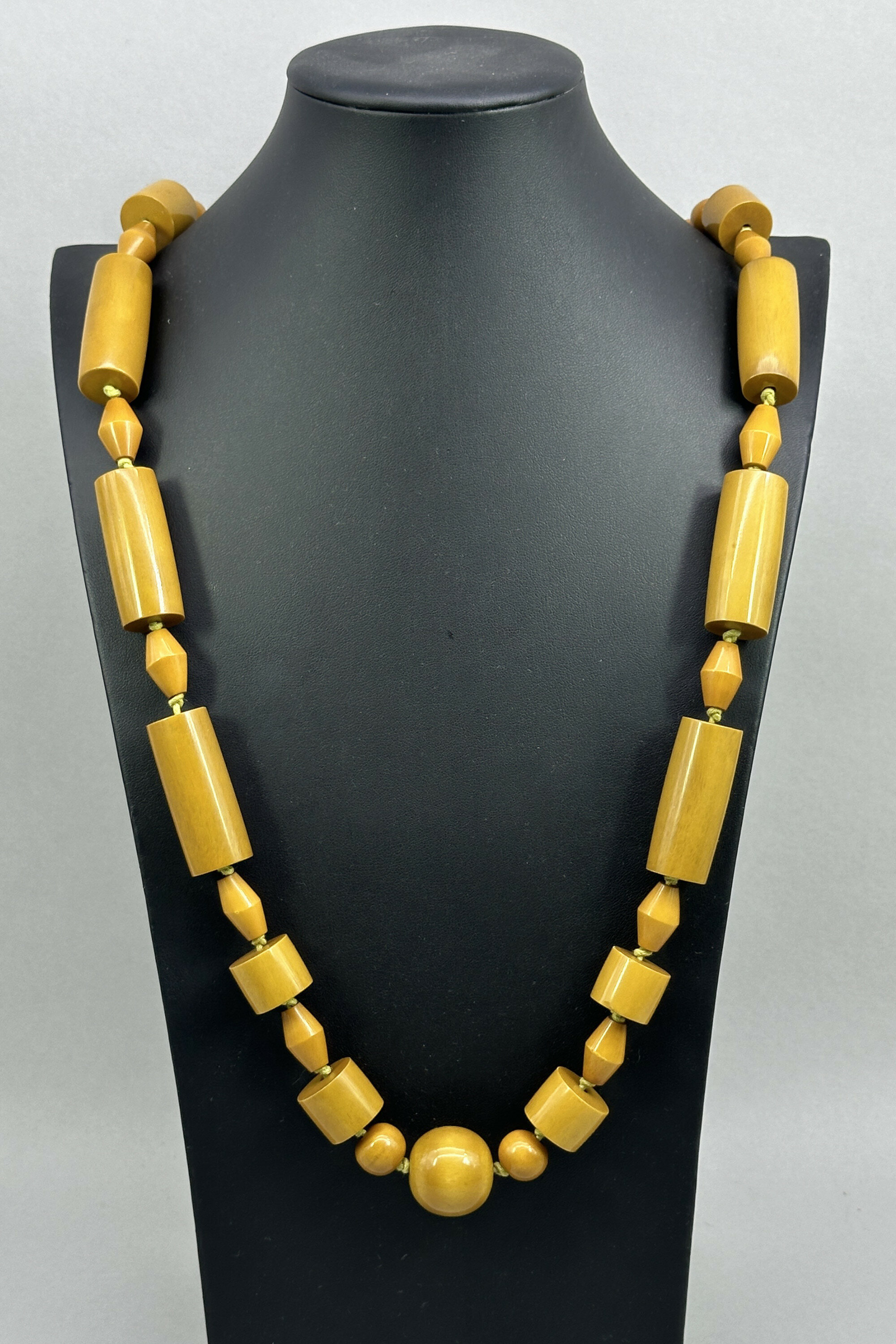
Art Deco Catalin Bakelite necklace, American c1930
Price: £125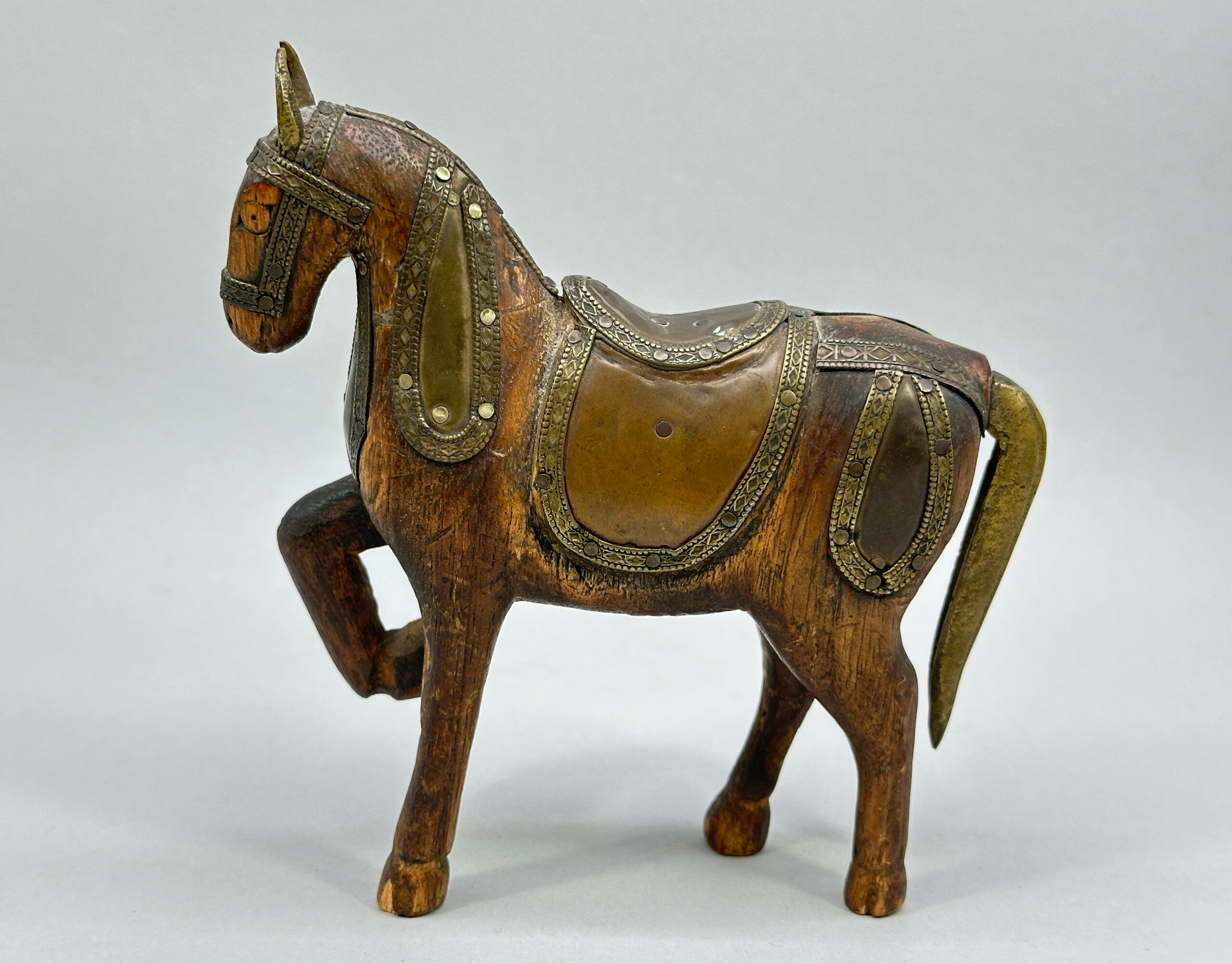
Indian wooden toy model of a Horse with metal fitments, early C20th
Price: £25
Maud Frizon Handbag c1980
Price: £150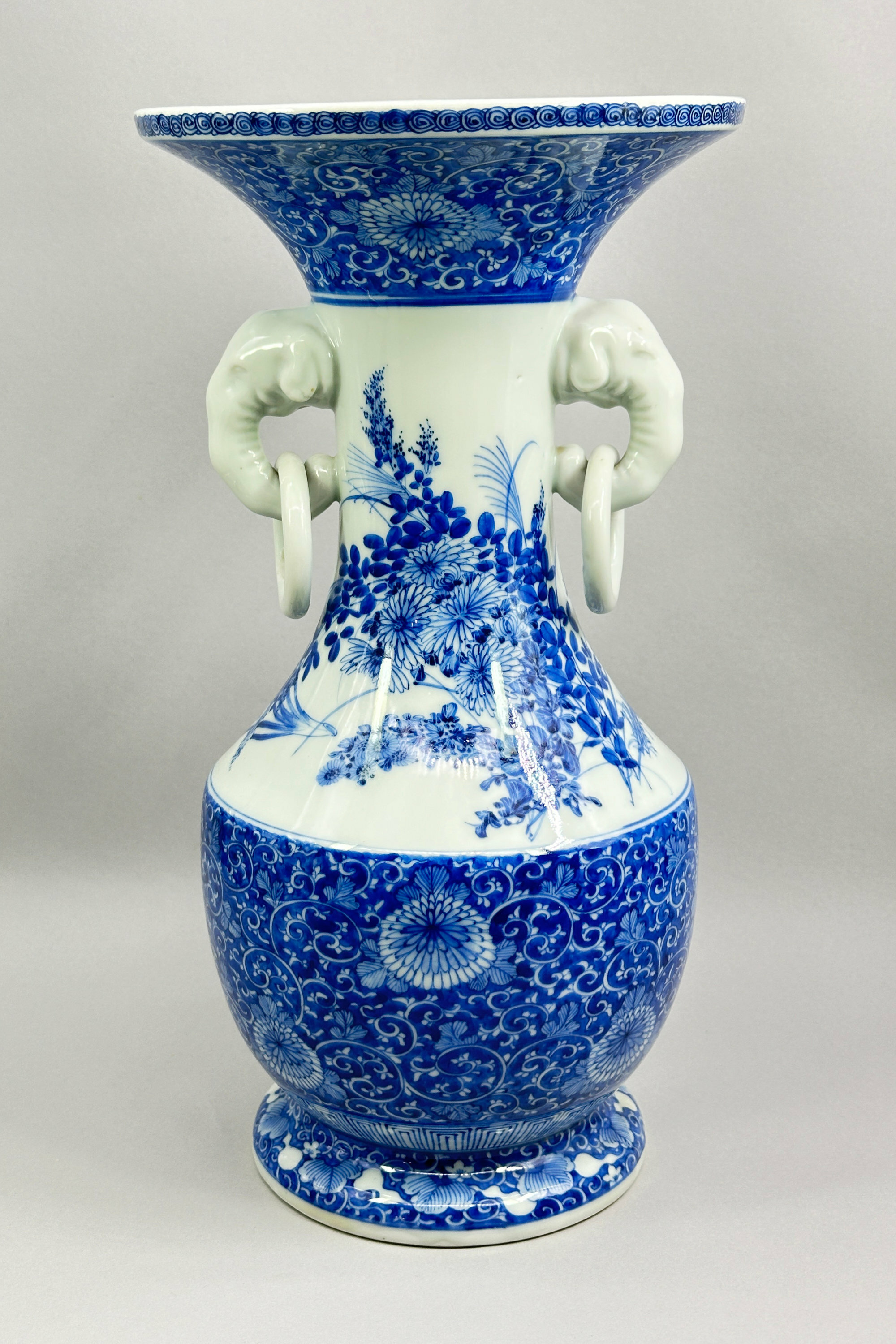
Japanese Seto Ware Blue and White Vase, late C19th
Price: £450A fine quality Japanese porcelain vase, the ovoid body with a curved flaring foot and rising to a tall concave neck with a well defined shoulder, applied elephant and ring handles to the sides and a galleried rim, decorated in bright underglaze blue with two bands of stylised flowering chrysanthemum at the top and bottom between a continuous scene of flowering peony and chrysanthemum, the top rim with repeating whorl design on the exterior and stylised leaf design inside, the stepped base glazed white.
The kilns at Seto in the Aichi prefecture of Japan and situated close to Nagoya form one of the traditional ‘Nihon Rokkoyo’, the six old kilns of medieval Japan. The location of Seto was ideal for the production of ceramics with an abundance nearby of both porcelain clay and forests to provide firewood for the kilns. Production began as early as the Heian period (794-1185) and continued without a break thereafter, the earlier pieces being more pottery forms copying Chinese wares. It was in the early nineteenth century that the kilns turned to producing porcelains decorated in underglaze blue and white, a development initiated by the potter Tamikichi Kato who went to Arita to learn the techniques of its production there, returning to Seto in 1807. Production grew and developed and was directed towards the export market in the Meiji period (1868-1912) with Seto wares being displayed at the European and North American exhibitions and fairs. Their delicately painted designs of birds and flowers proved to be immensely popular and were, in their time, to influence Art Nouveau and Art Deco designs. Some of the forms produced were truly virtuoso creations including, besides vases, screens, jardinieres and even ceramic tables.
Signed pieces are known and besides Tamikichi Kato the distinguished potters included the Kichiemon brothers, Kato Chuji and Kawamoto Jihyoe, and Kawamoto Hansuke. But not all the best pieces carried an artist’s signature as this vase well demonstrates. Formed from fine quality clay, as can be seen from the foot rim (image 10), the complex shape with its spreading base, angled shoulder and galleried rim would have been difficult to create. The handles show remarkable skill with the rings somehow formed so as to hang loose (presumably some form of kiln waster technique was used). The detail and artistry of the painting speaks for itself. Note in particular the shading effects on the peony flowers. While not perhaps an exhibition piece, this vase is definitely of exhibition quality and would be a worthy addition to a collection of nineteenth century Japanese ceramic art.
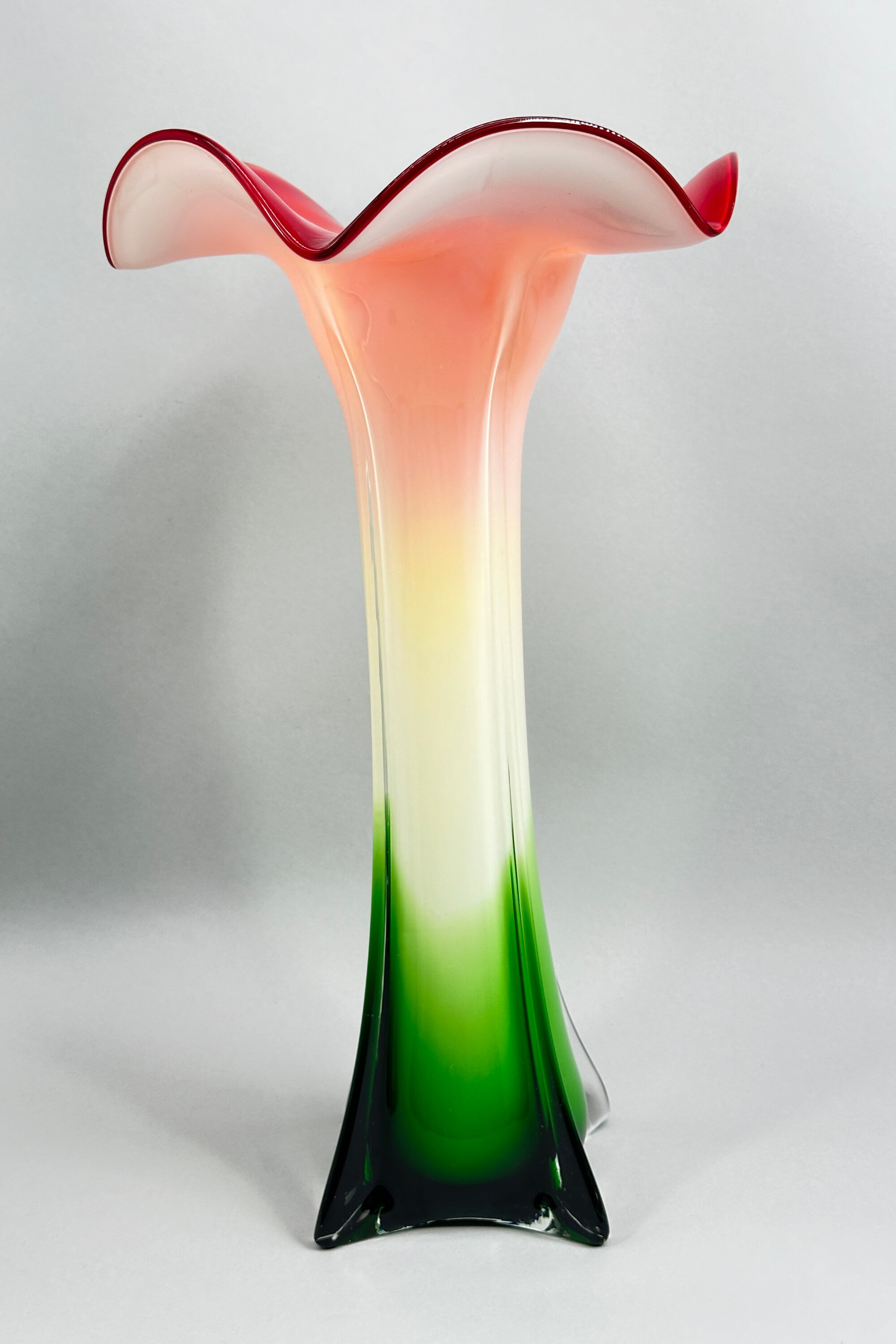
Murano Style Calla Lily Trumpet Shape Vase, second half C20th
Price: £75
Continental Figure of a Cellist, Conta and Bohme, Germany late C19th
Price: £55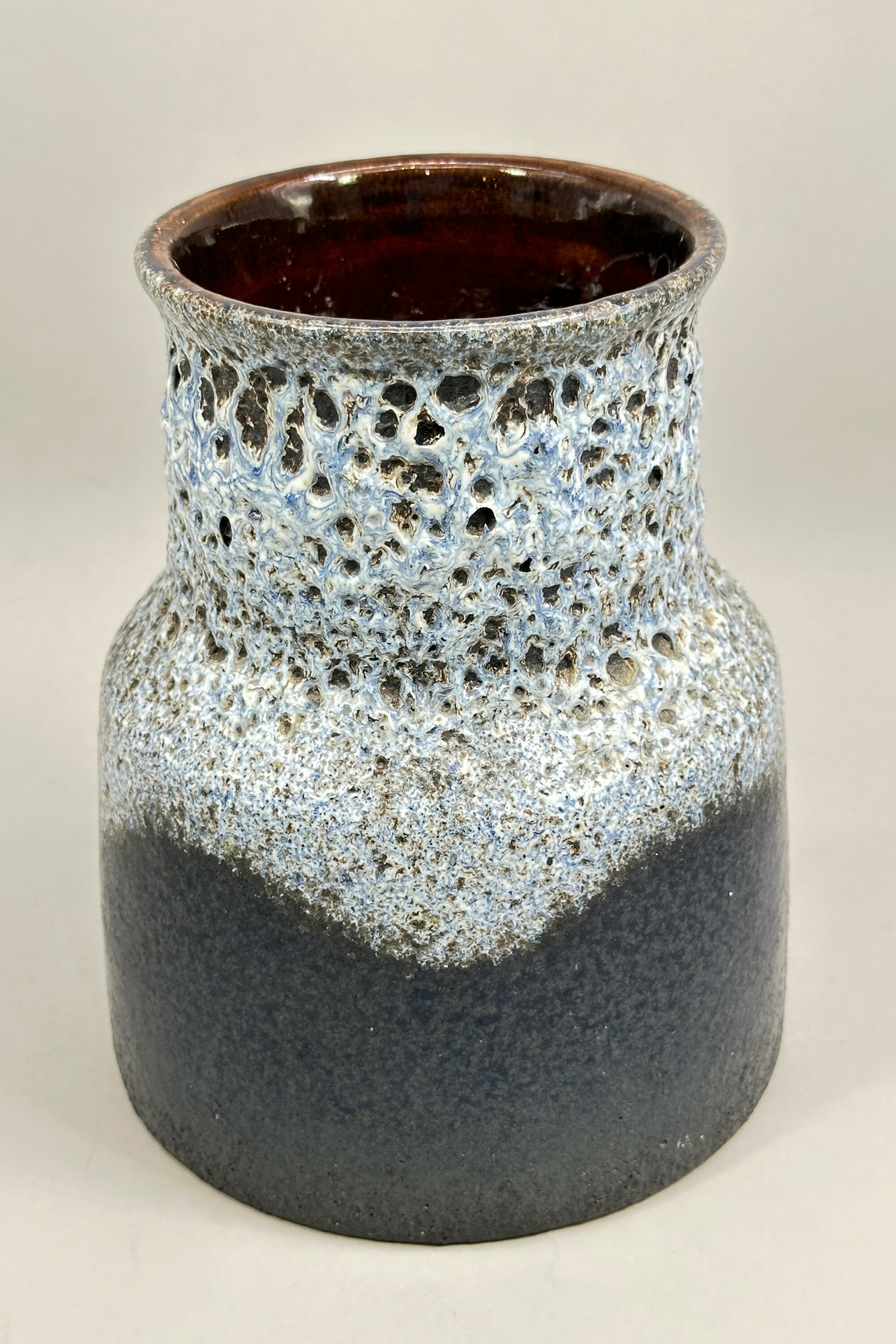
West German Pottery Lava Glaze Vase, Scheurich, 1960s
Price: £45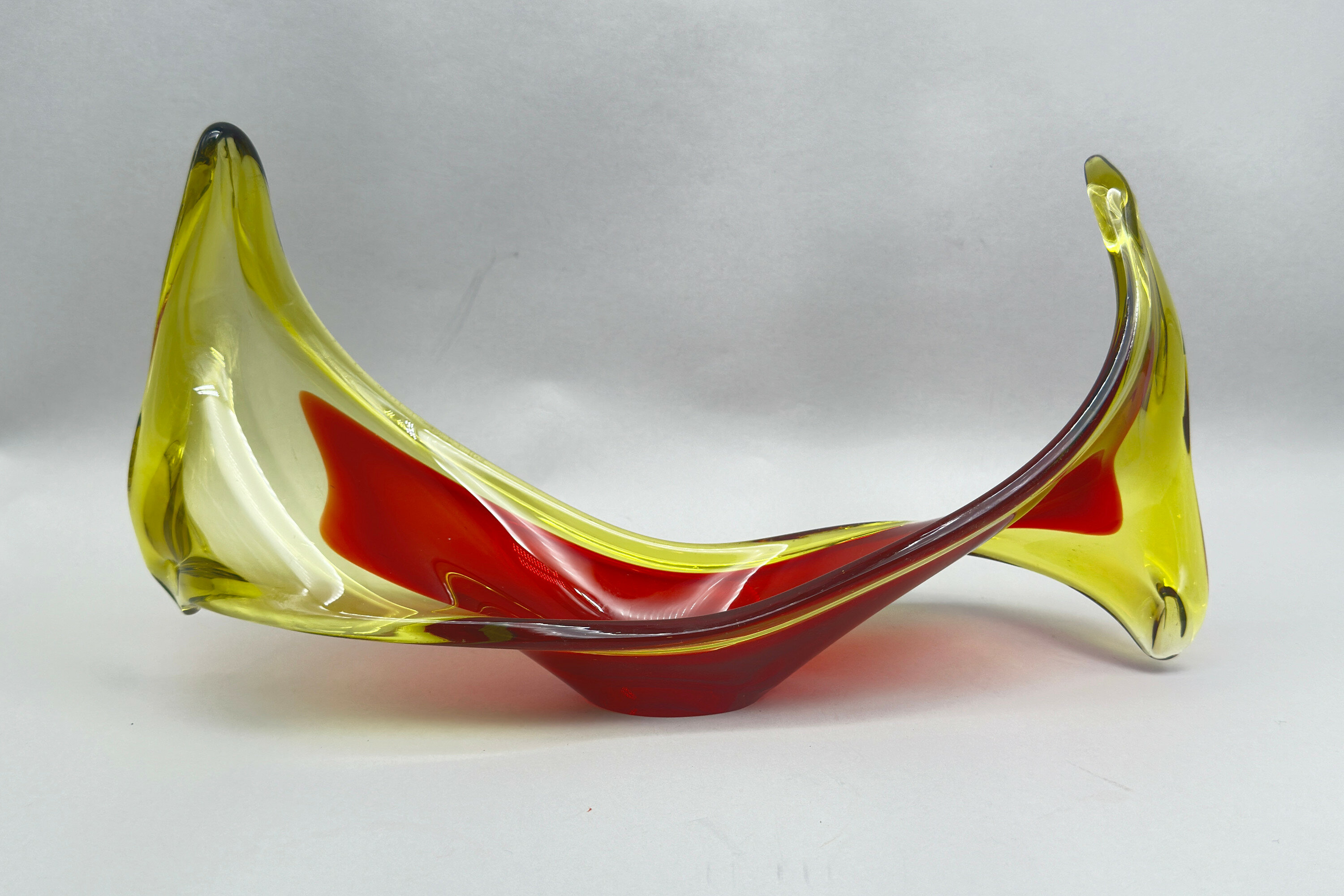
Viartec Murano Style Selenium Red & Orange Glass Sculptural Dish, Spanish 1950s/1960s
Price: £45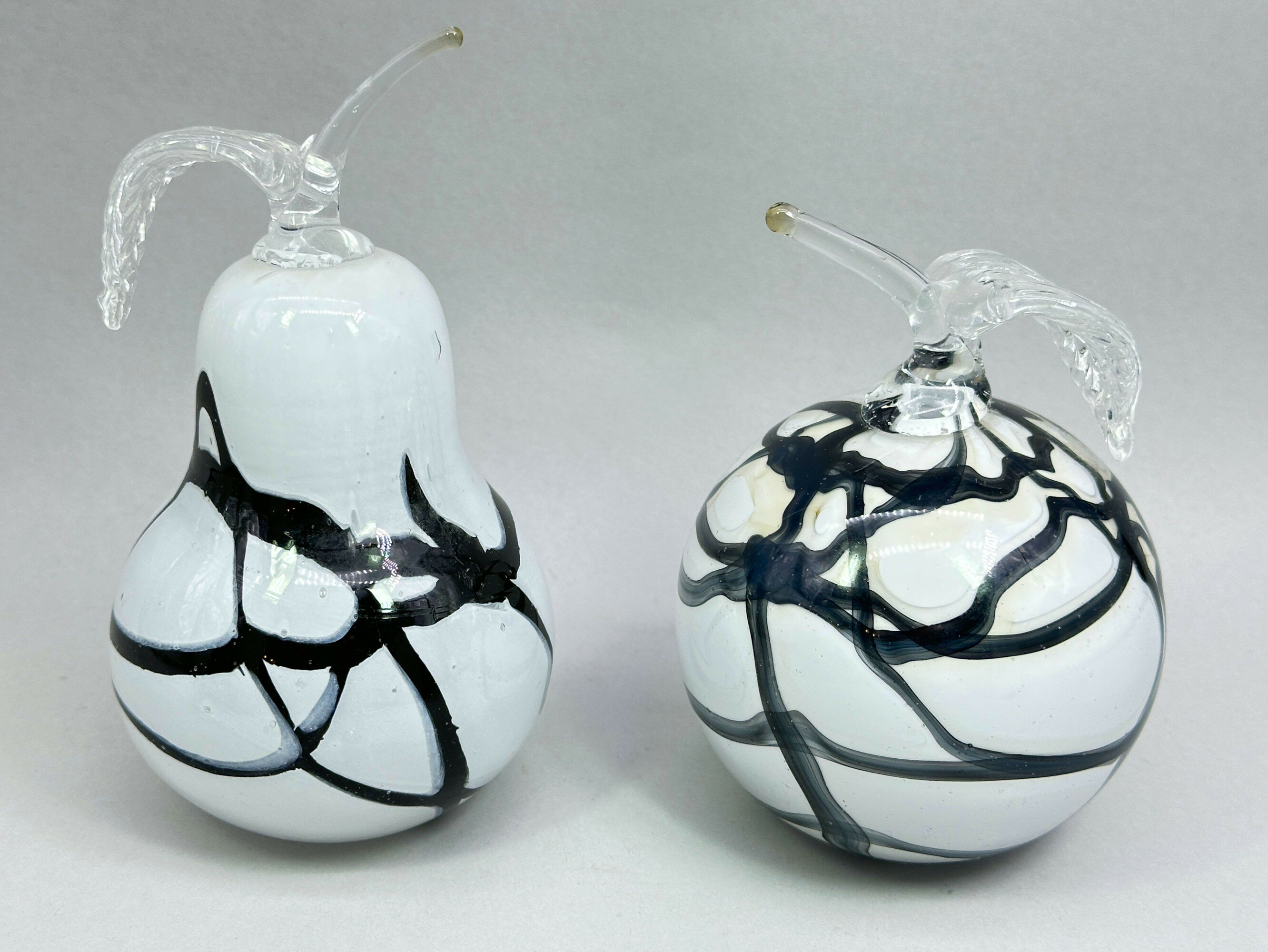
Two Amelia Art Glass Vases, Apple and Pear
Price: £30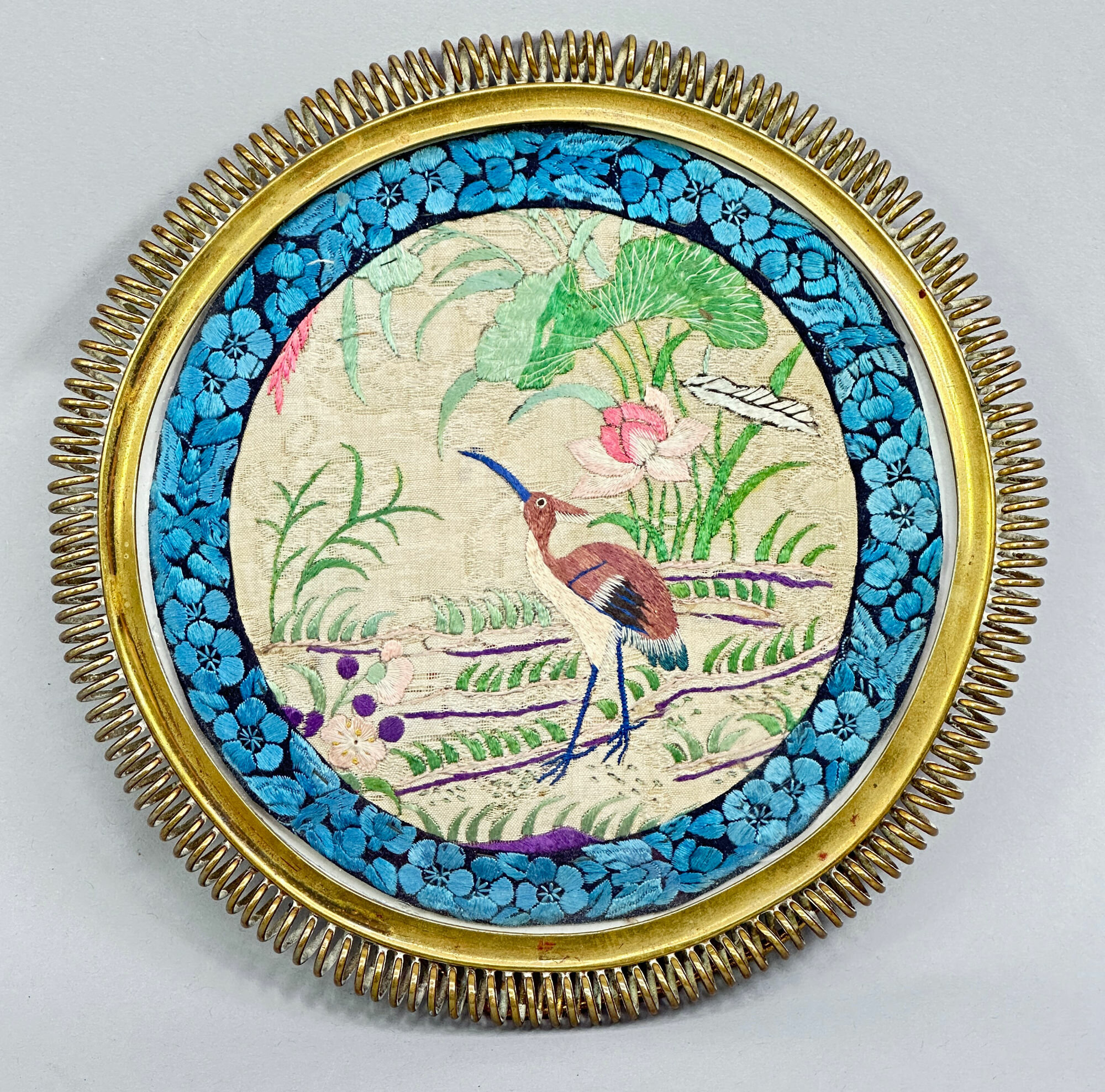
Chinese circular silk textile Panel in later European brass metal Frame, C19th/C20th
Price: £55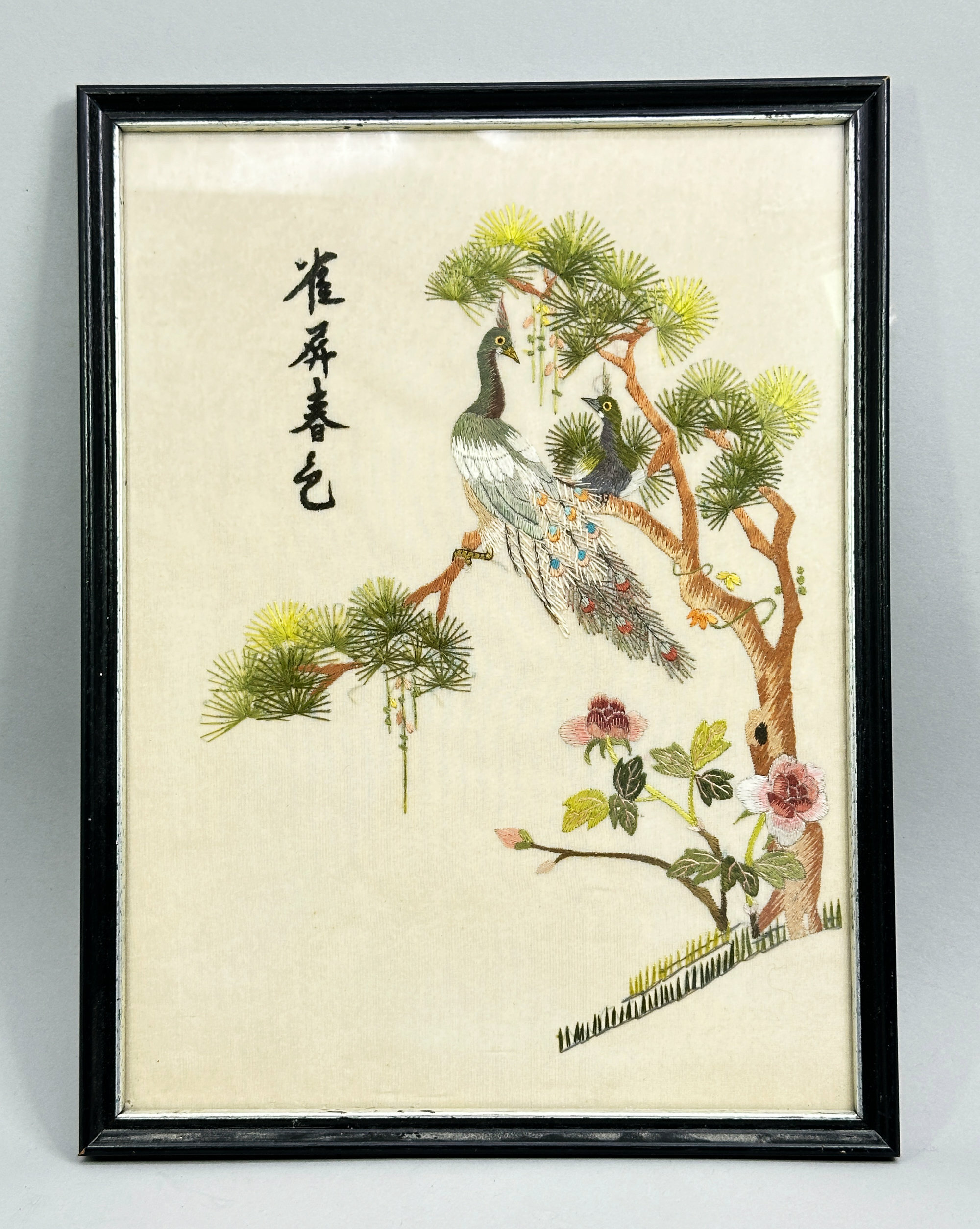
Framed Chinese Embroidery Silk Textile, signed, second half C20th
Price: £25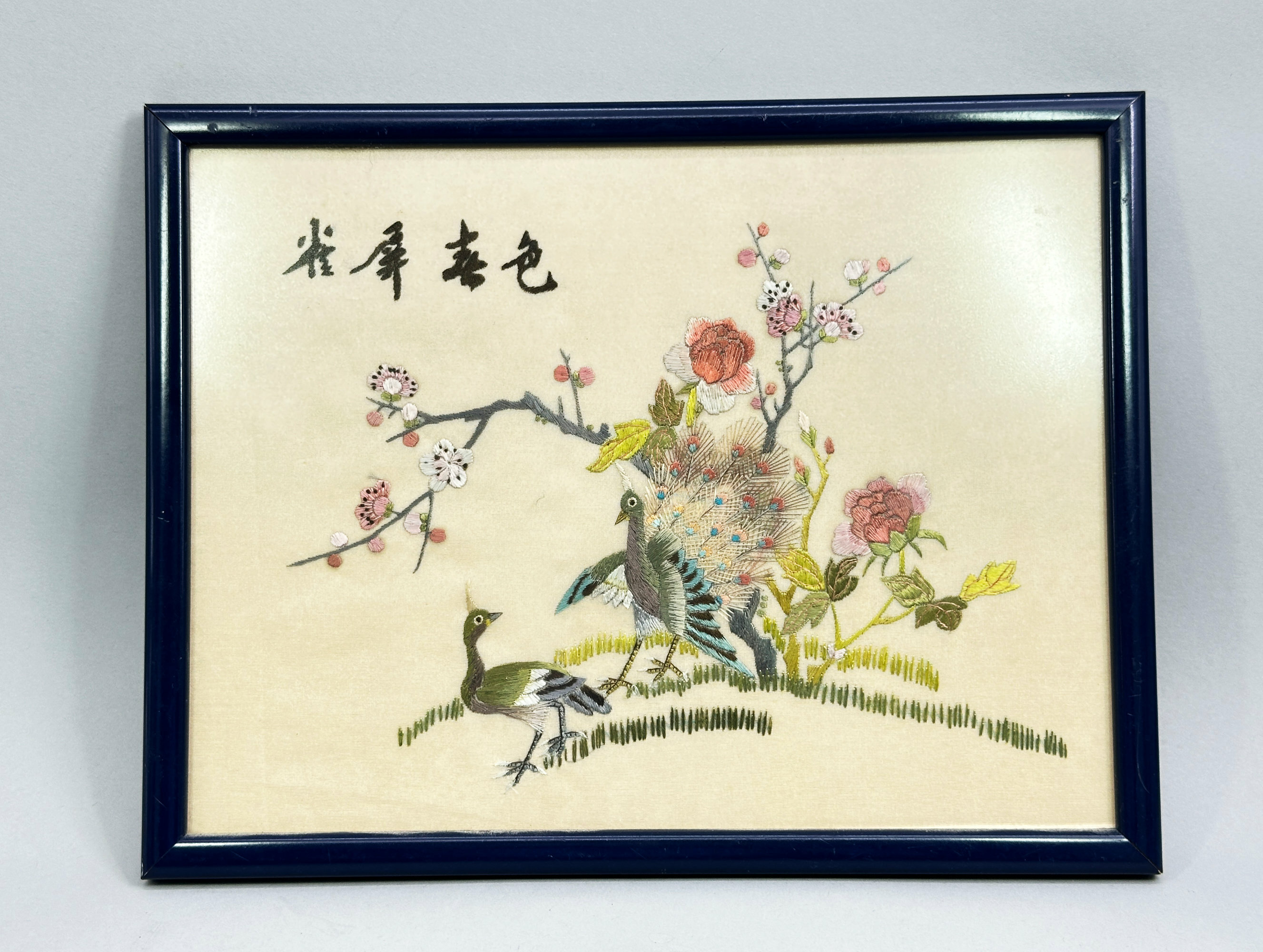
Framed Chinese Embroidery Silk Textile, signed, second half C20th
Price: £25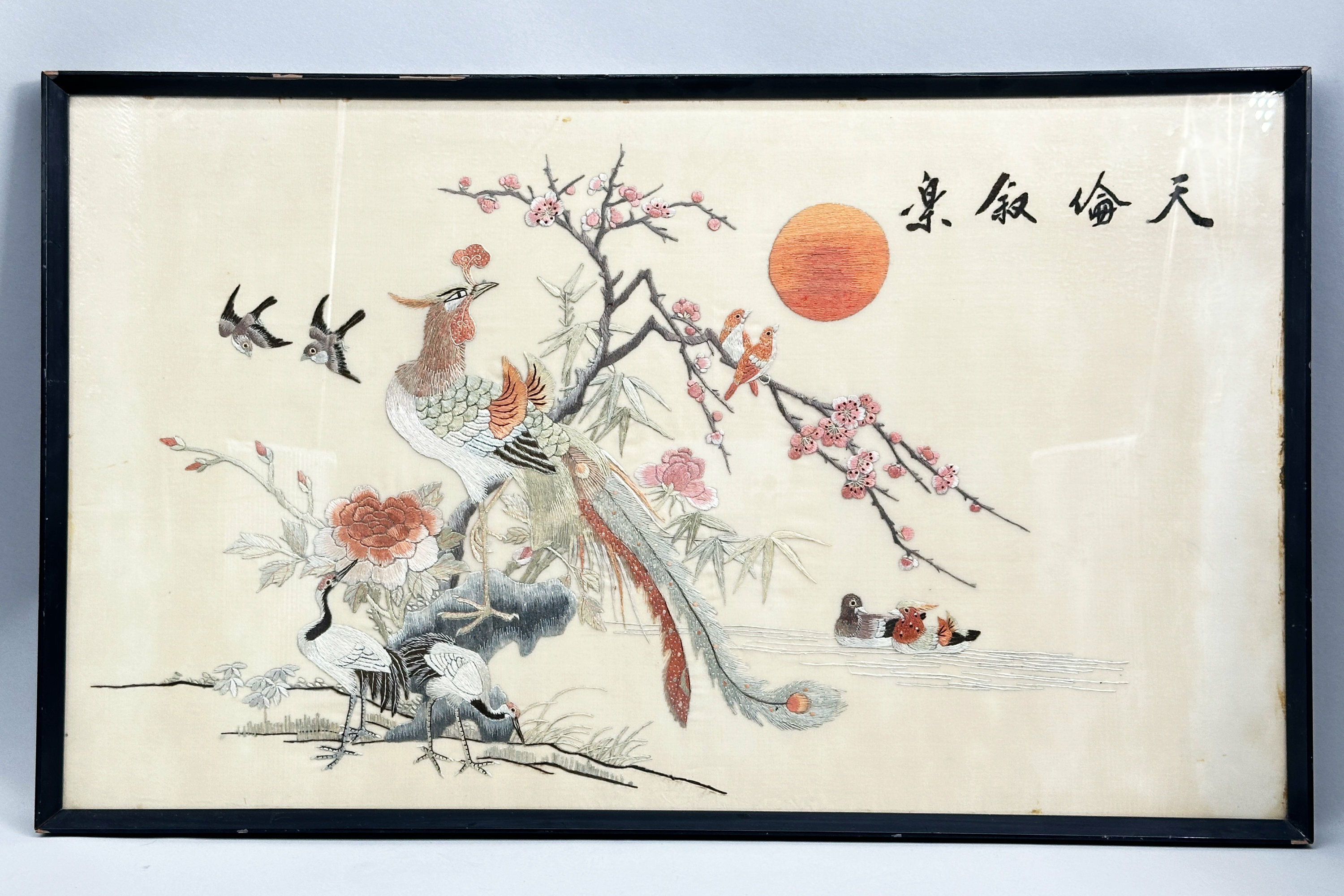
Framed Chinese Embroidery Silk Textile, signed, second half C20th
Price: £45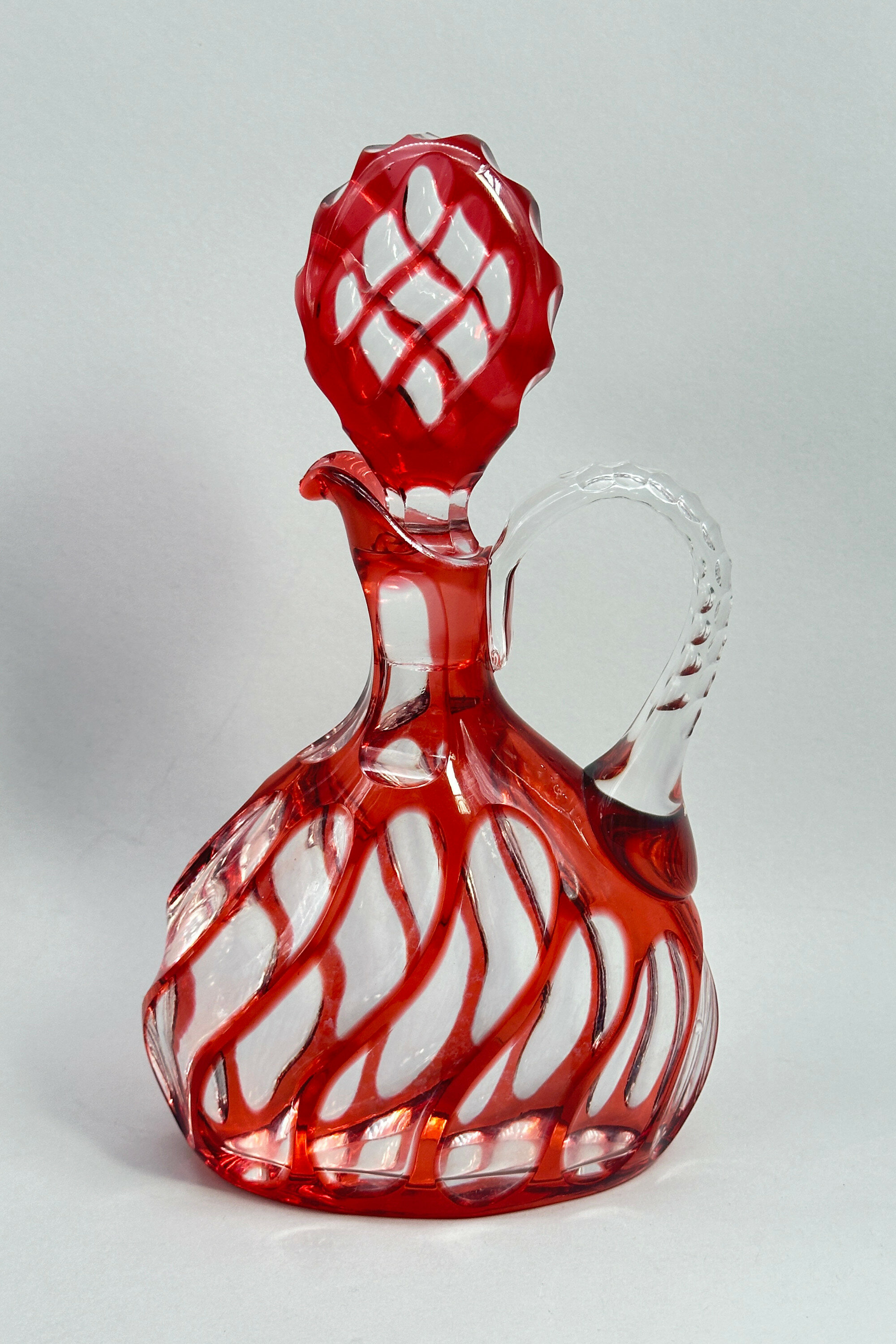
Swirl design Cranberry glass Decanter and Stopper, probably Italian mid C20th
Price: £45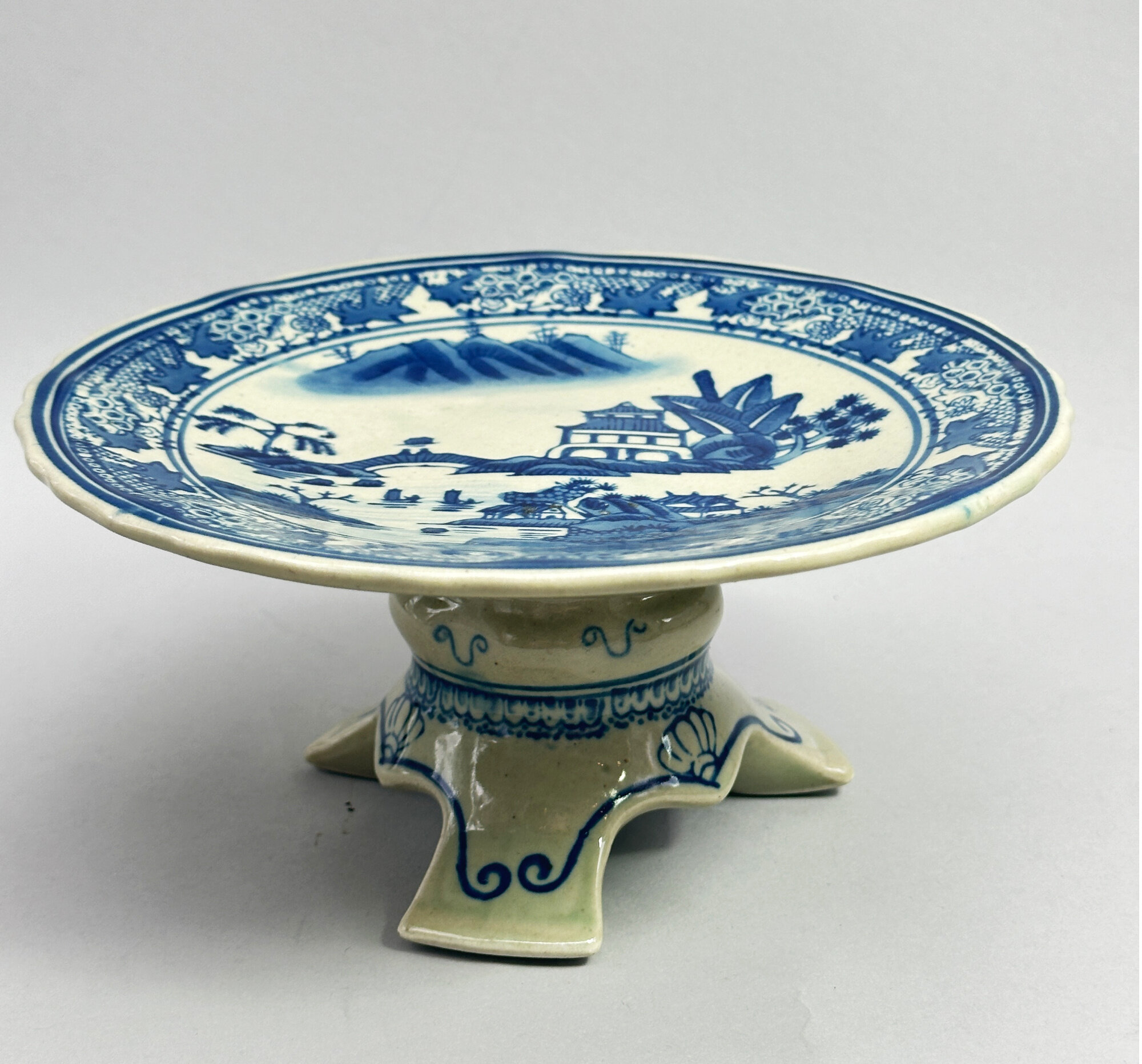
Japanese Celadon Ground Tazza with Chinese Nanking decoration, late C19th
Price: £25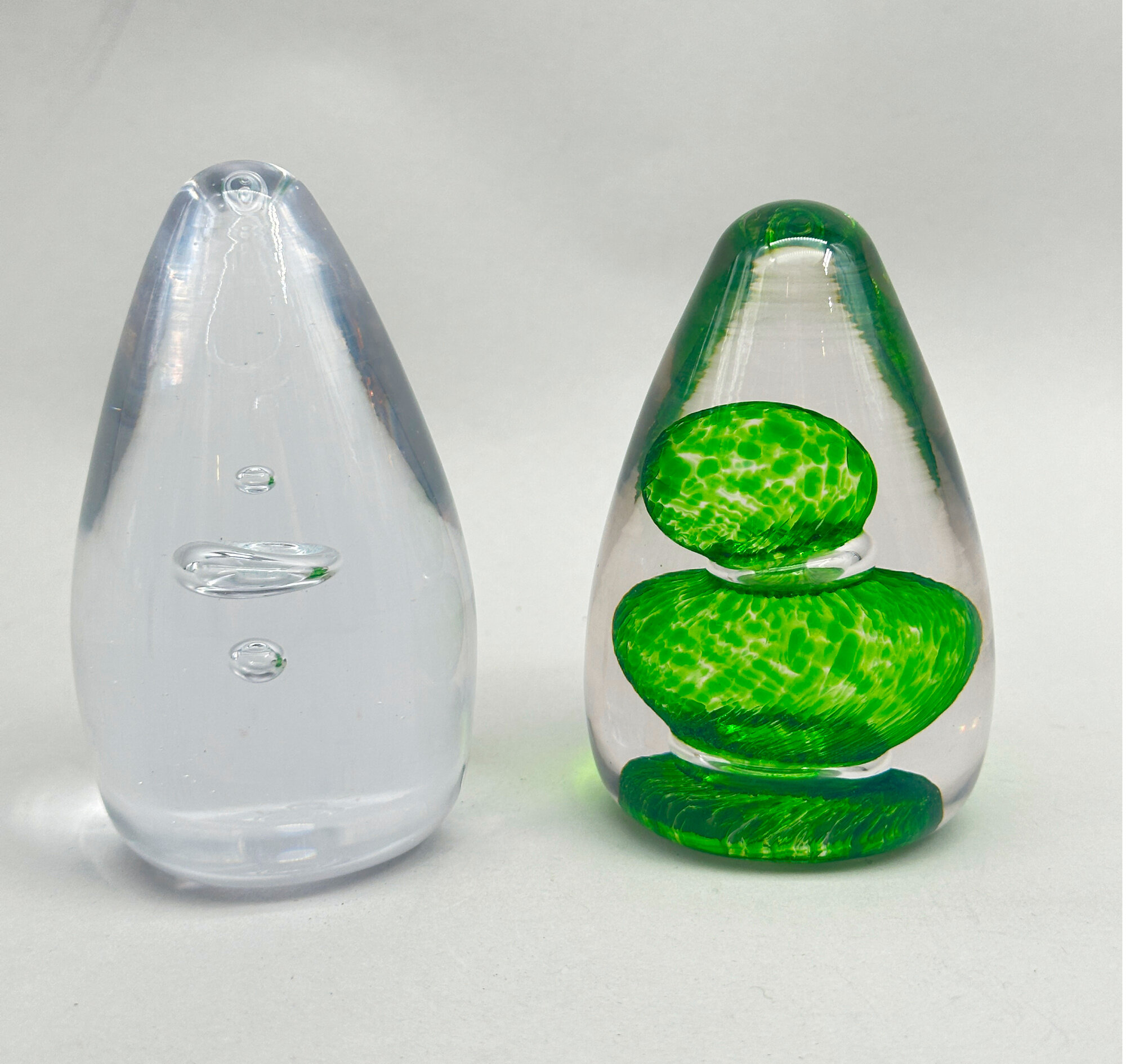
Two Wedgwood Glass paperweights designed by Ronald Stennett-Wilson, late C20th
Price: £40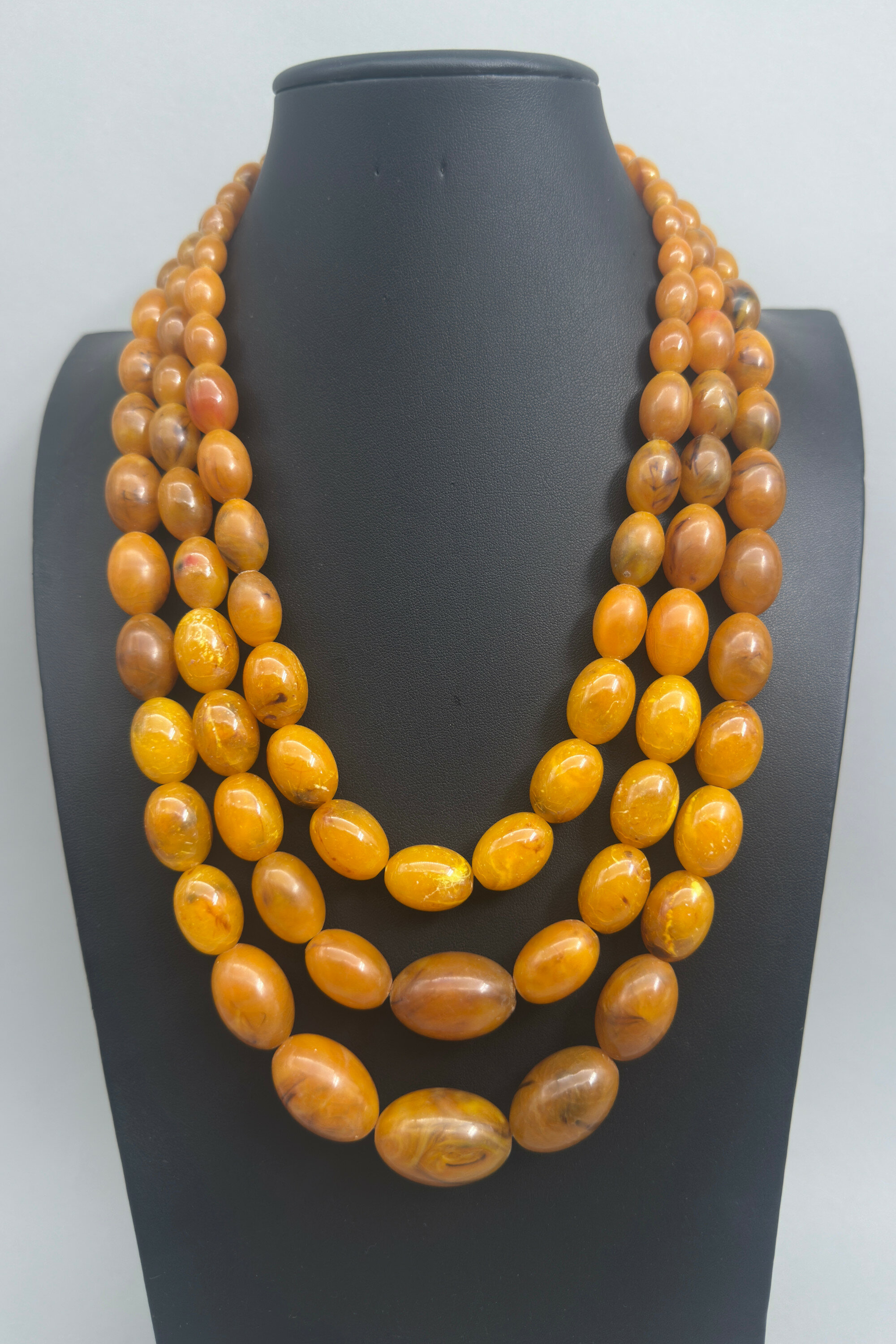
Triple strand of amber Bakelite beads, British 1930s
Price: £750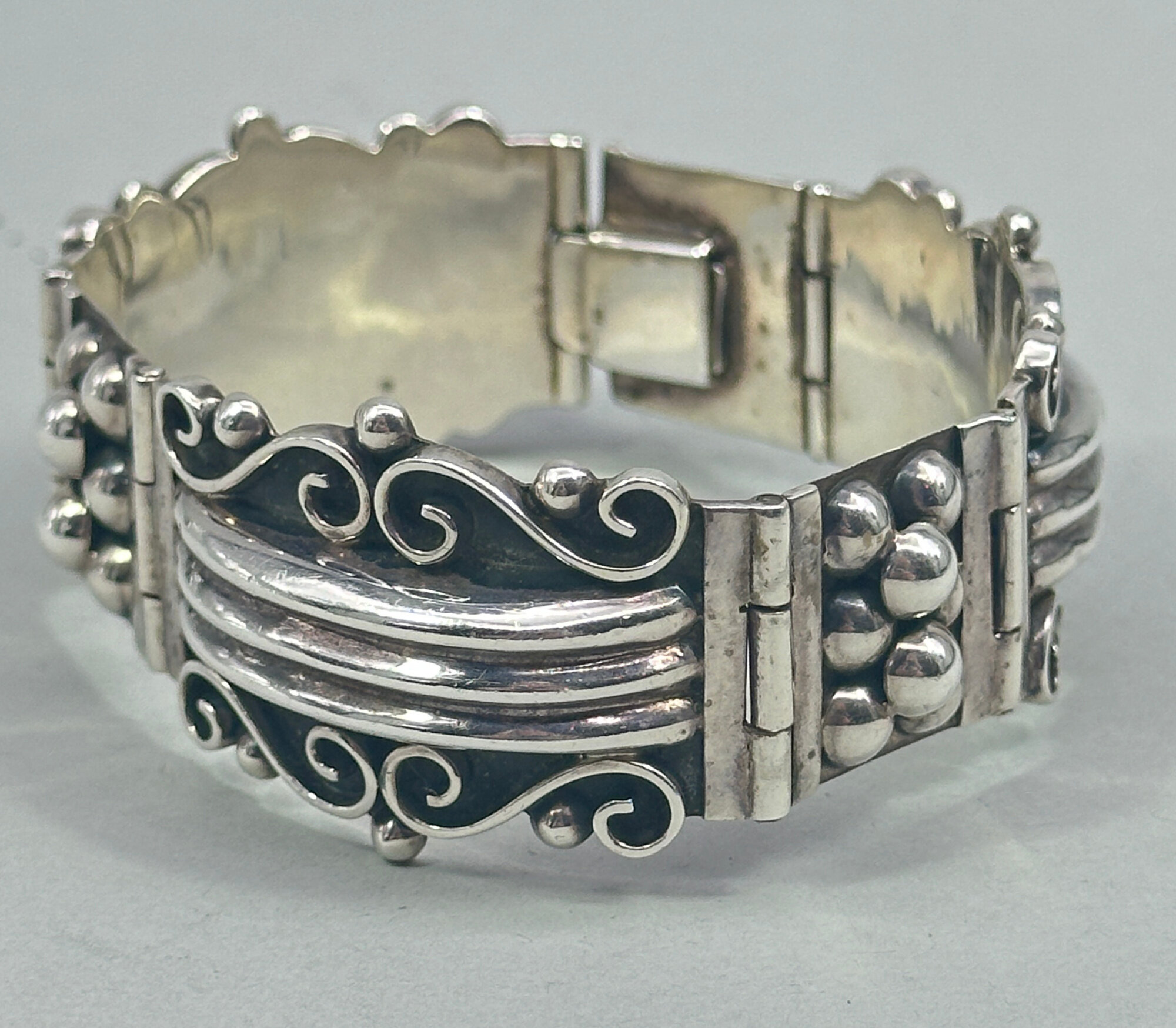
Outstanding Taxco silver bracelet c1960
Price: £295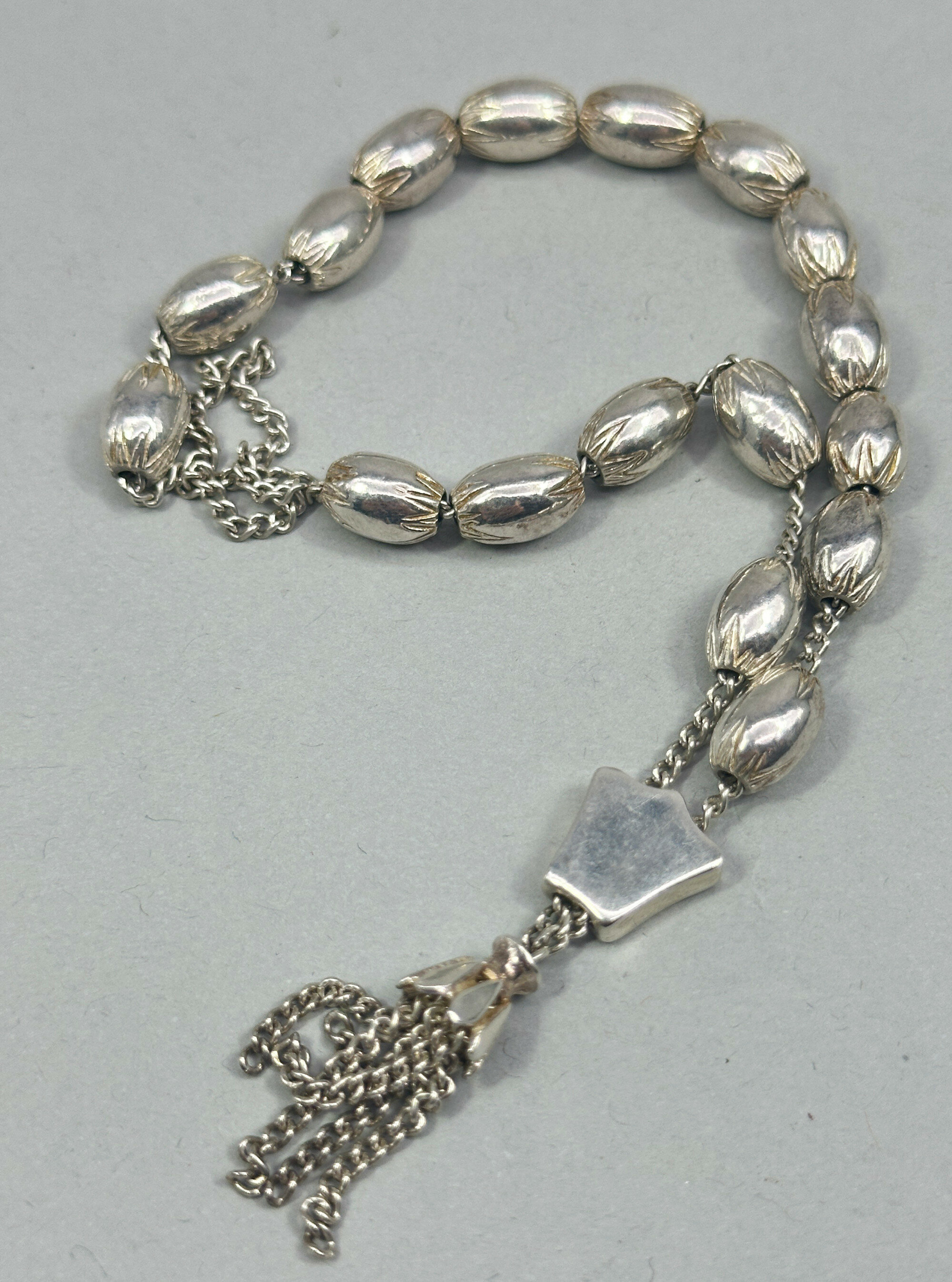
Silver prayer beads with seventeen Beads, 20th century
Price: £75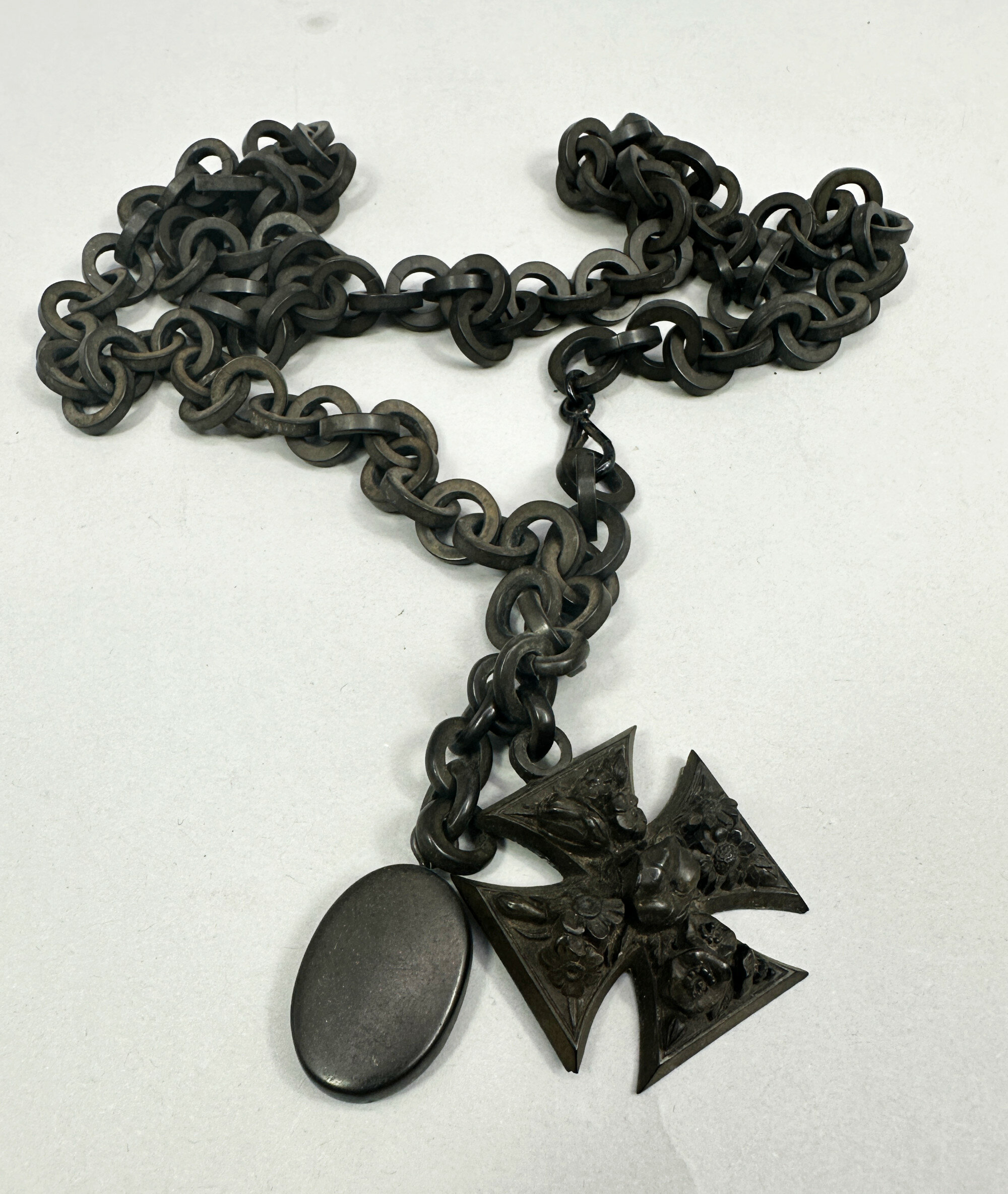
Vulcanite long necklace with Maltese cross and fob c1880
Price: £195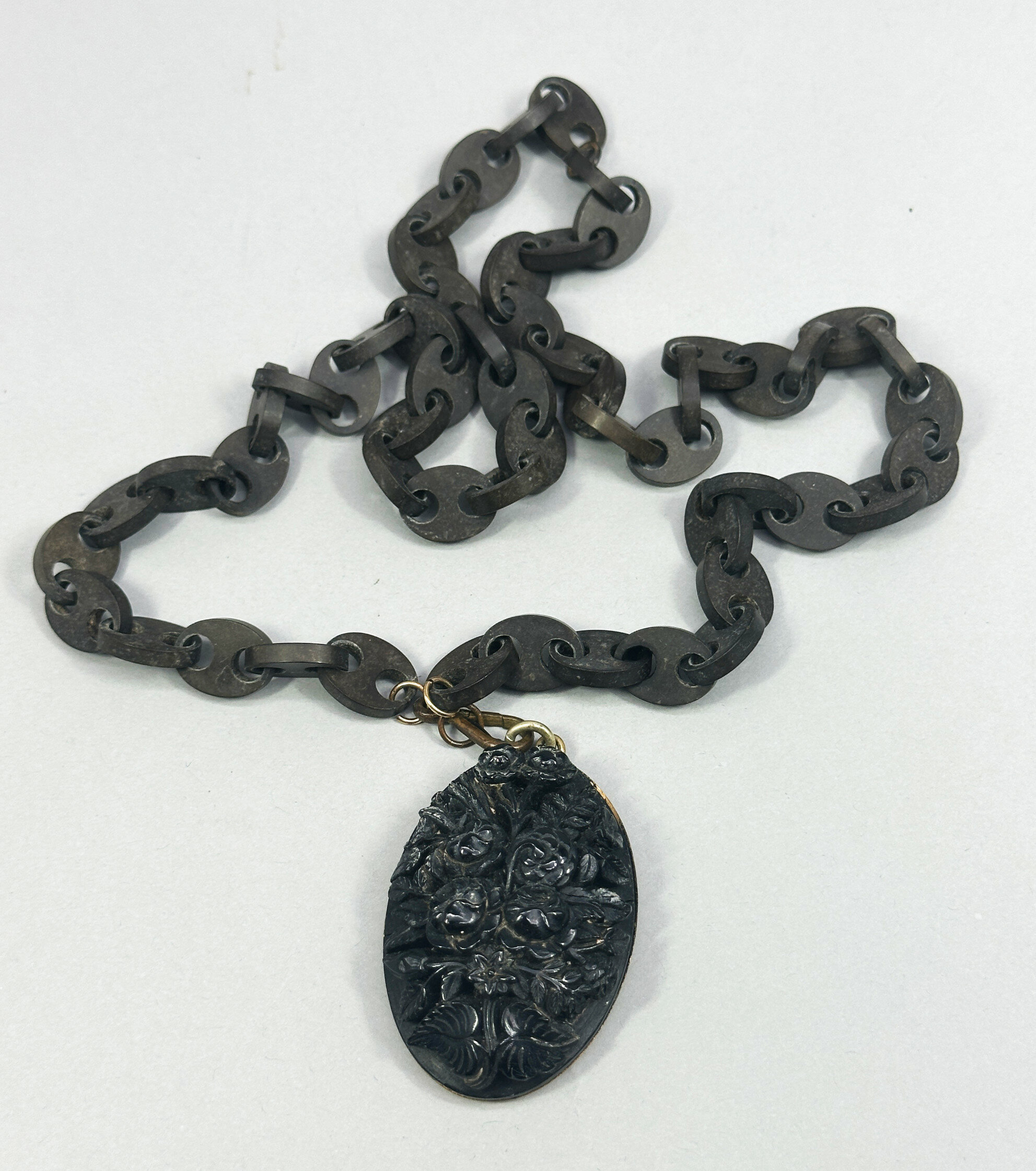
Victorian vulcanite anchor chain necklace with carved jet pendant c1880
Price: £195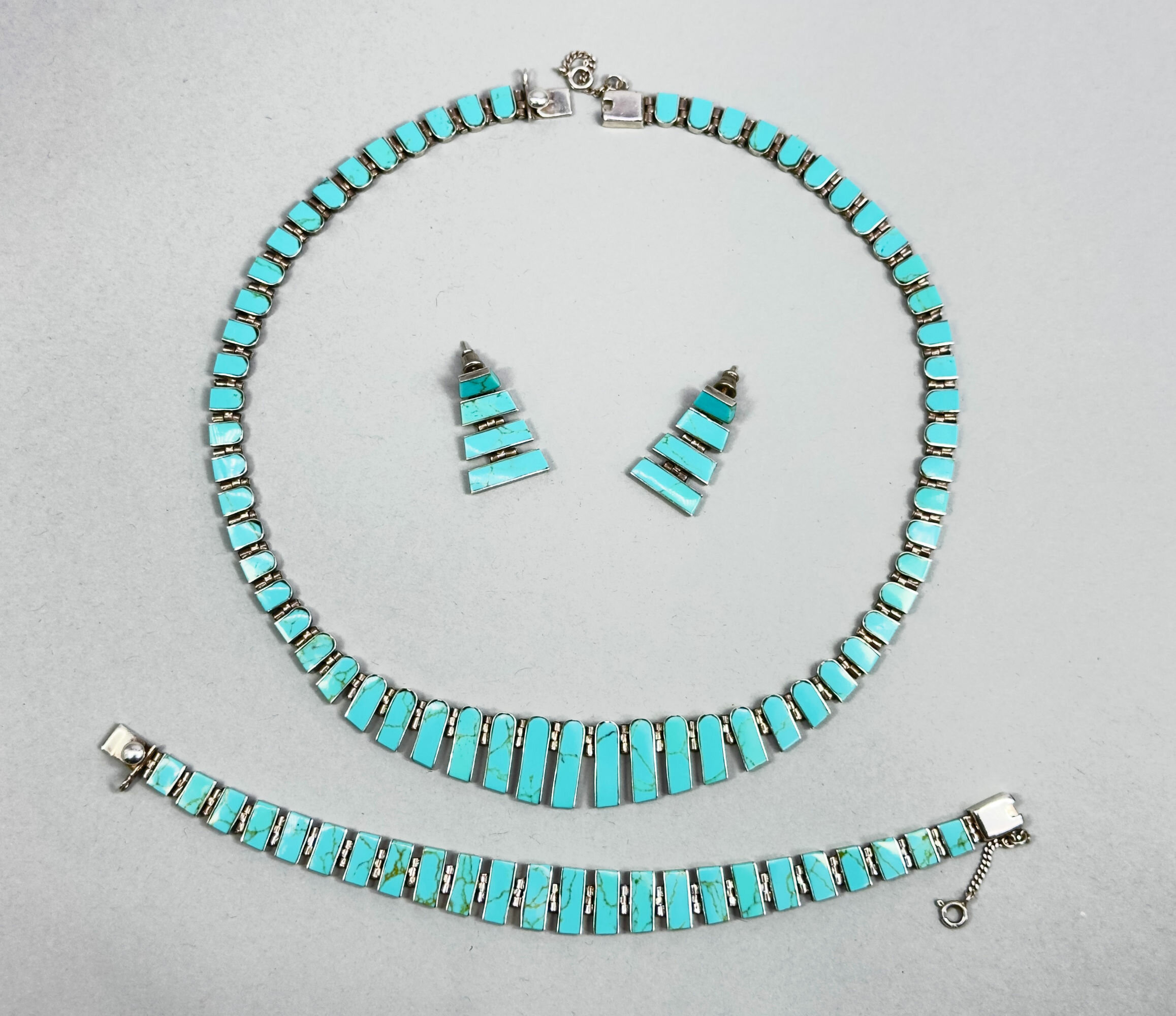
Suite of Taxco - necklace, bracelet and earrings c1960
Price: £475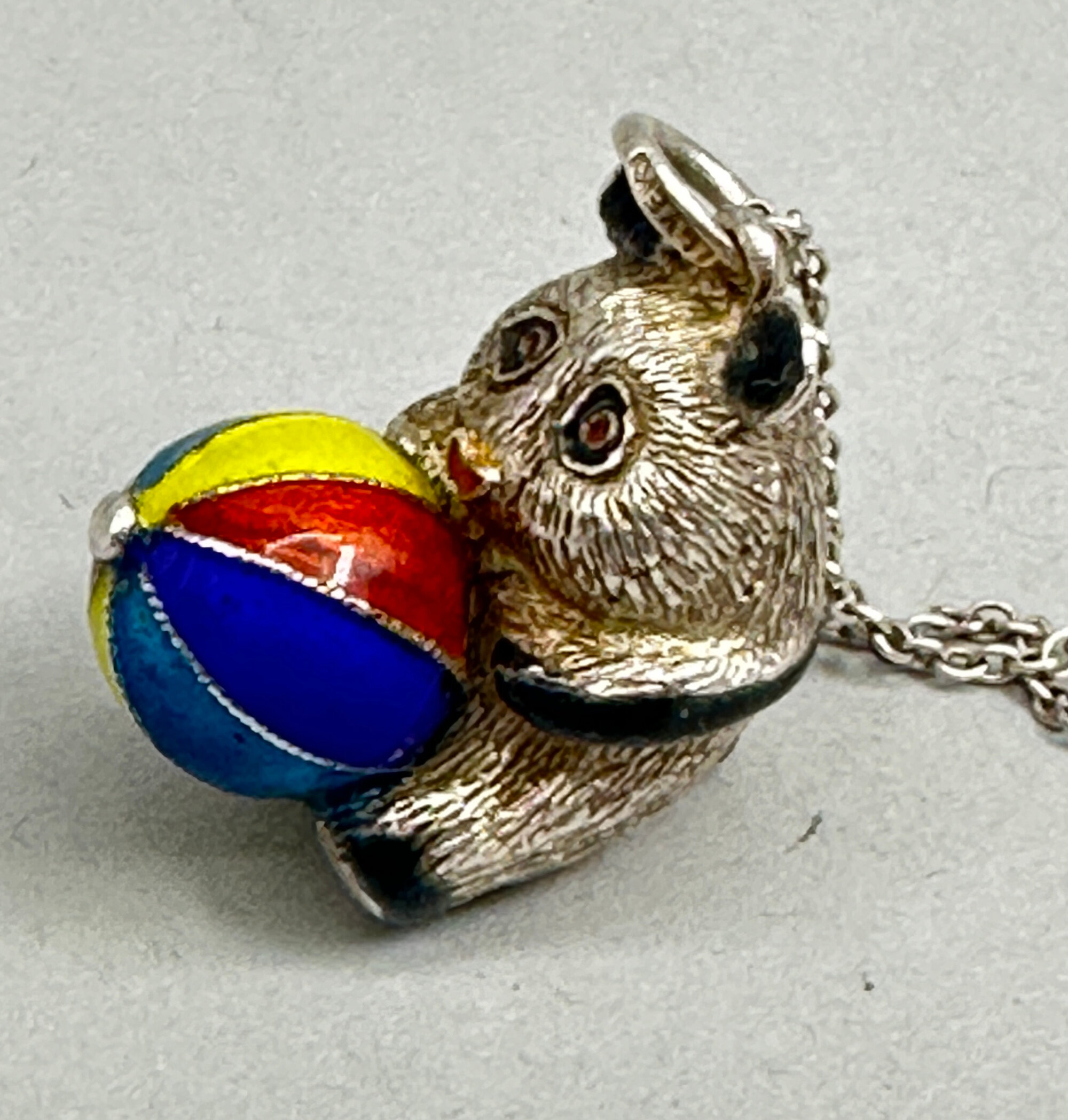
Sold silver and enamel Panda pendant necklace c1980
Price: £55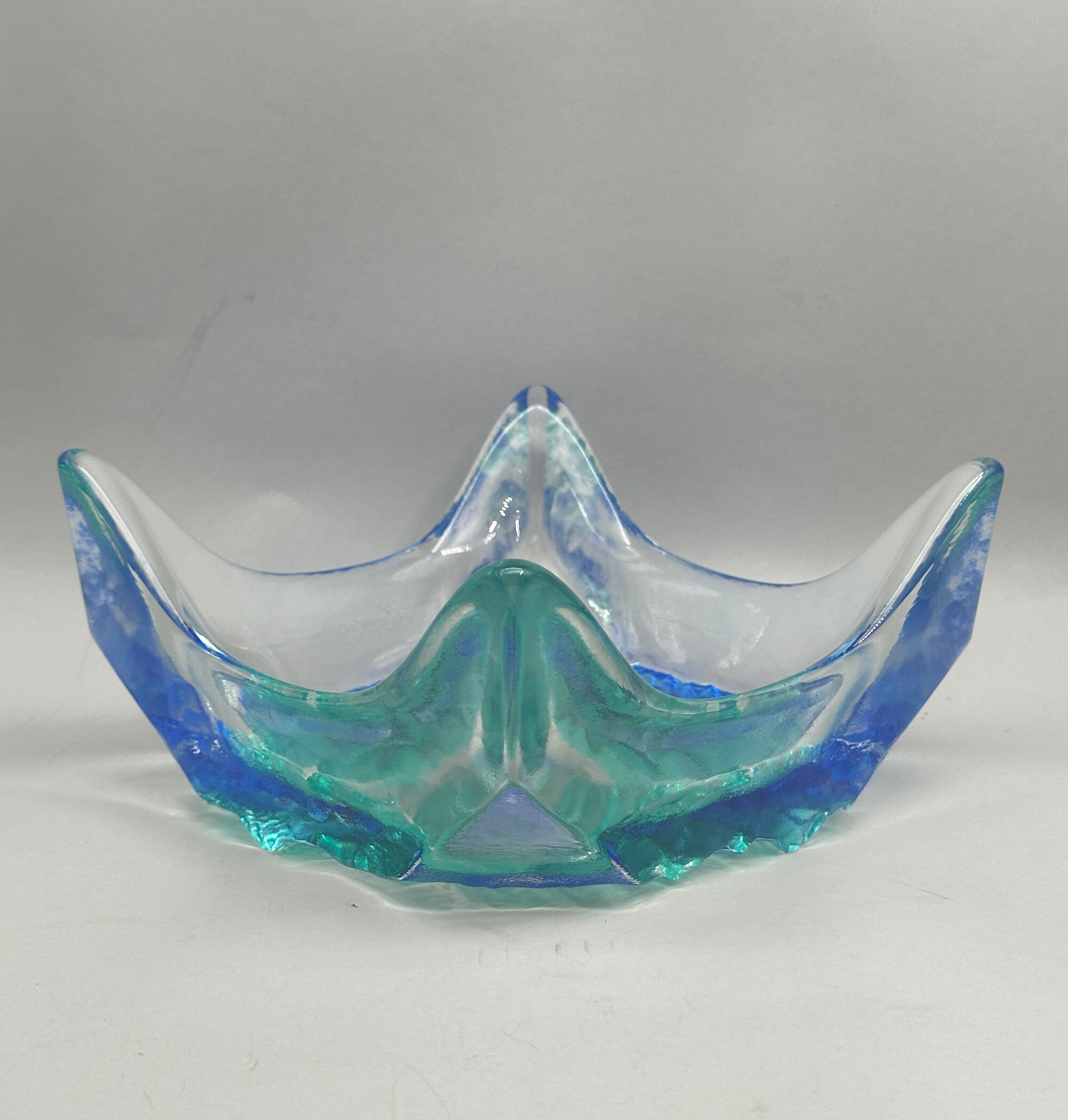
Blue and Green Ice Glass Square Bowl, possibly Pukeberg, late C20th
Price: £45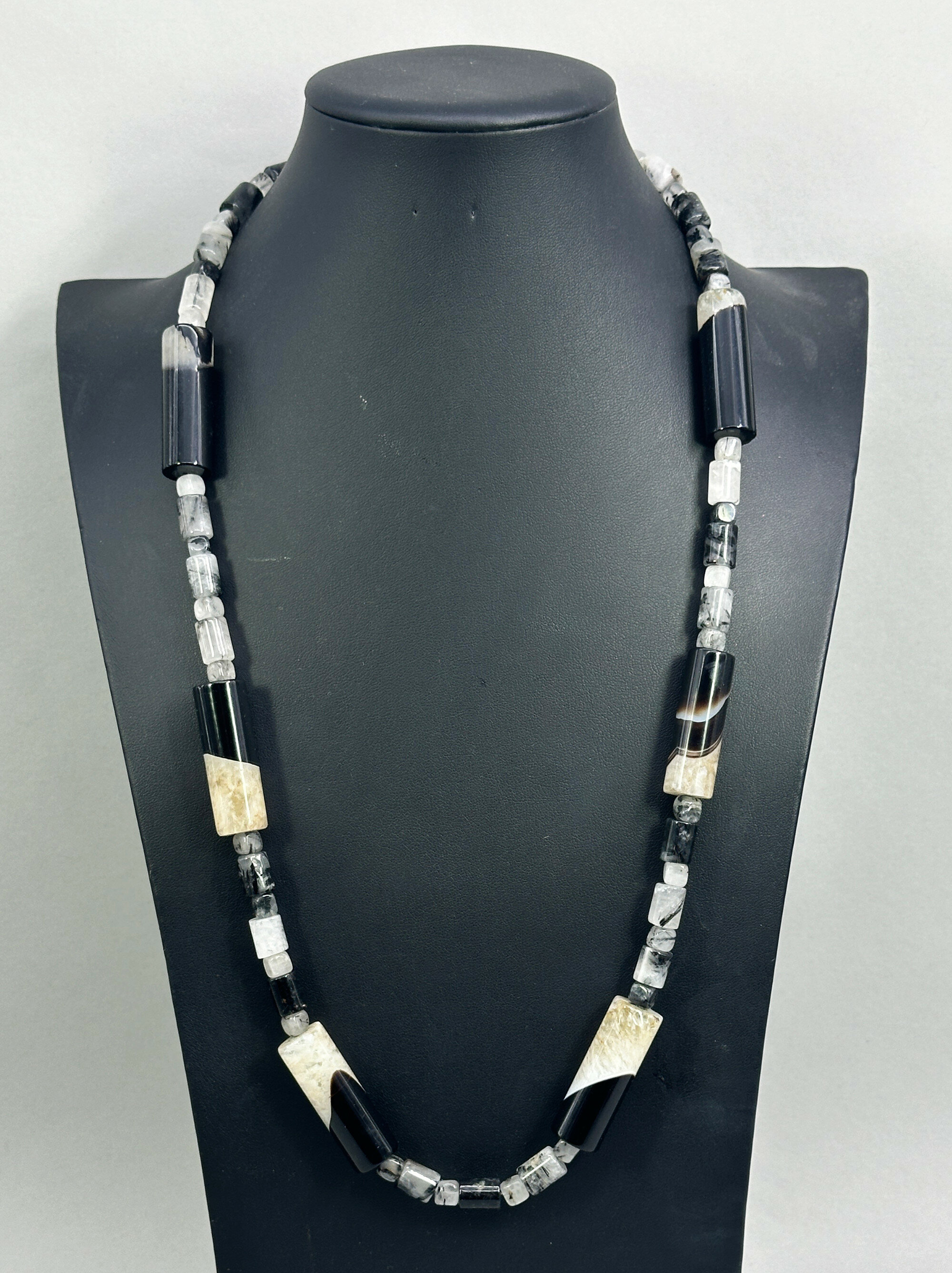
Monochrome tubular bead necklace, Modern
Price: £95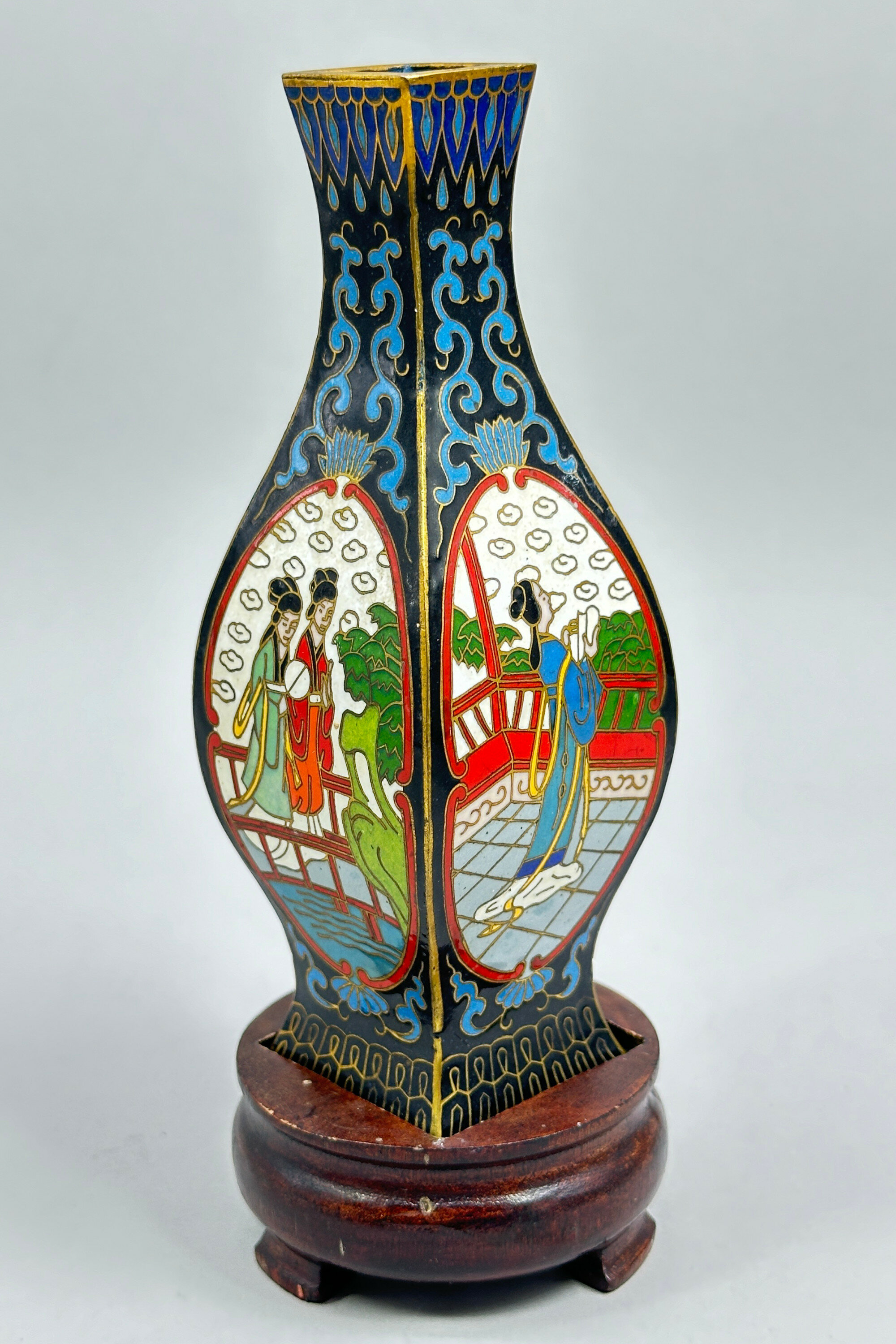
Chinese Cloisonné Square Vase on Stand, C20th
Price: £25The cloisonné technique, in which glass derived enamels were set in wire outlines (the so called ‘cloisons’ from the French word), was developed in China in the early Ming dynasty (1368-1644) and then used throughout, right up until the C20th, indeed pieces are still produced today. The style of enamelling here with fairly bold outlines to the decoration and the use of bright enamel colours suggests a dating here to the mid twentieth century which corresponds to the probable date of the accompanying wood stand. Perhaps intended as a desk ornament or possibly a flower vase, this piece could certainly find a home in a contemporary setting.
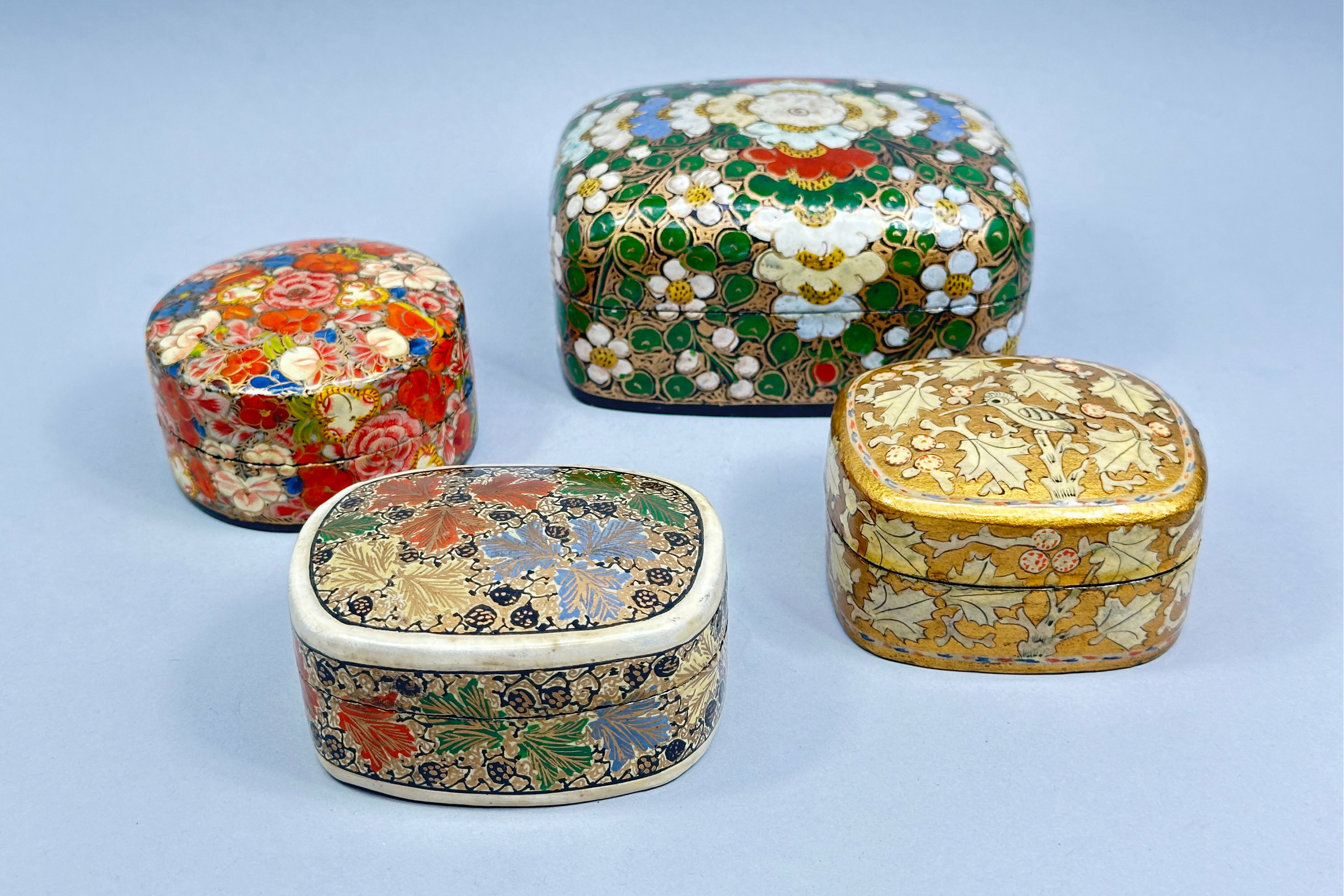
Four Papier-mâché Trinket Boxes, Kashmir, mid C20th
Price: £35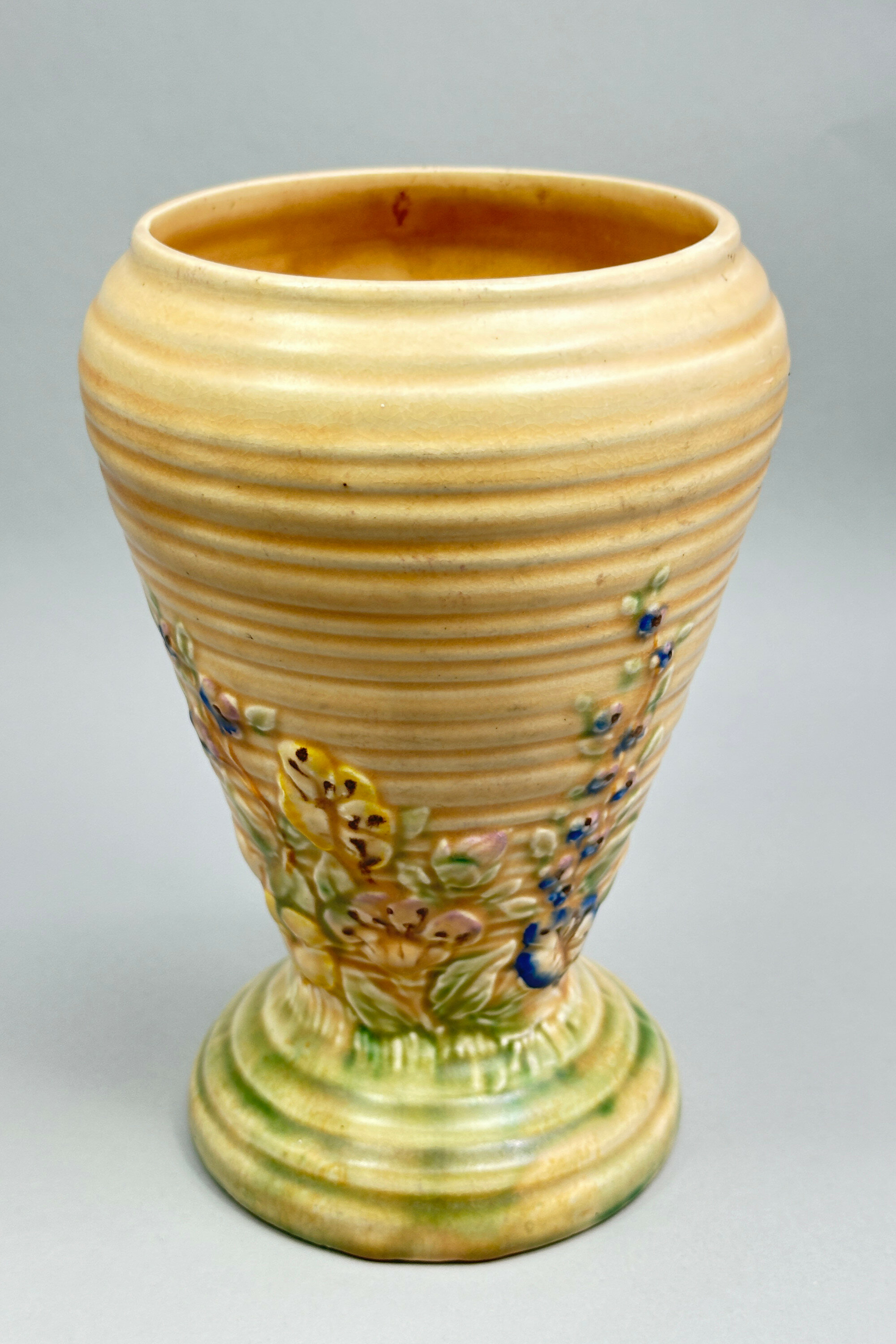
Art Deco Vase, Springtime, Price Brothers, Staffordshire, 1930s
Price: £35Price Bros was an earthenware manufacturer established at the Crown Works, Burslem, Staffordshire, England, in 1896 by the Price brothers. They specialised in tabletop accessories and teapots and success was rapid such that in 1934 they moved to larger premises at the Top Bridge Works in Longport, where they became known as Price Bros Ltd. A close association with another firm, Kensington Potteries, was finally cemented when the two firms merged in 1962 taking on the name ‘Price and Kensington’ and continuing to manufacture their popular wares to the present day. This vase is typical of the decorative pieces which Price Bros produced during the 1930s and, as with so much of the pottery produced at that time, it reflects the Art Deco styles, particularly in the semi abstract shape. This vase was mould made as can be seen from the joins at each side (see image 7) but there is nothing mechanical about the finished result with its pleasing combination of colour and decoration.
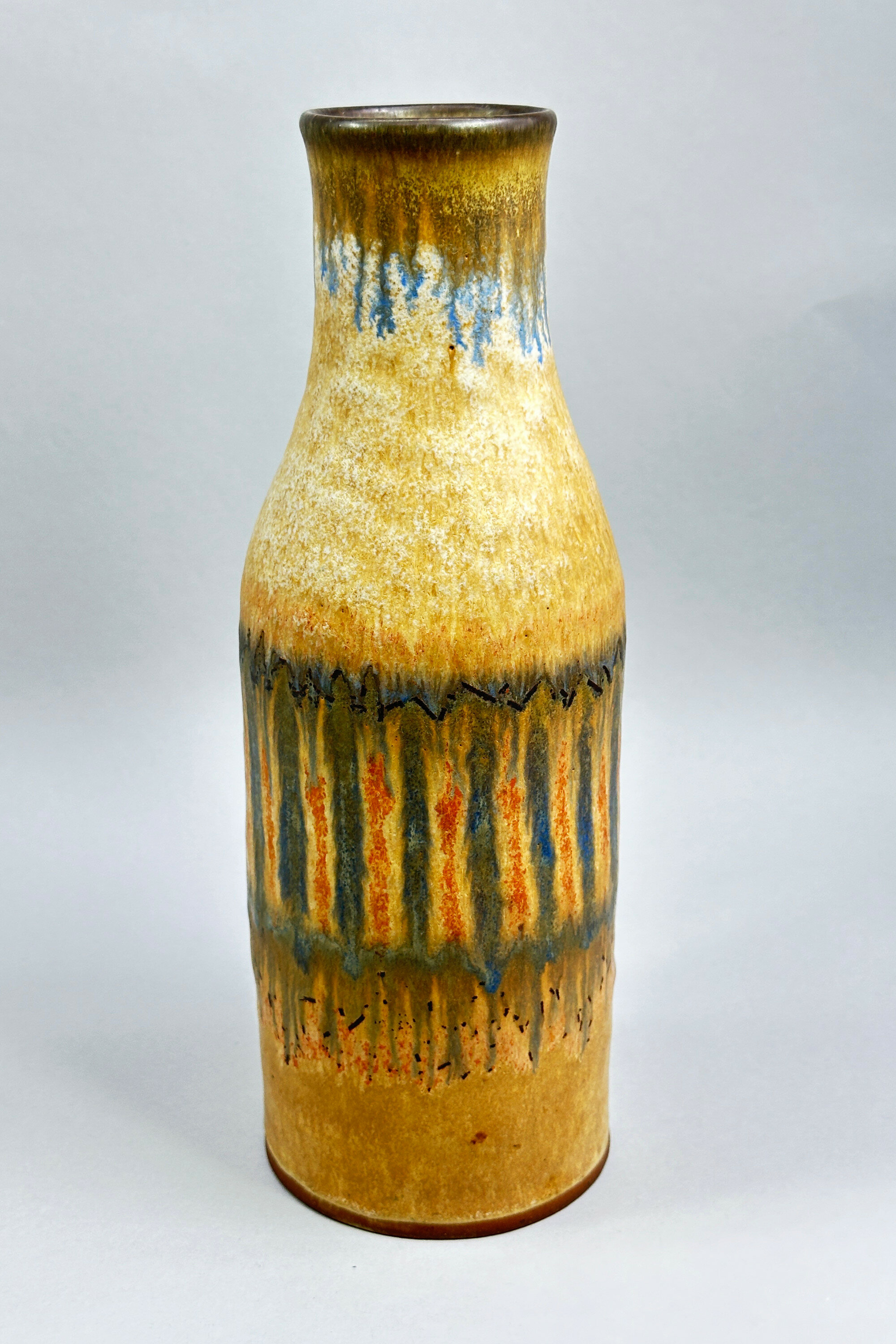
Studio Pottery Vase signed Kamini, Greece, 1970s
Price: £45Although ‘Kamini’ is both the Greek word for a kiln and the name of a village on the Greek island of Hydra, it actually stands here for the Greek firm of that name whose registered office was at Kallithea, a suburb of Athens. The Kamini pottery produced a wide range of appealing but often slightly rustic wares in the 1970s, many with the splash glaze effects we see here and all stamped with the firm’s name. This vase stands out somewhat for the simple lines of its form and the variety of effects in its decoration with a particularly pleasing palette of colours and demonstrates that this Mediterranean pottery could well rival at times the work of some of its European competitors.
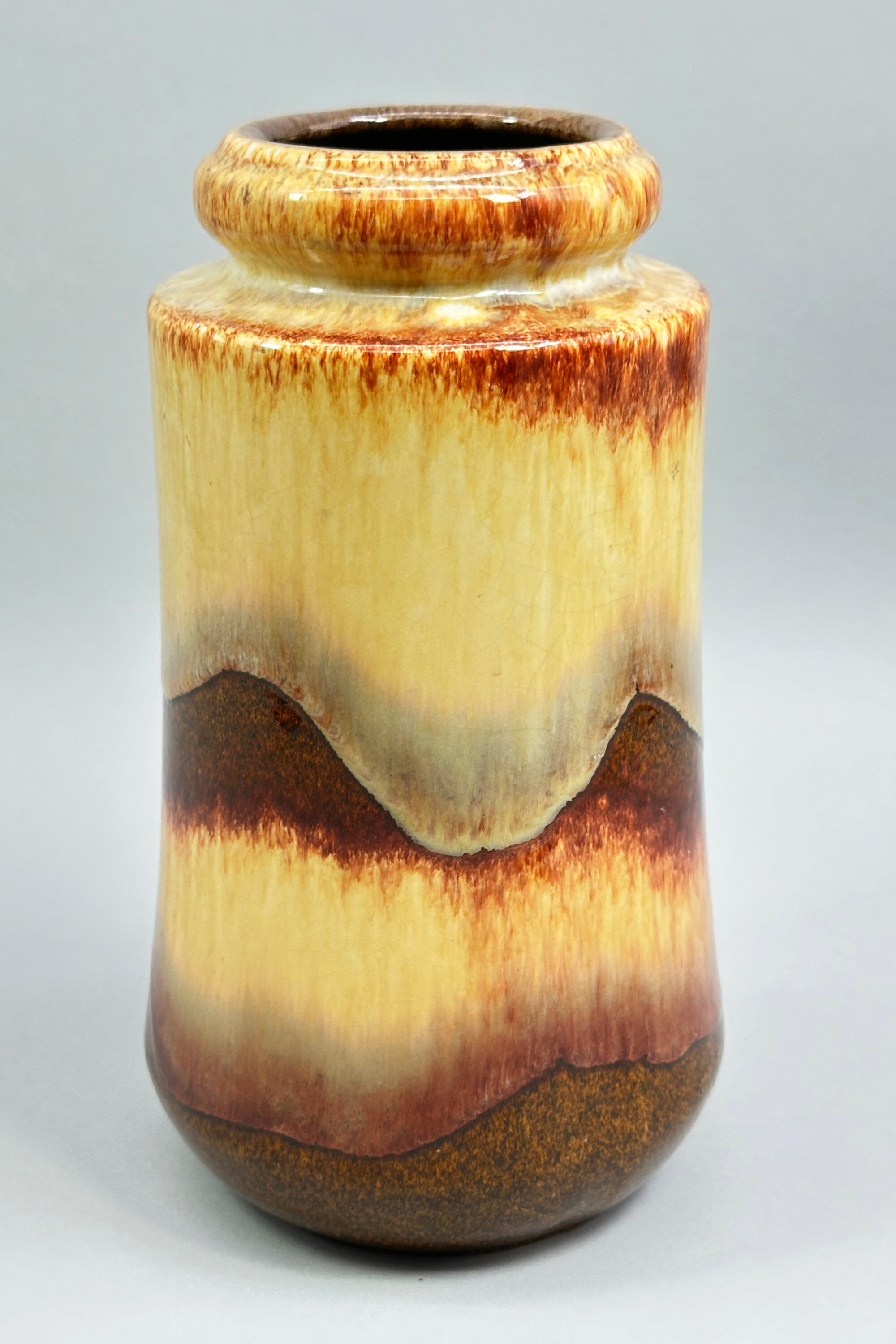
West German Studio Pottery Vase, Scheurich, 1960s
Price: £35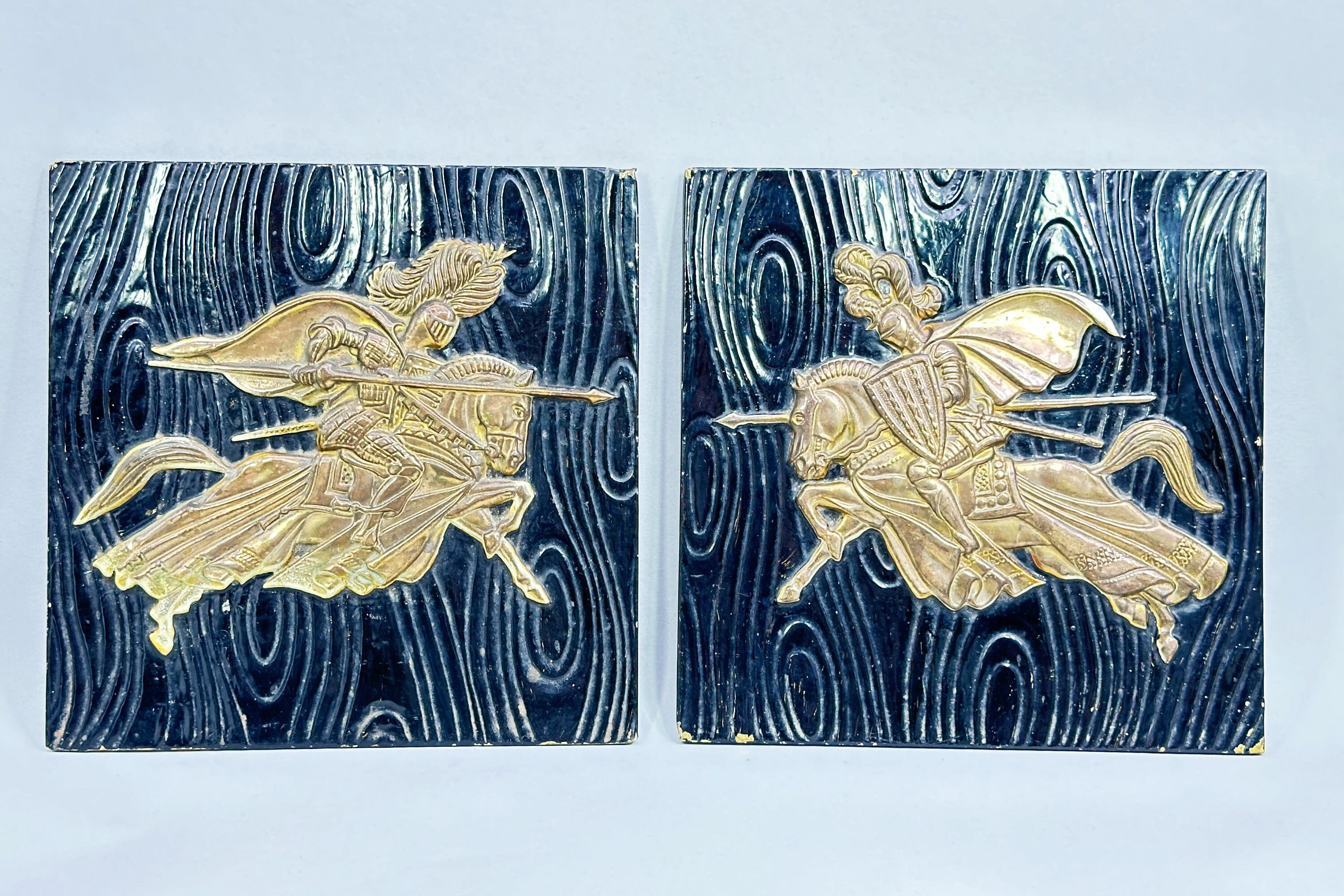
Pair of Brass Wall Plaques of Jousting Knights, Peerage Brass, mid C20th
Price: £45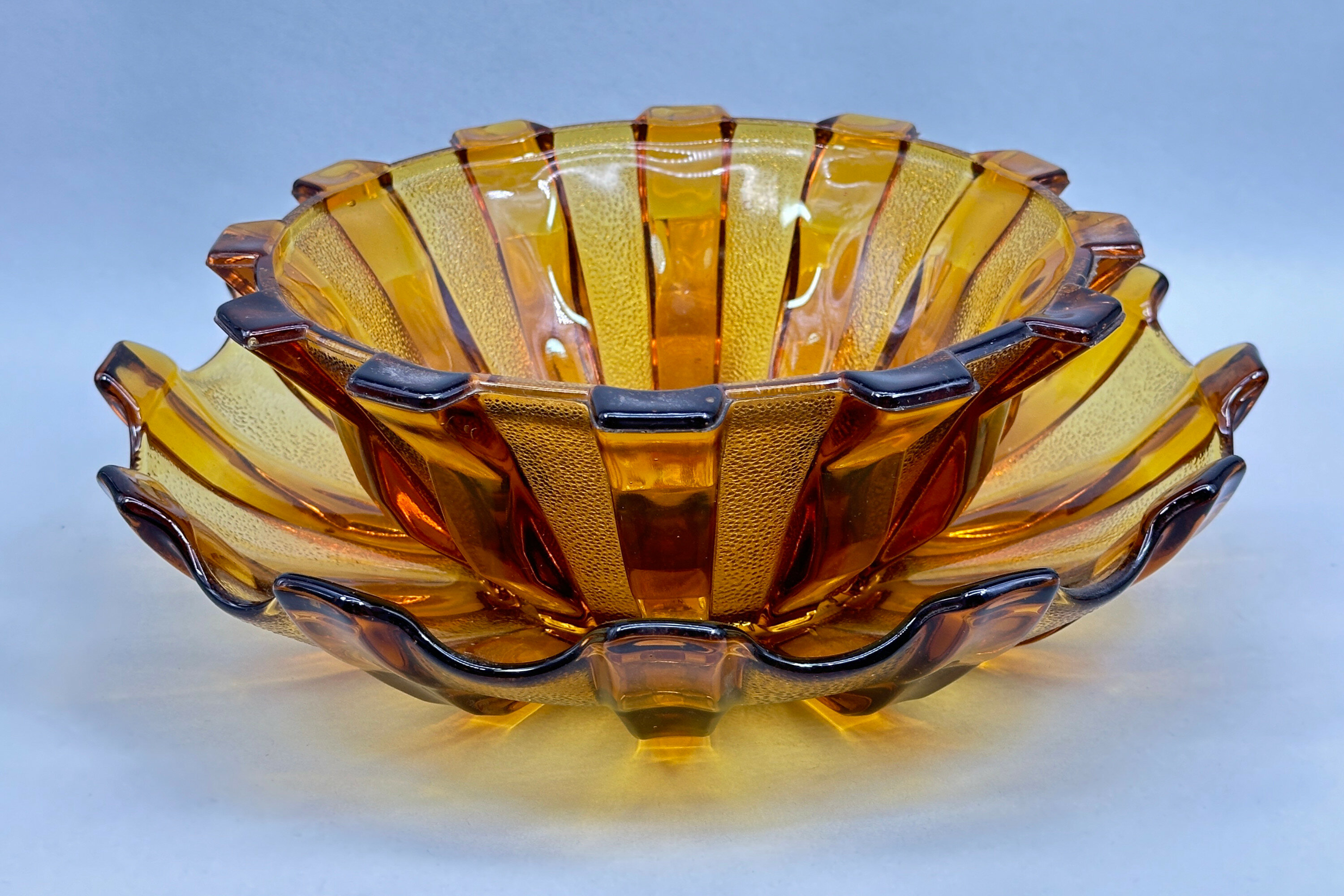
Amber Glass Bowl and stand, Stölzle Hermanova Hut factory, Czech 1930s
Price: £55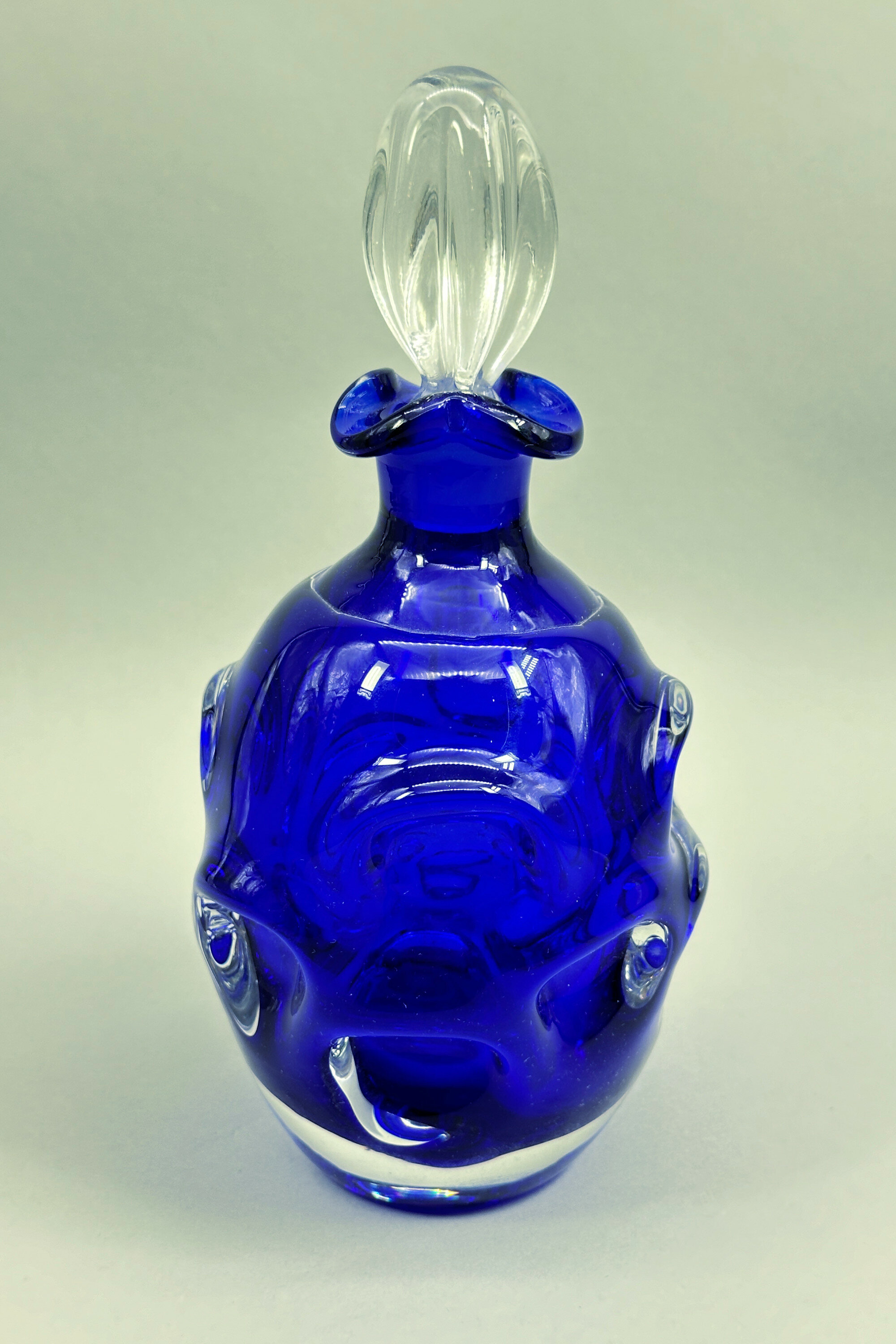
Aseda Glasbruk Blue Glass Bottle and Stopper by Bo Borgstrom, 1960s
Price: £55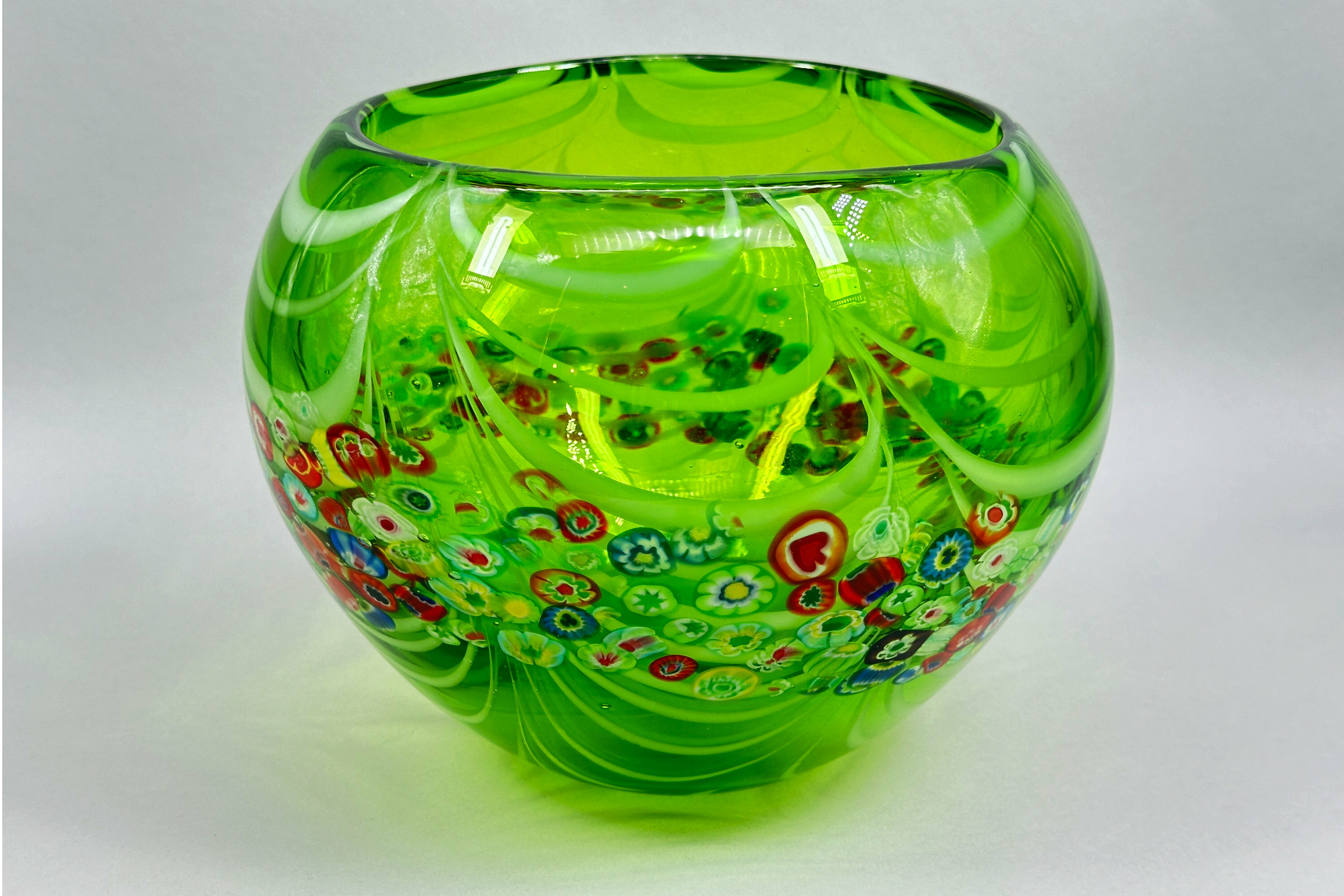
Green Murano Millefiori Latticino Glass Bowl, 1960s
Price: £150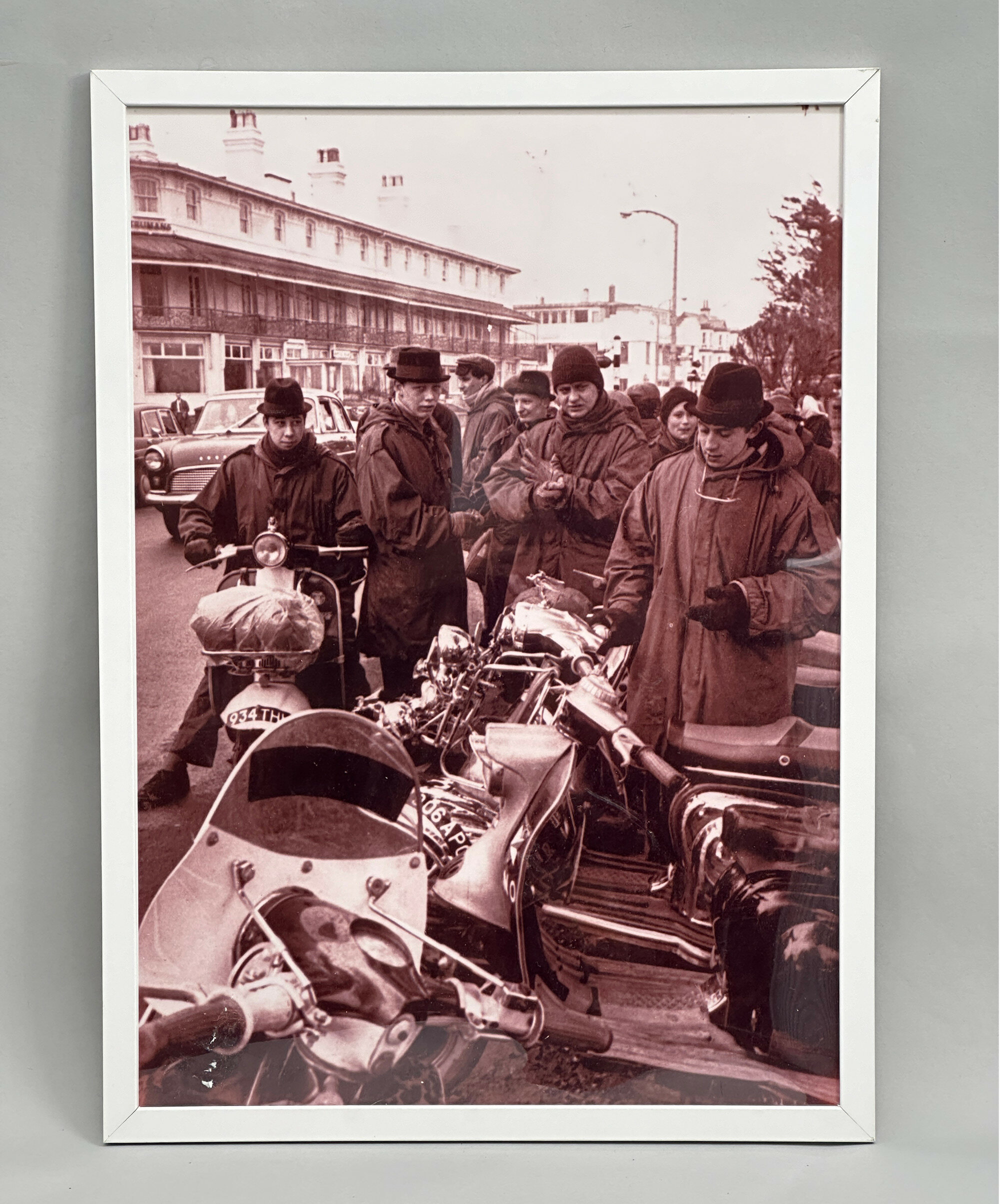
Mods at Clacton 1964, Photograph by Terry Disney for the Daily Express
Price: £45It was, though, a newsworthy confrontation and press photographers were sent in to record events. The most notable of these was Terry Disney who worked for the Daily Express newspaper. Disney was a distinguished and prolific photographer from the 1960s onwards and many of his striking images survive, not least those capturing the major personalities of the entertainment world at the time, including the Beatles themselves. His images of the ‘mods’ (he seemed less interested in the ‘rockers’) capture the atmosphere of the scenes vividly and this photograph is an excellent example of his work on that Easter weekend (for another see image 5). Often only obtainable under licence, this print is an ideal opportunity for a collector to acquire a near iconic image. It is offered with a very basic frame which might well be replaced with something which would enhance the photograph more sympathetically.
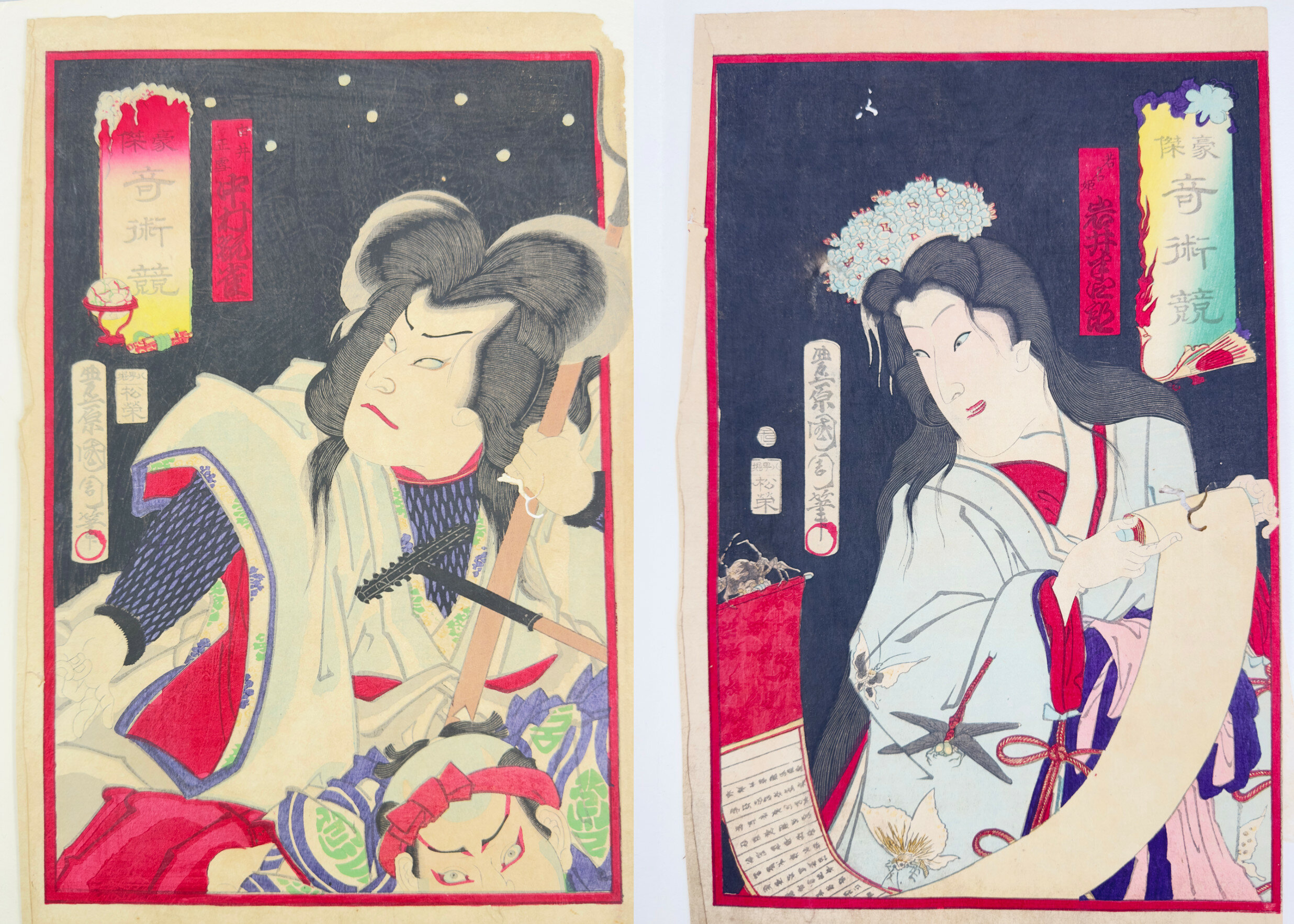
Two Japanese Woodblock Prints by Toyohara Kunichika, second half C19th
Price: £75Toyohara Kunichika achieved great fame and distinction a Japanese print artist. Born in 1835 he studied under Toyohara Chikanobu and then Utagawa Kunisada (also known as Utagawa Toyokuni III) eventually using a combination of both his teacher’s names to create his own professional one. At first he worked within Kunisada’s studio and when his teacher died in 1865 was asked to design two memorial portraits of him. The beginning of the Meiji era (1868-1912) saw Kunichika issuing his own prints, often in themed series and he became known in particular for his portrayals of kabuki actors, indeed he regarded the theatre as almost his second home. A contemporary once wrote ‘"Print designing, theatre and drinking were his life and for him that was enough.’ He achieved great fame and was rated as one of the masters of woodblock printing. Contemporary observers noted Kunichika's skilful use of colour in his actor prints, but he was also criticized for some of his choices for unlike most artists of the period, he made use of strong reds and dark purples rather than the softer colours used previously, exploiting the recent import of new dyes from Germany. Red, for the Japanese, meant progress and enlightenment so there was probably hidden meaning here. Eventually Kunichika’s lifestyle took its toll and he died in poor health, aged 65. It had been a Japanese custom for people of high cultural standing to write a poem before death. Kunichika's own, inscribed on his grave, reads ‘Since I am tired of painting portraits of people of this world, I will paint portraits of the King of hell and the devils.’ For many years his prints fell out of favour but interest has now revived and Kunichika is regarded as one of the eminently collectible Japanese artists in the field and these two prints are an excellent example of his work.
Each print is accompanied by a printed text on fine paper which presumably describes the character represented. The second of them is accompanied by two sheets one of which has become attached in one small place to the print itself but could probably fairly easily be detached by a restorer. In general there are some typical signs of age with minor losses (illustrated), tears and folding but the colours remain bright and fresh.
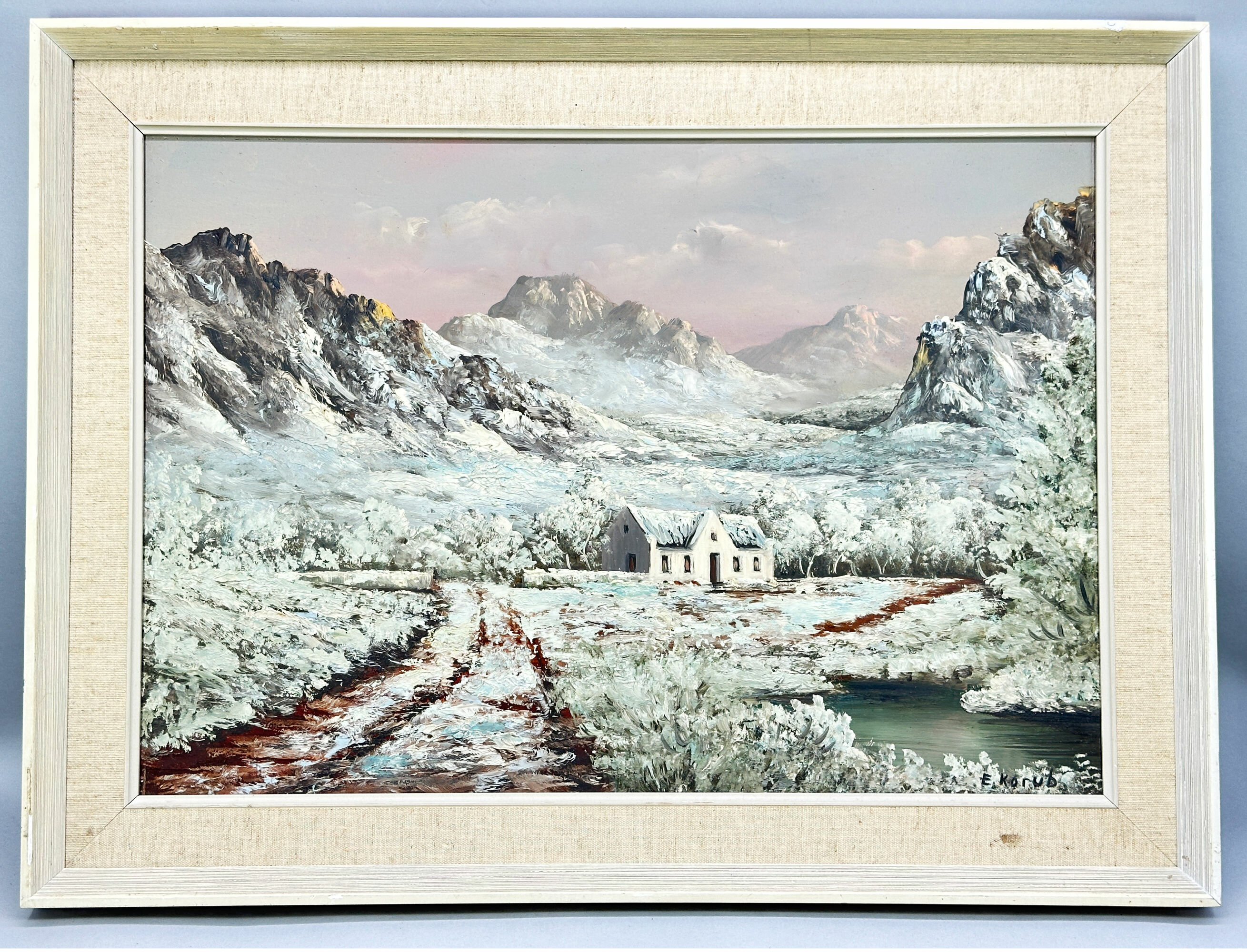
Framed Oil Painting on Board of a Winter Landscape Scene, C20th
Price: £55
Pair of slender green glass Vases with silver decoration, possibly French early C20th
Price: £45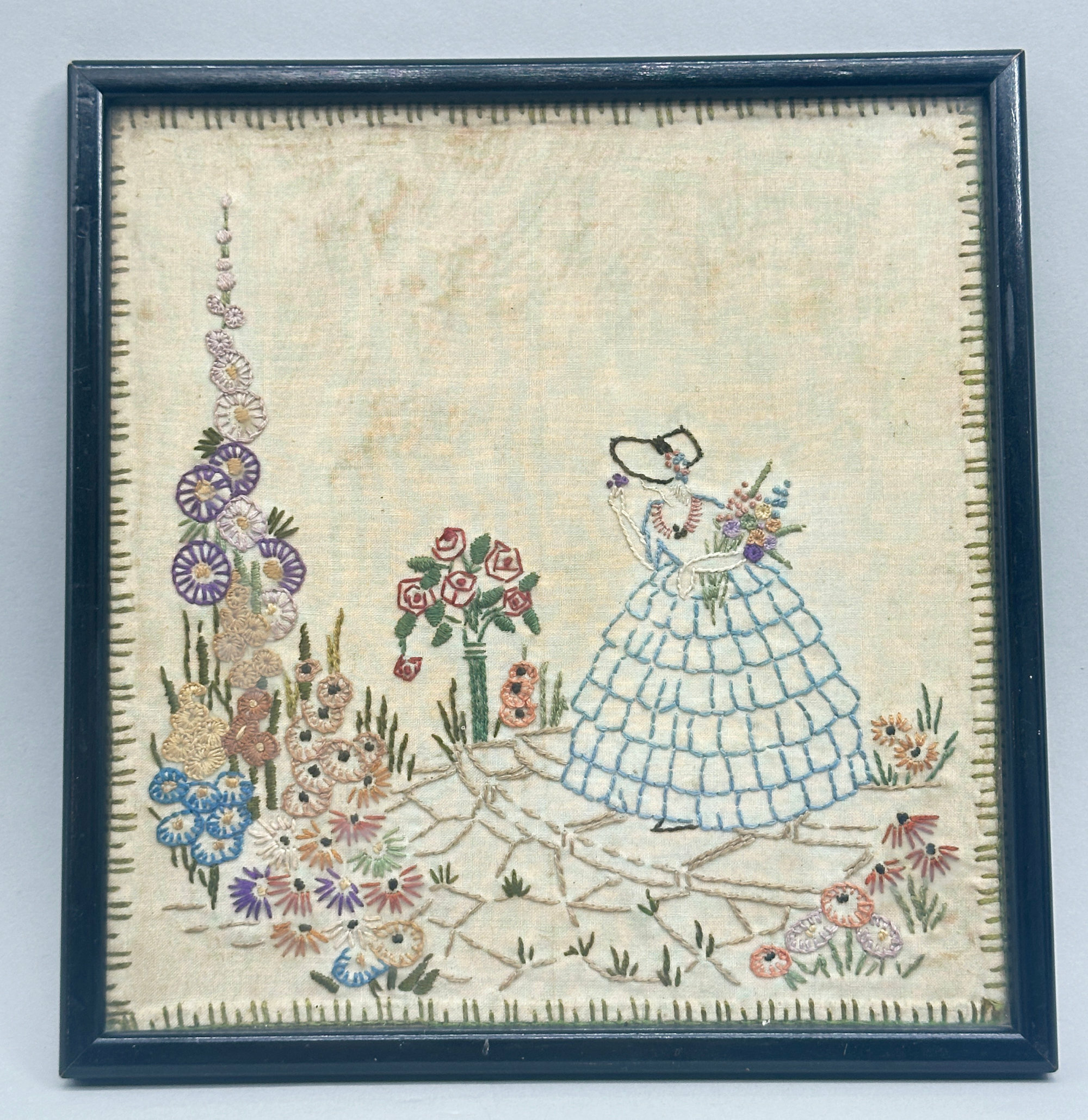
Vintage Needlepoint Picture of a lady dressed in a crinoline, framed, probably 1930s
Price: £25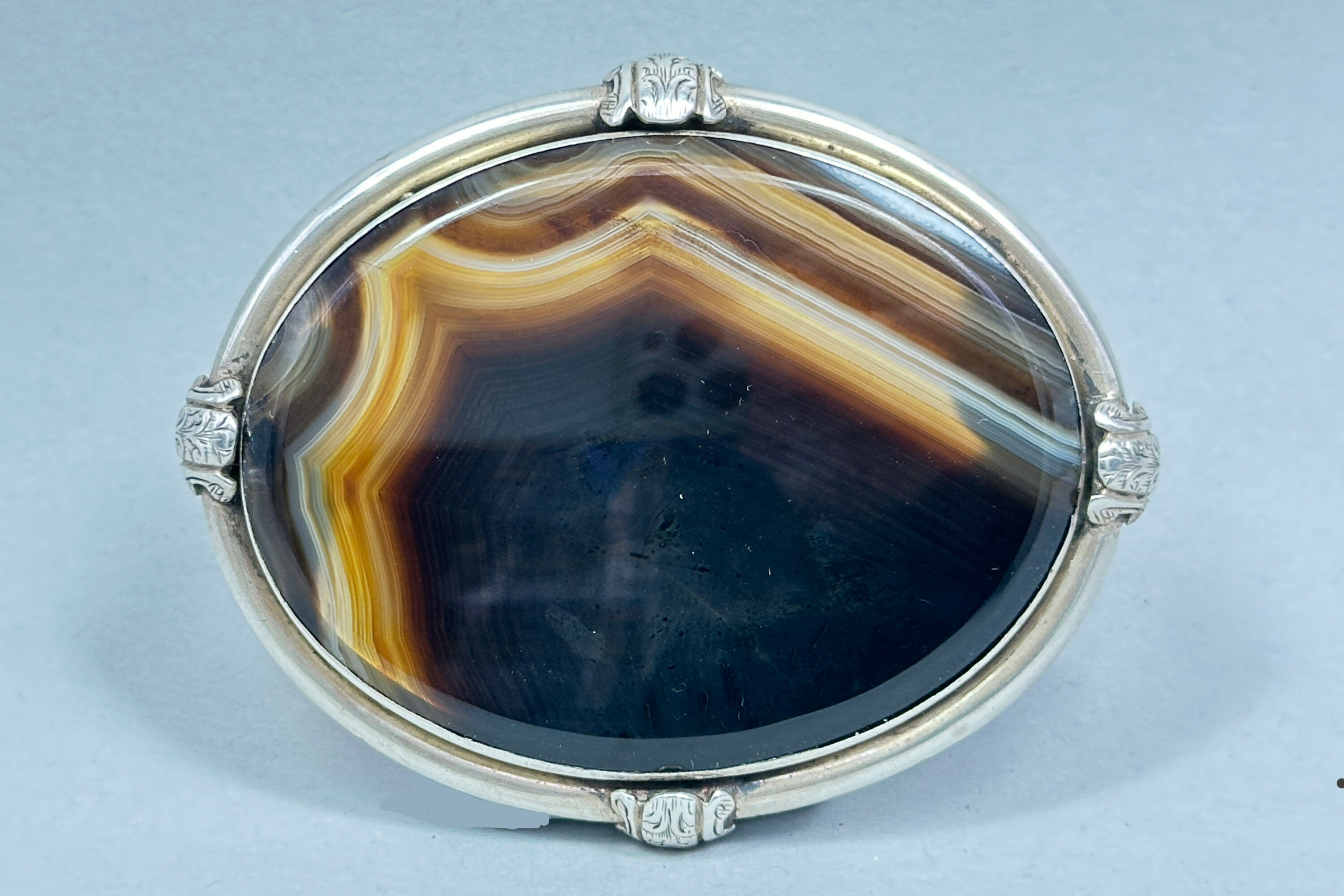
Victorian Silver Mounted Banded Agate Brooch, late C19th
Price: £100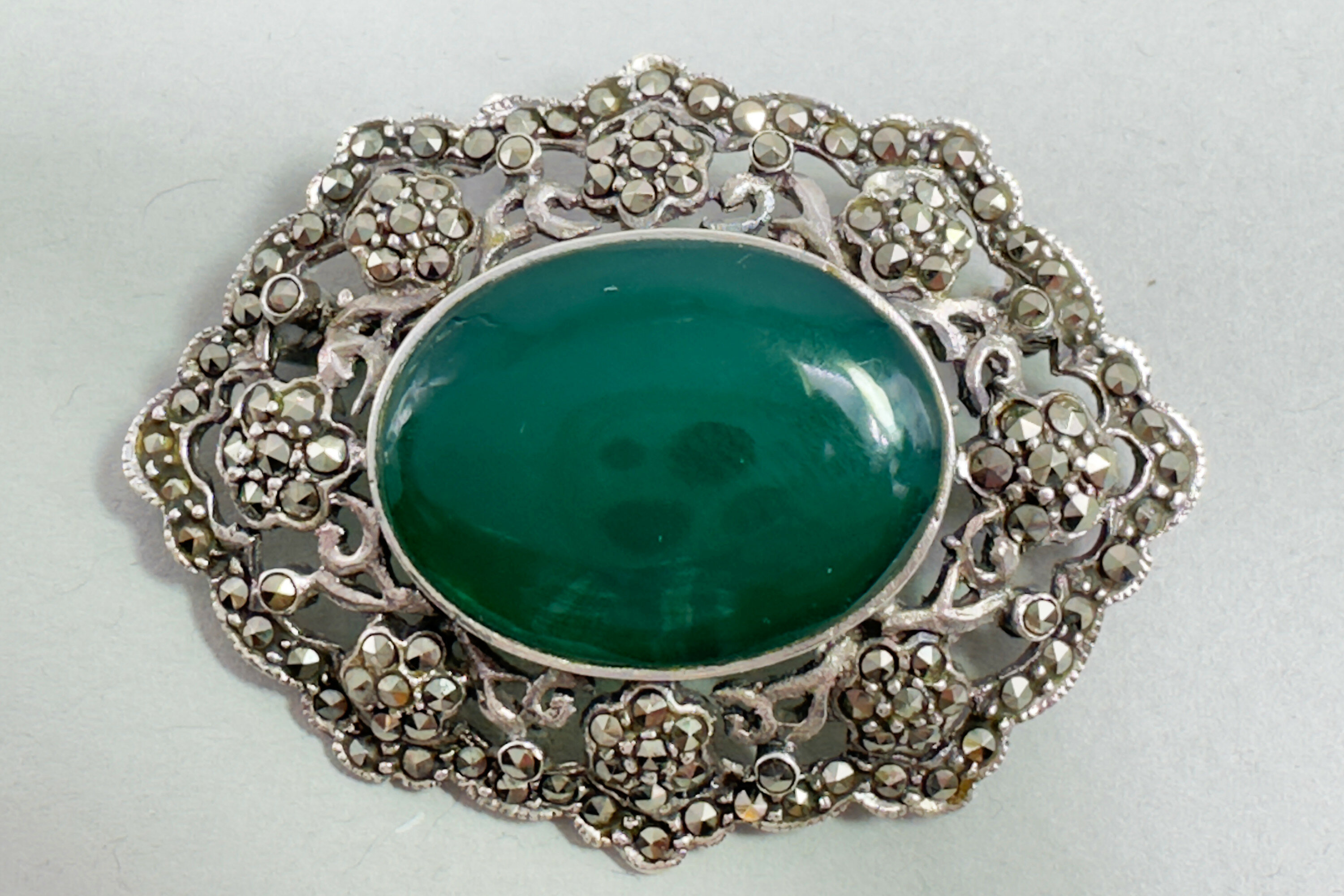
Green Chalcedony silver mounted brooch with marcasite stones, 1940s
Price: £45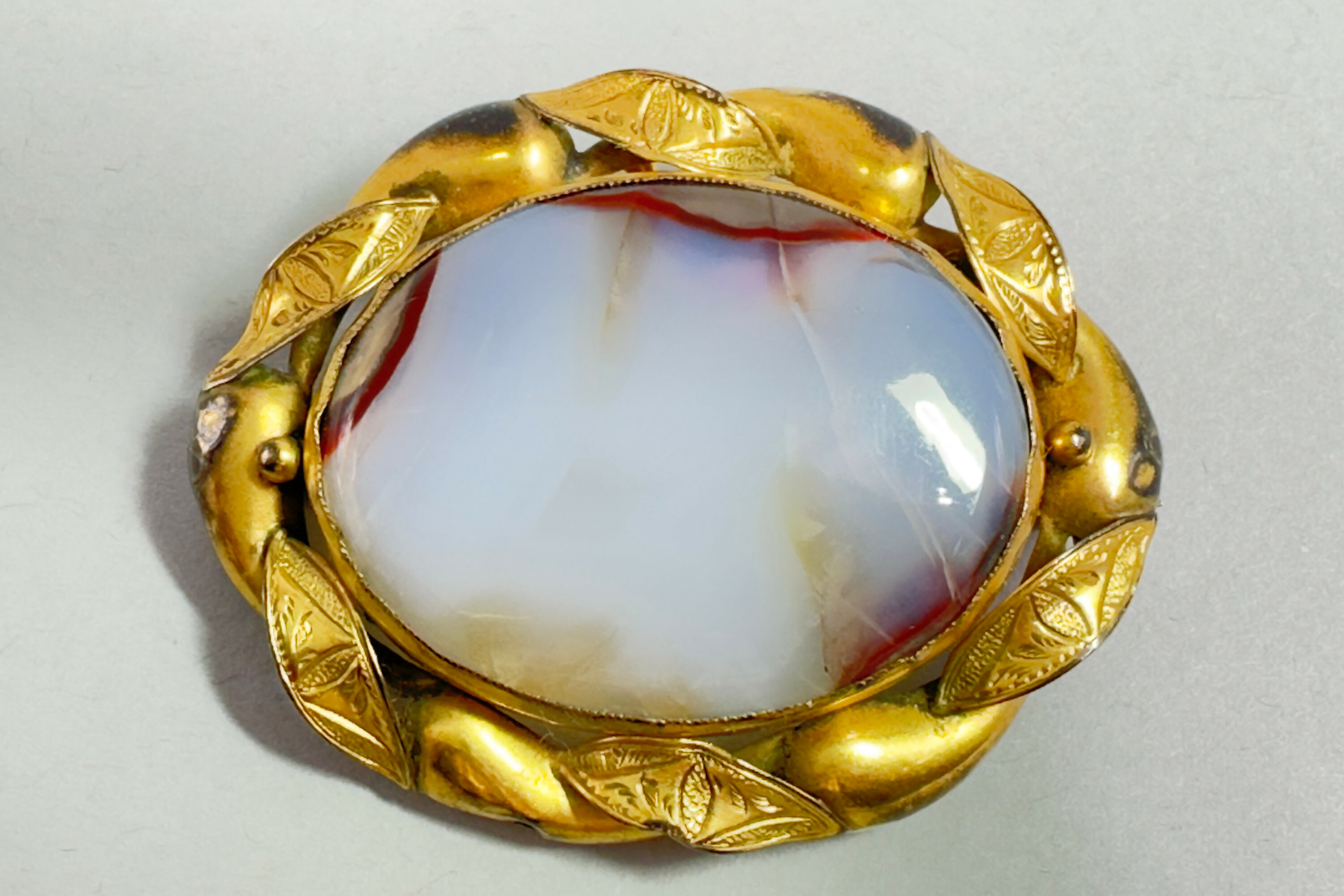
Edwardian rolled gold and white agate brooch, c1910
Price: £45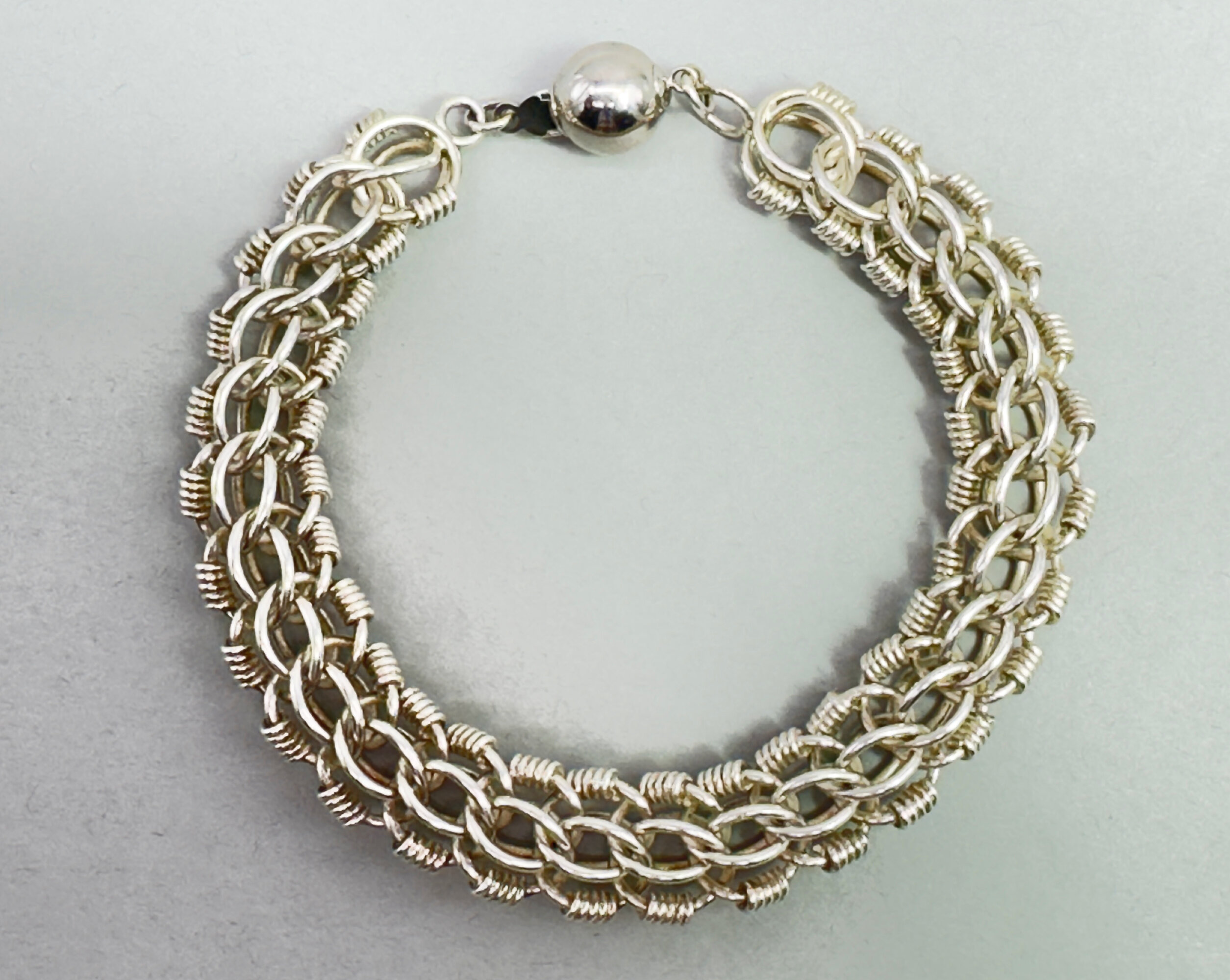
Large silver fancy link Bracelet, modern
Price: £50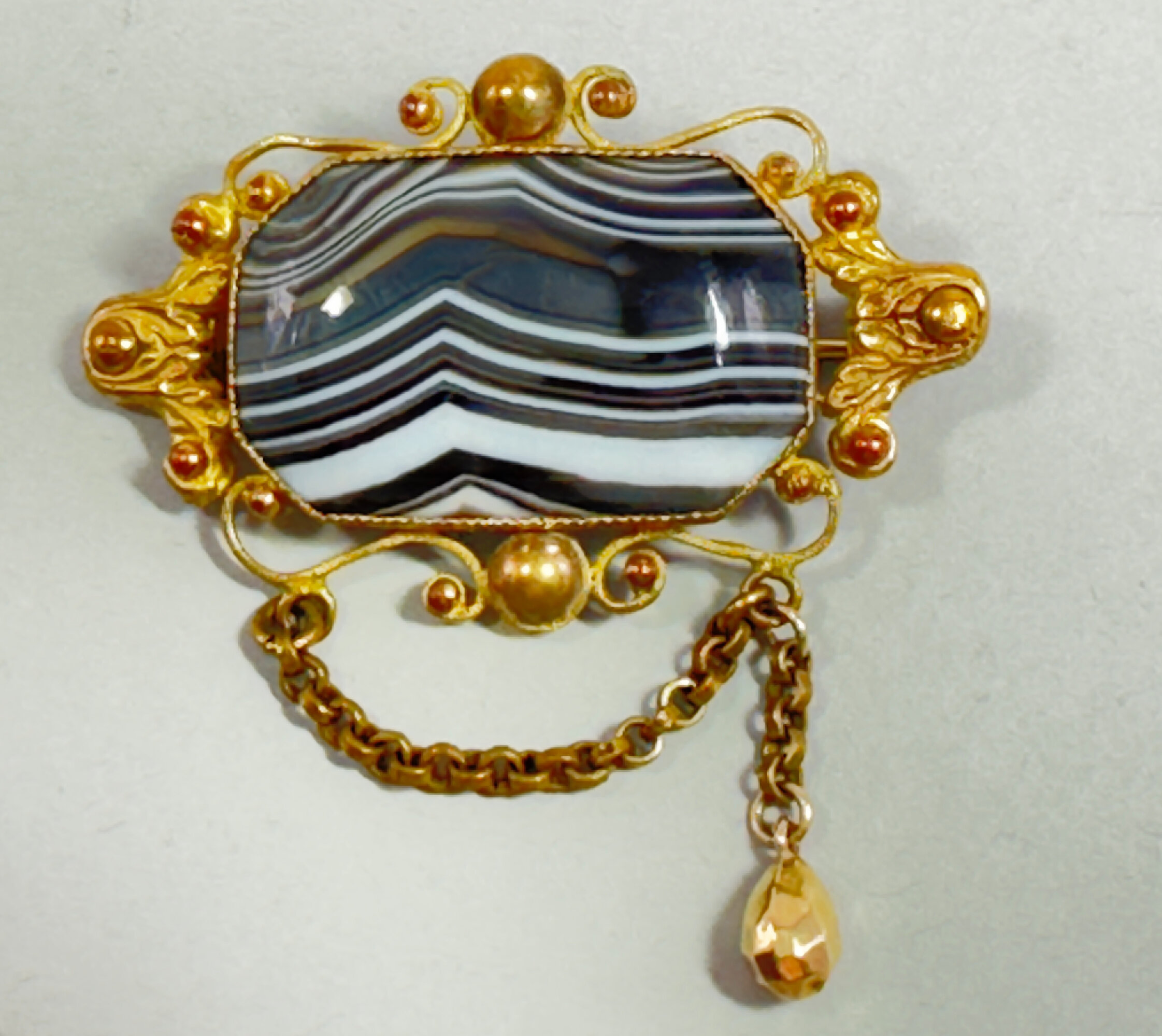
Victorian rolled gold and black and white agate Brooch, English c1920
Price: £50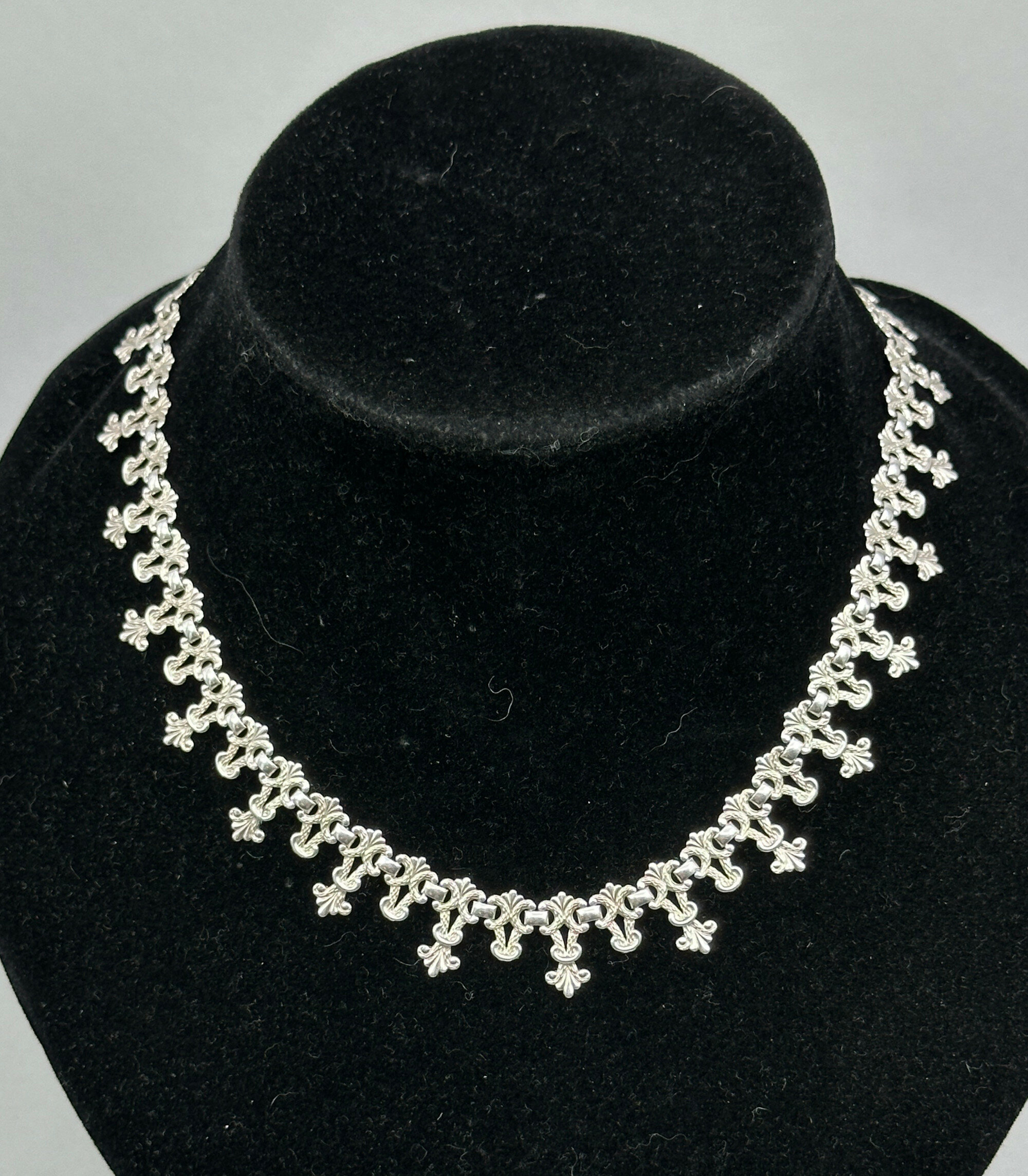
Edwardian silver fleur-de-lis collar necklace circa 1910
Price: £85Please note that the necklace is not marked for silver and has not been tested.
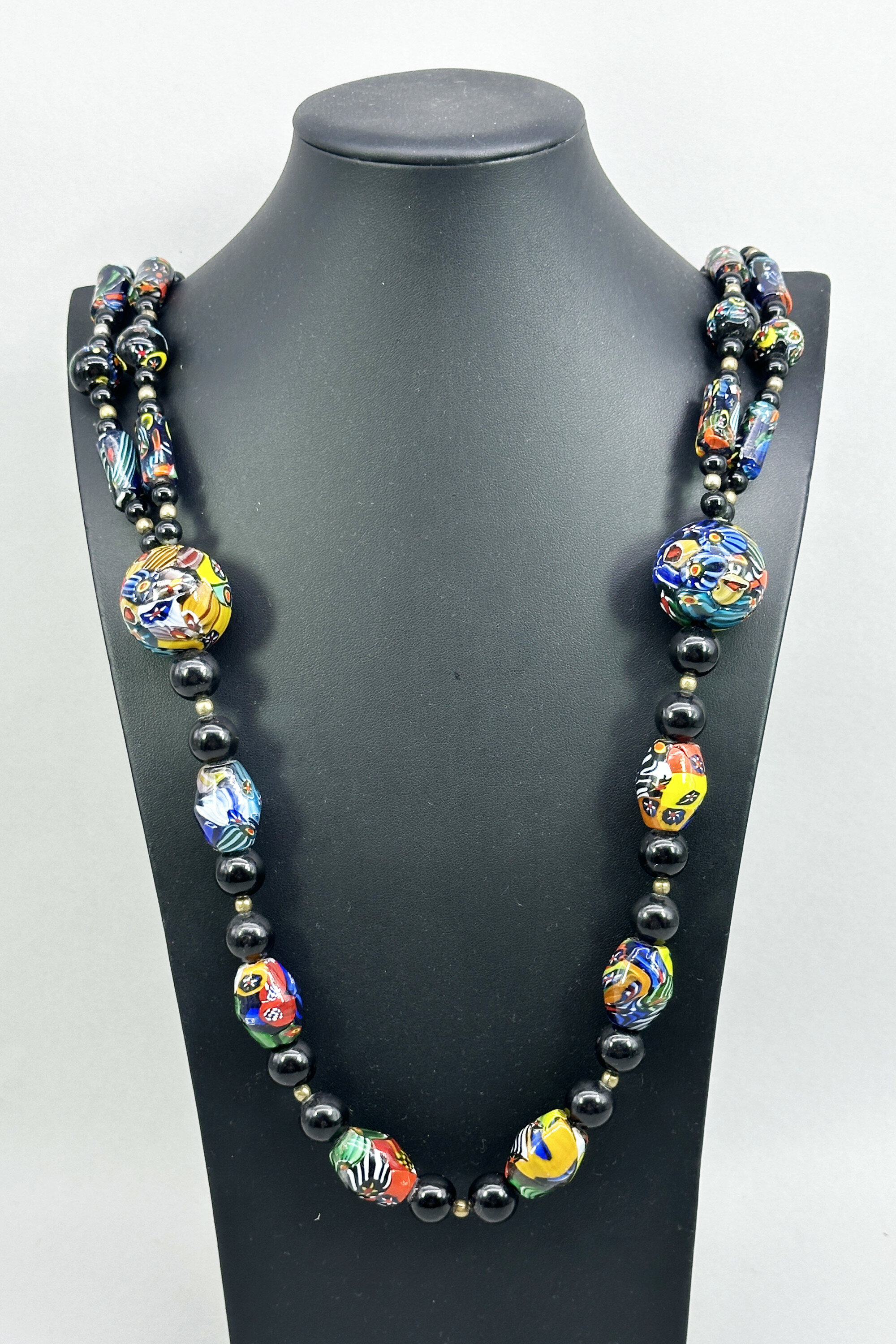
Monumental Mille Fiore glass bead necklace c1970
Price: £175